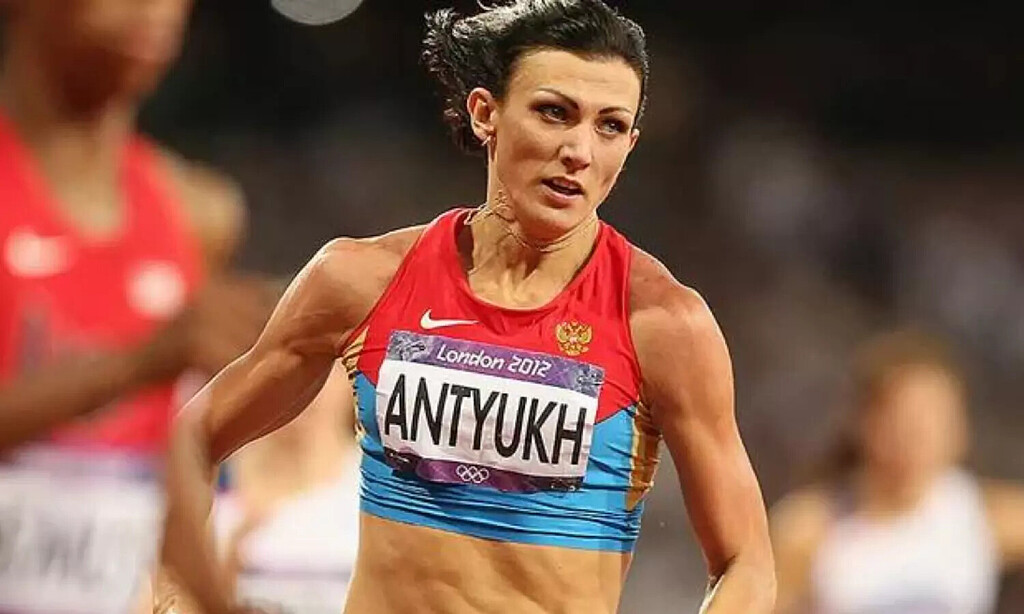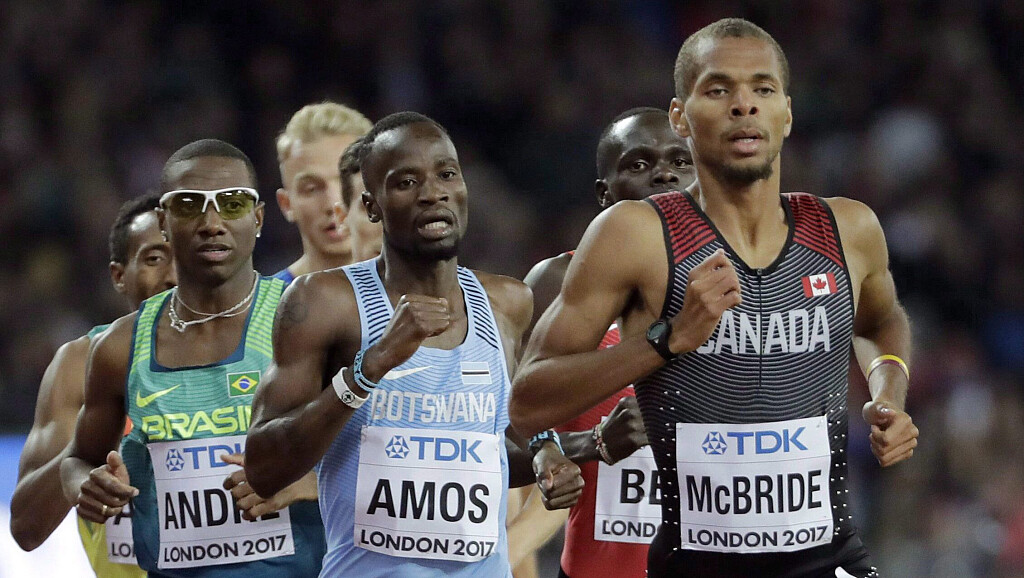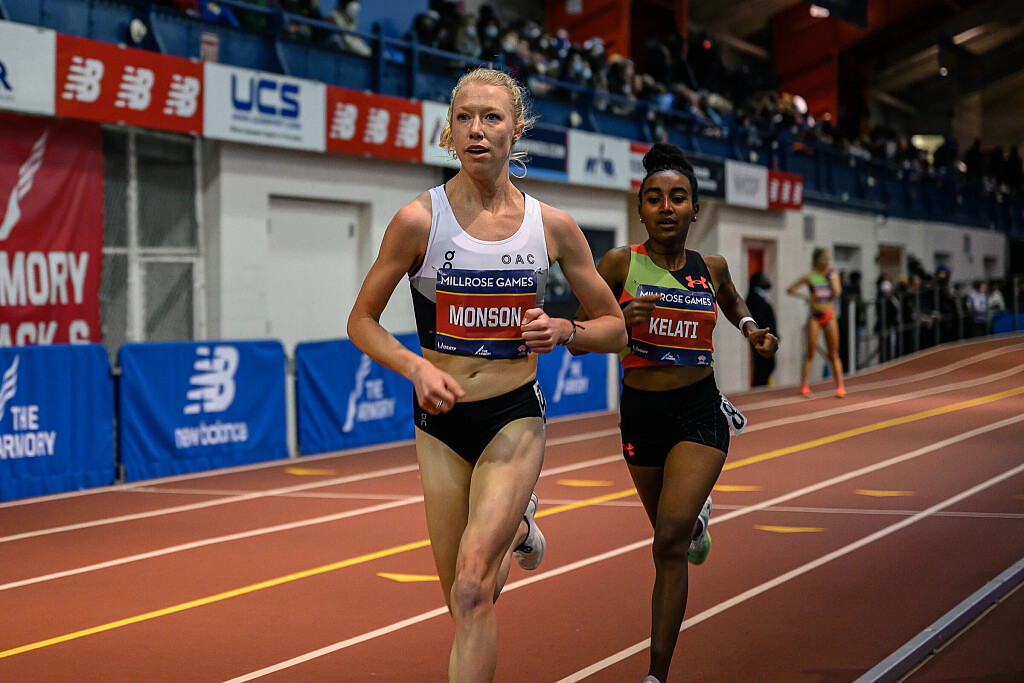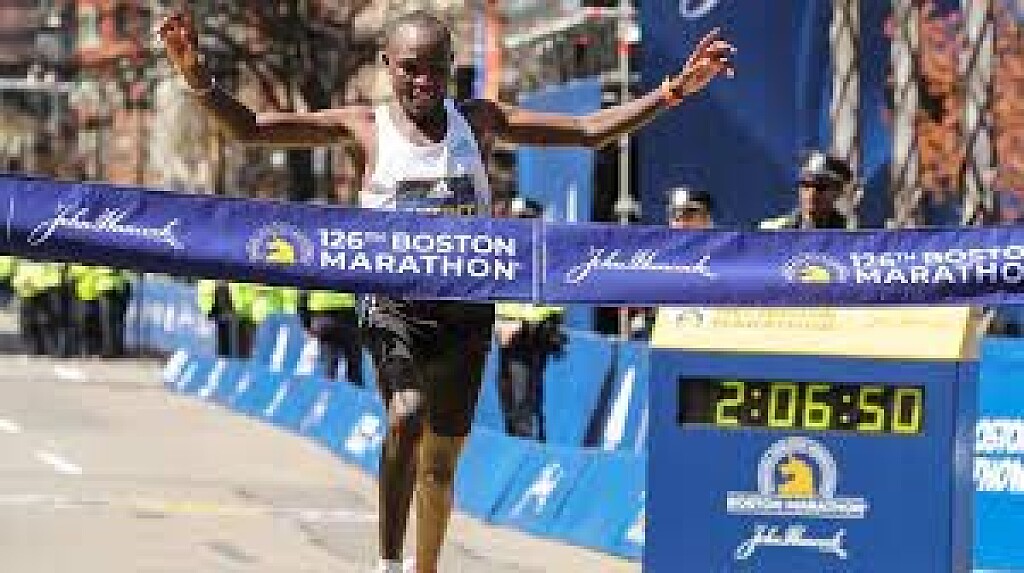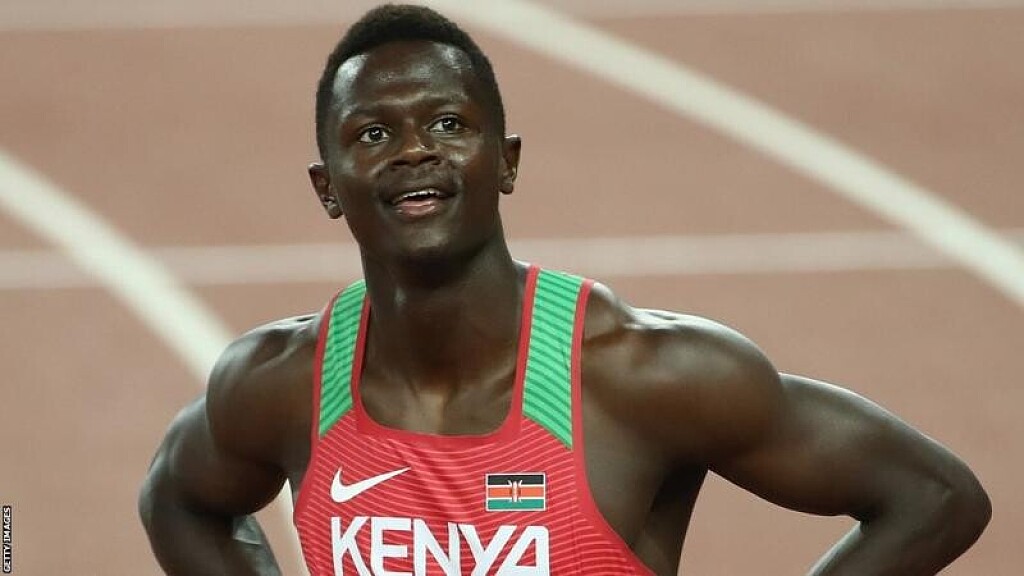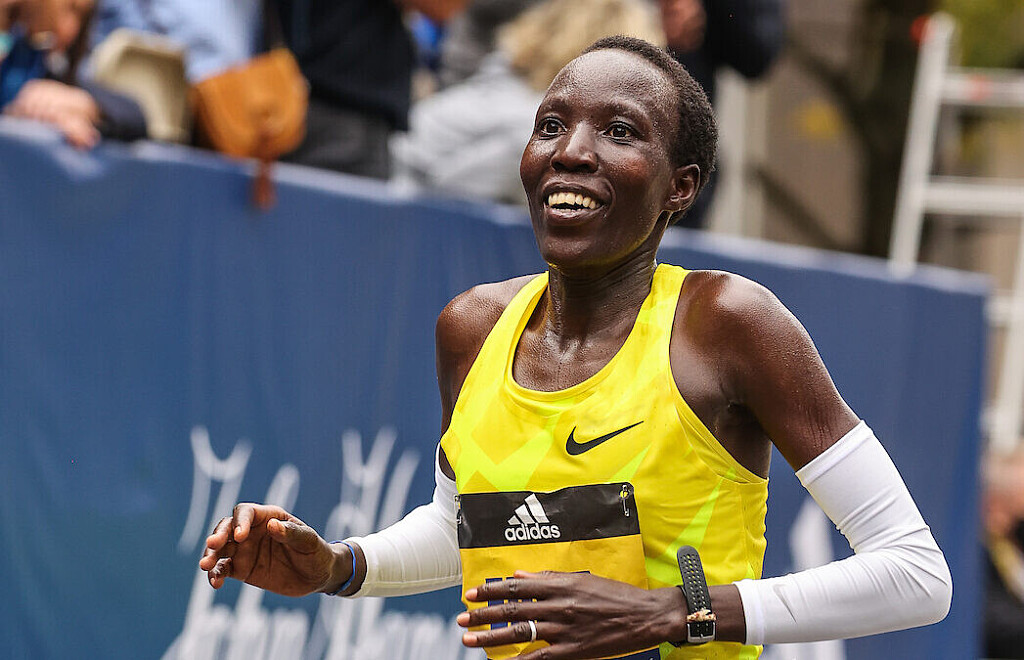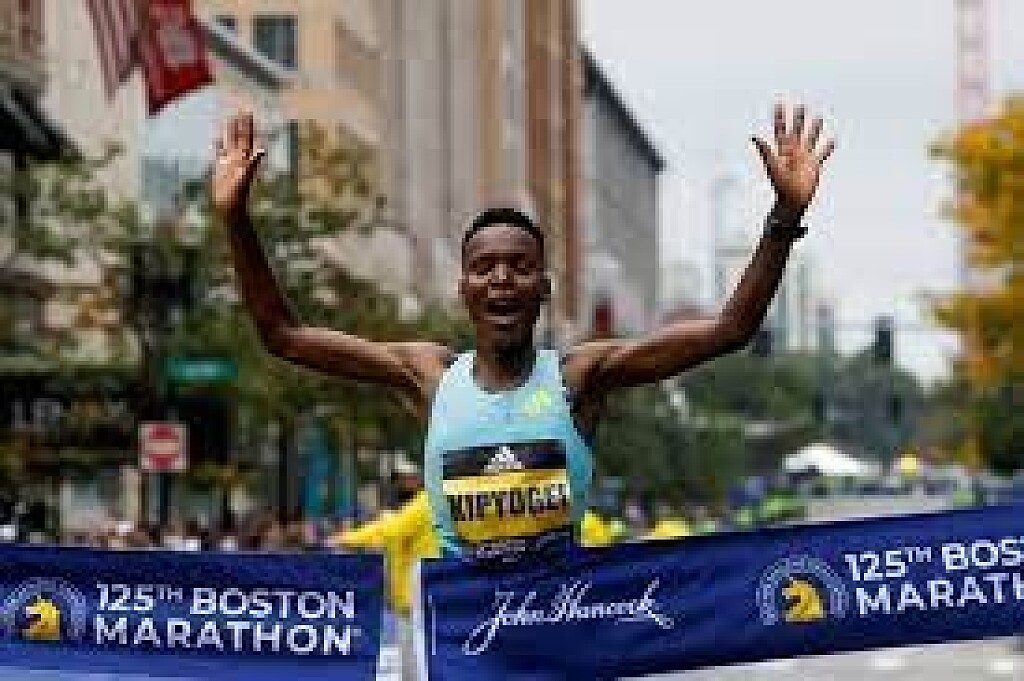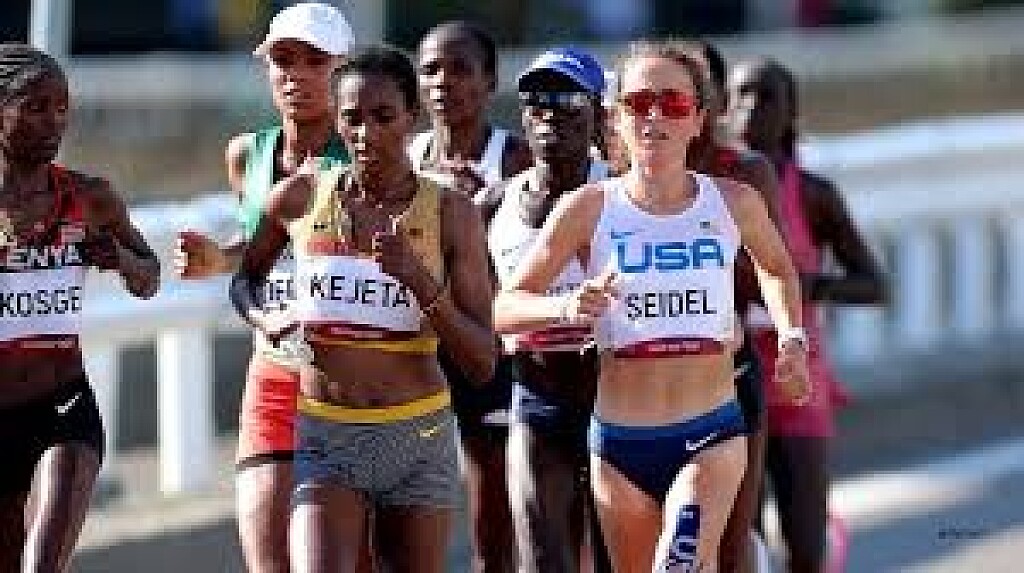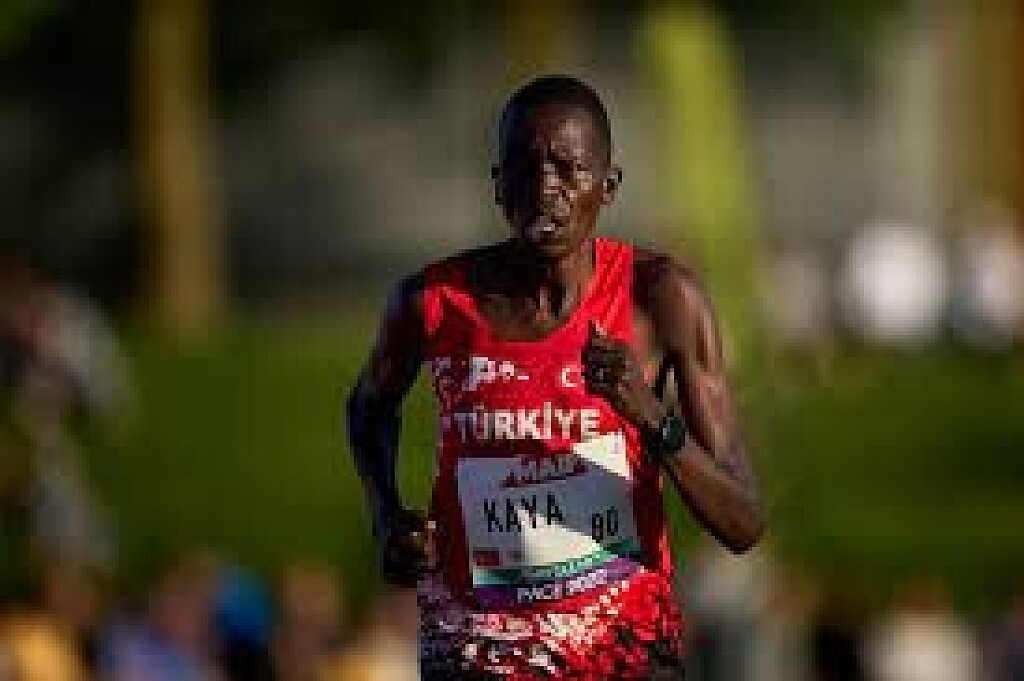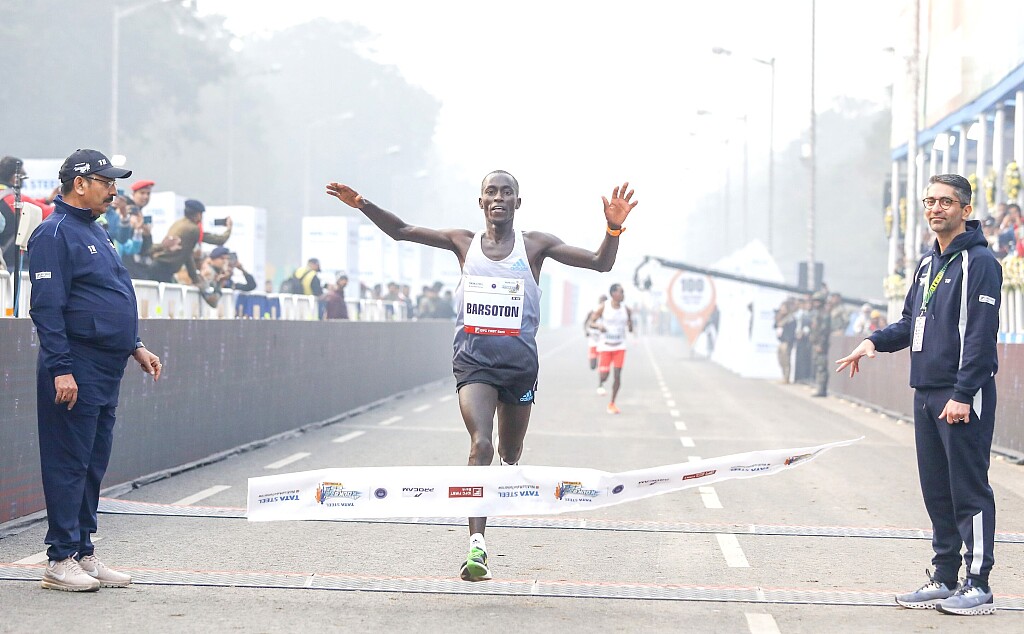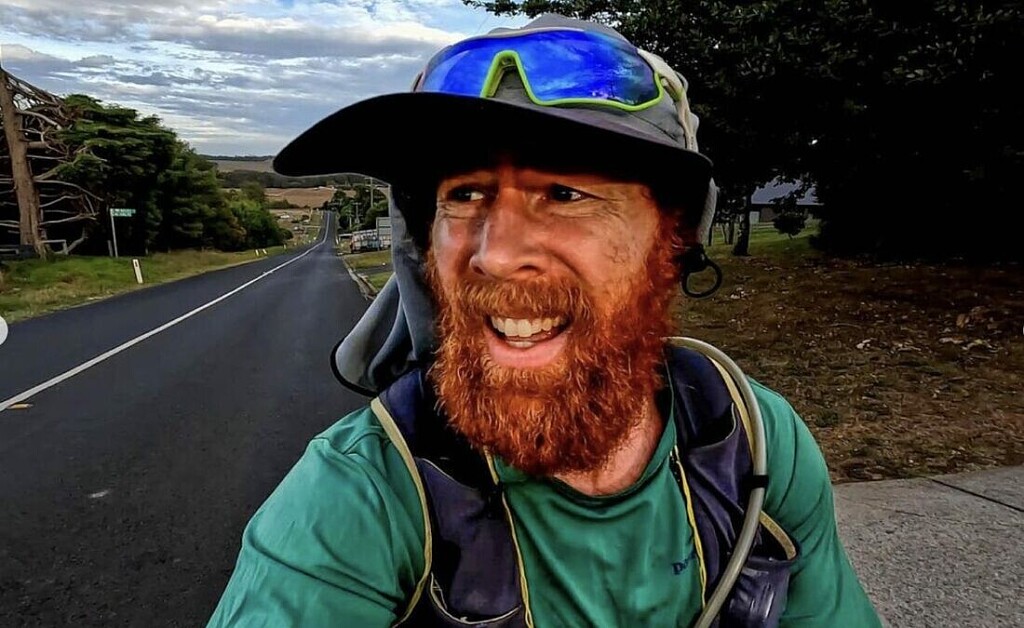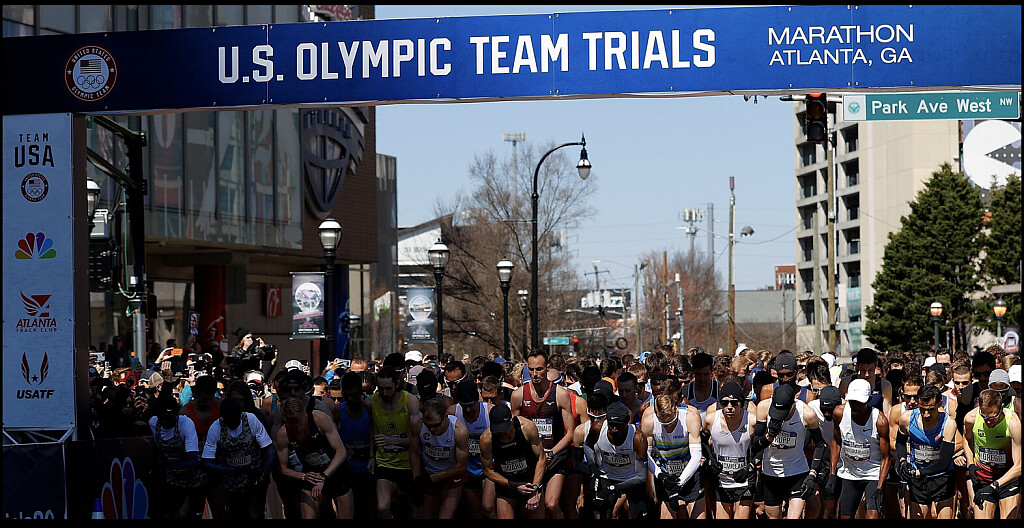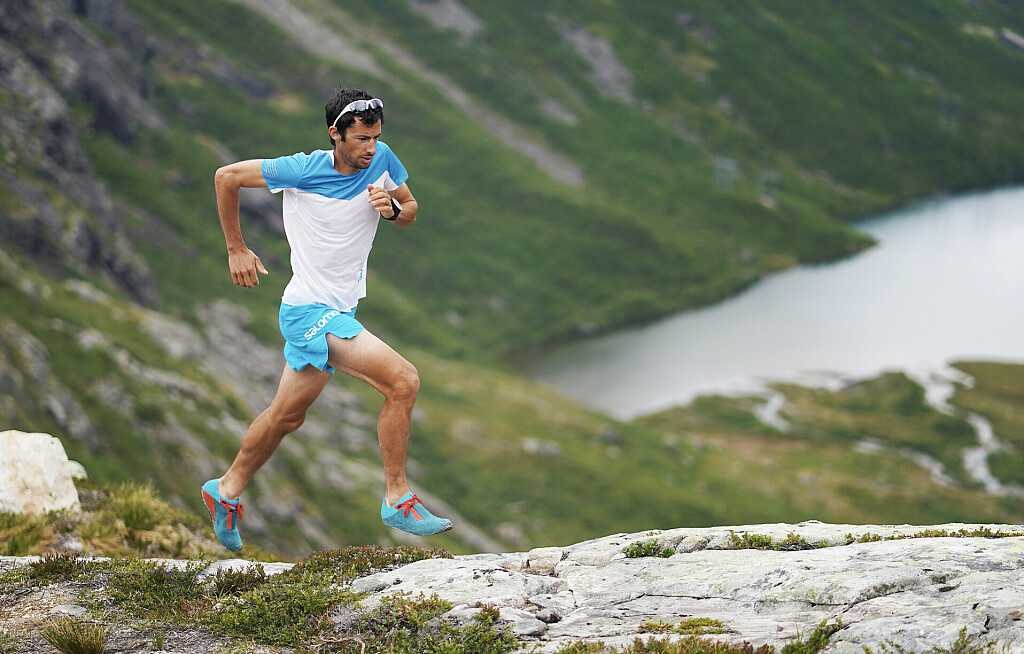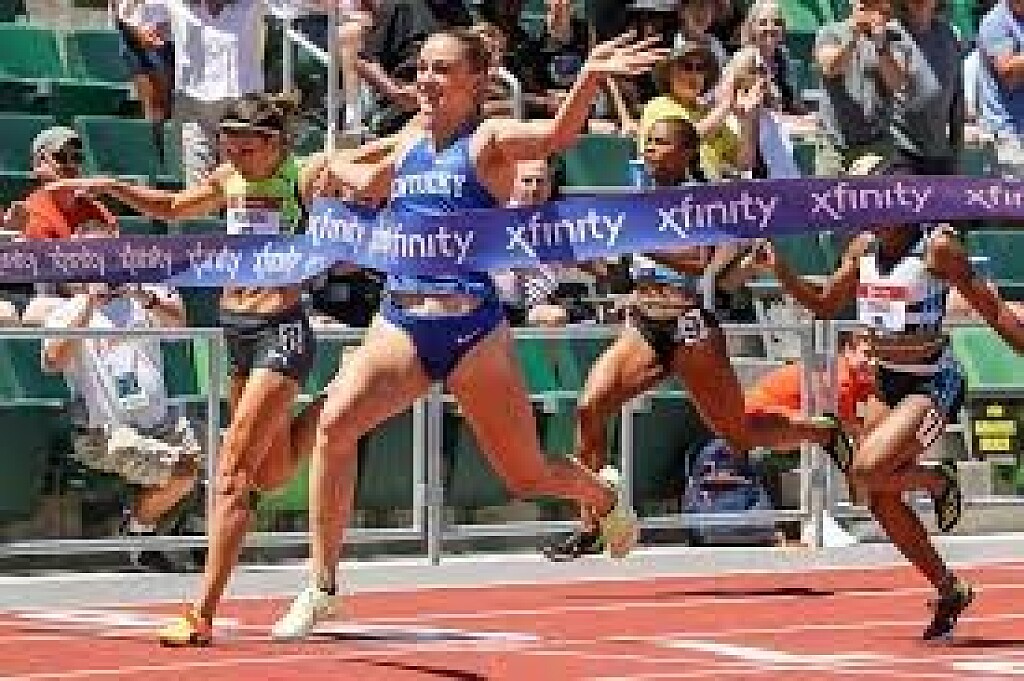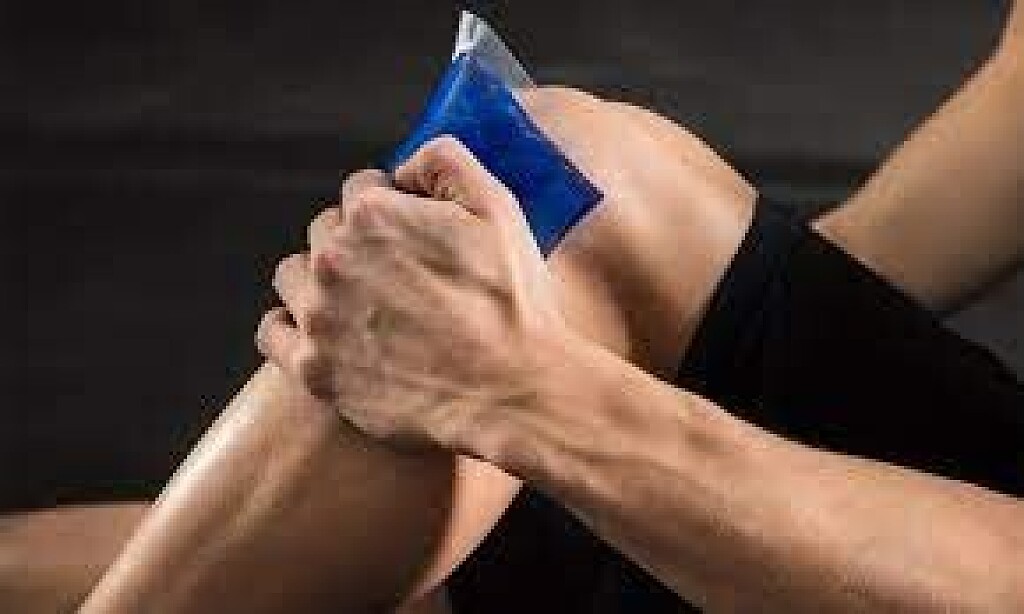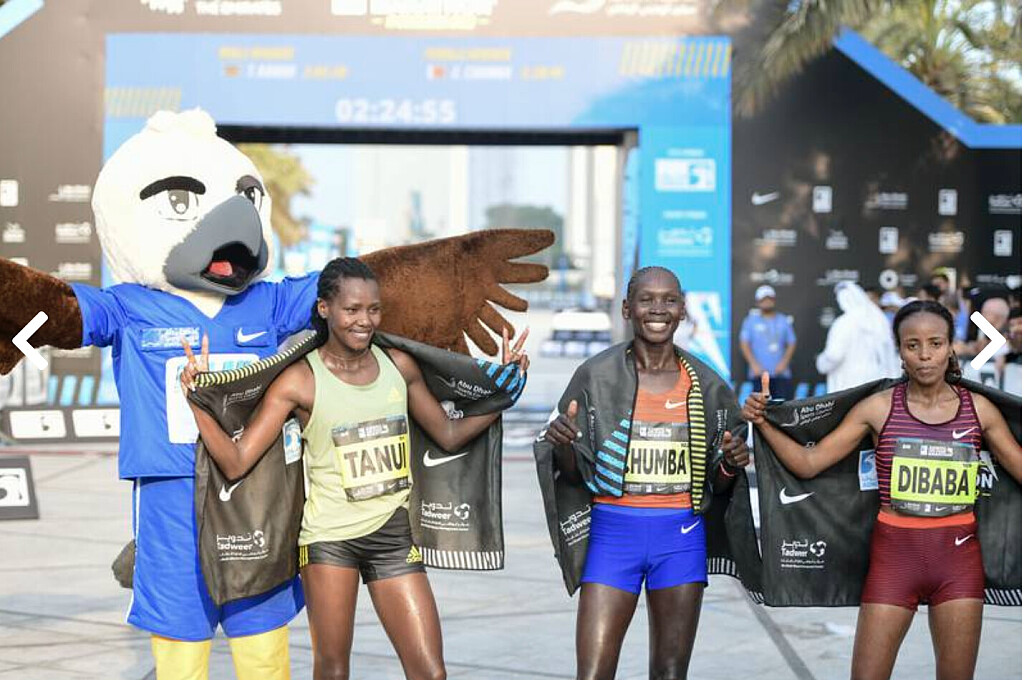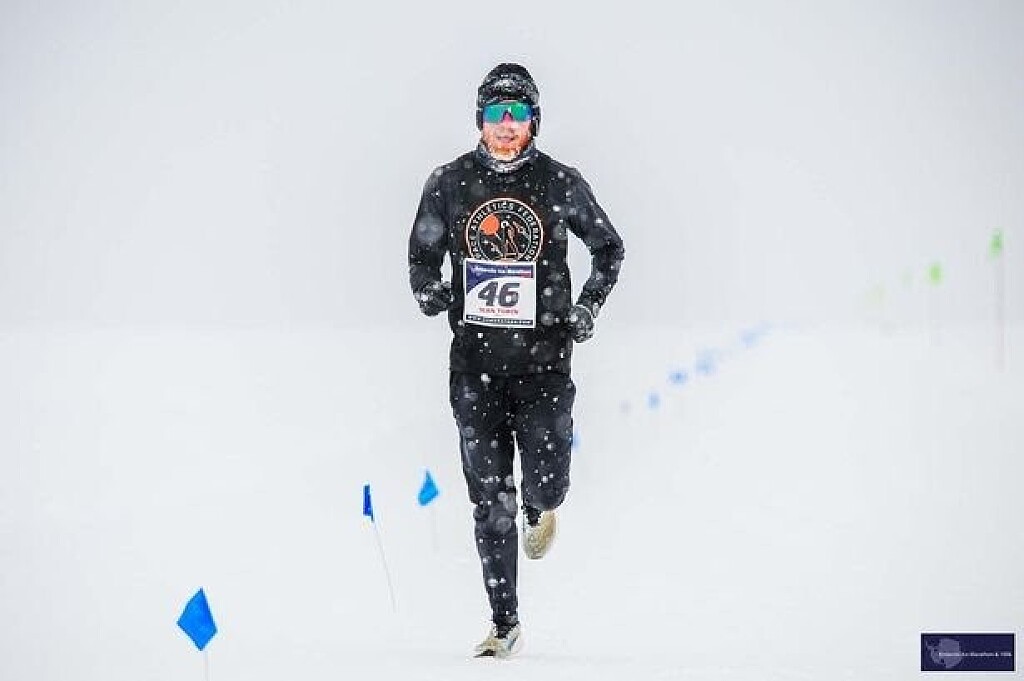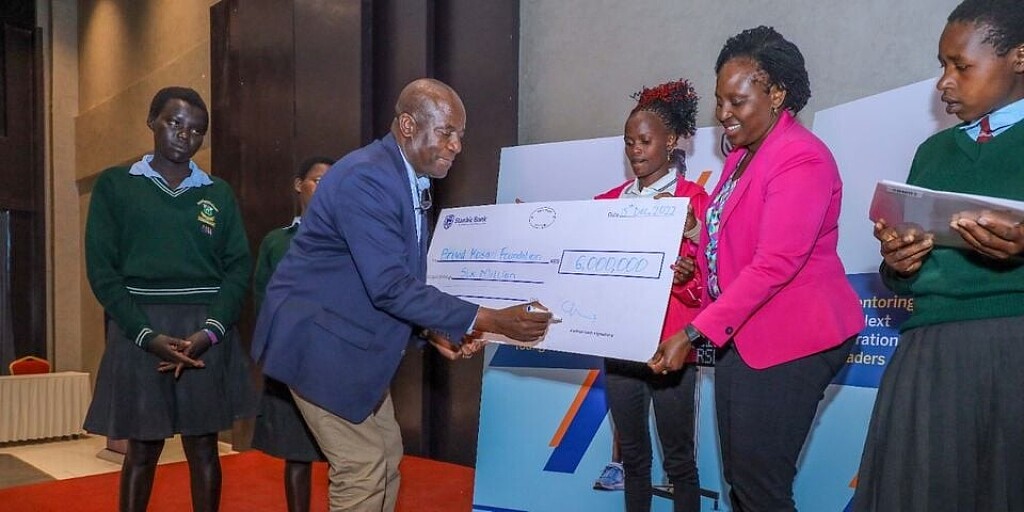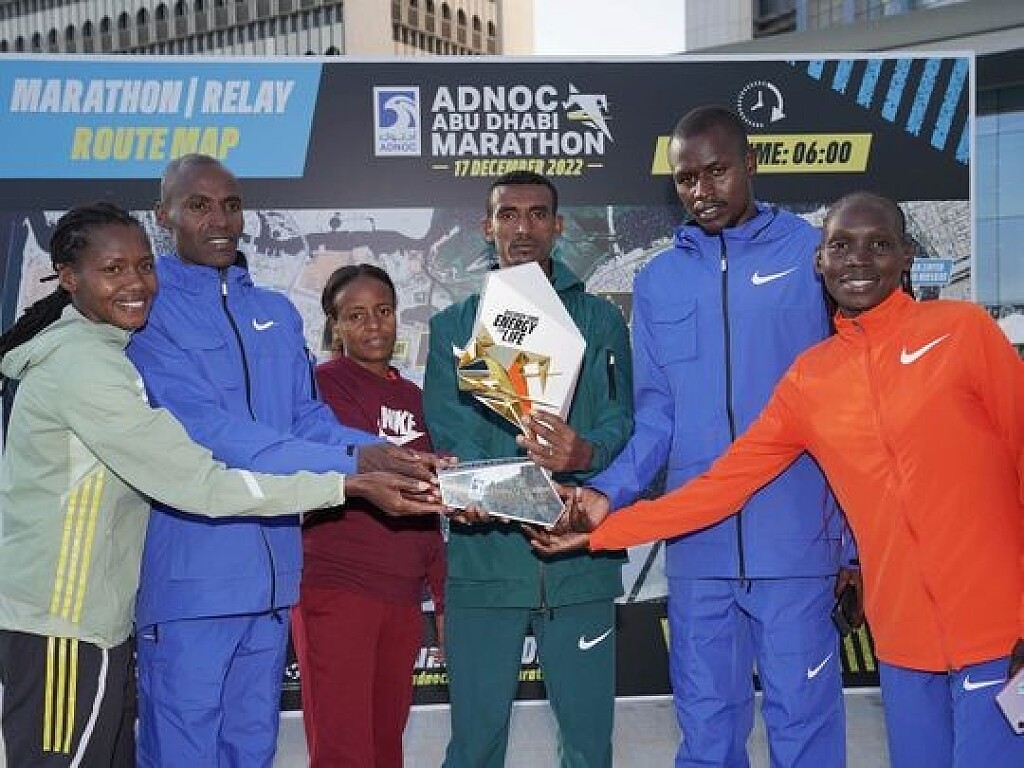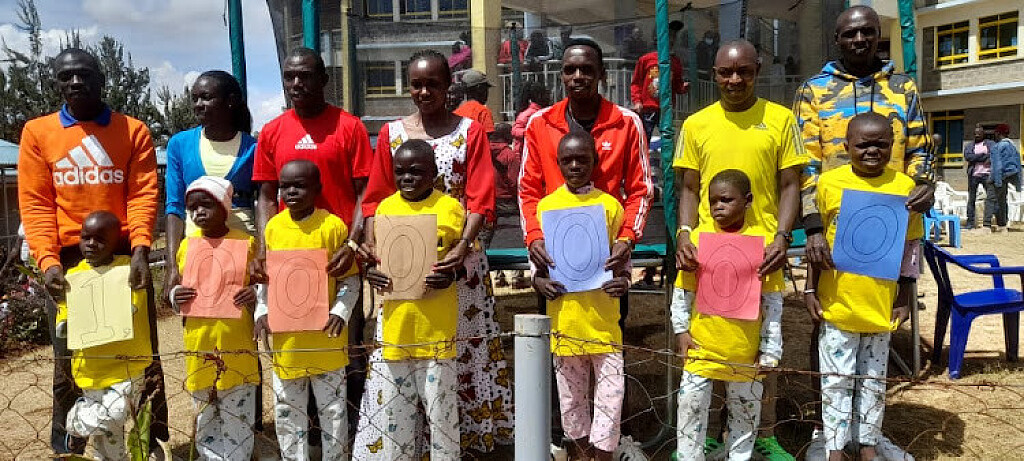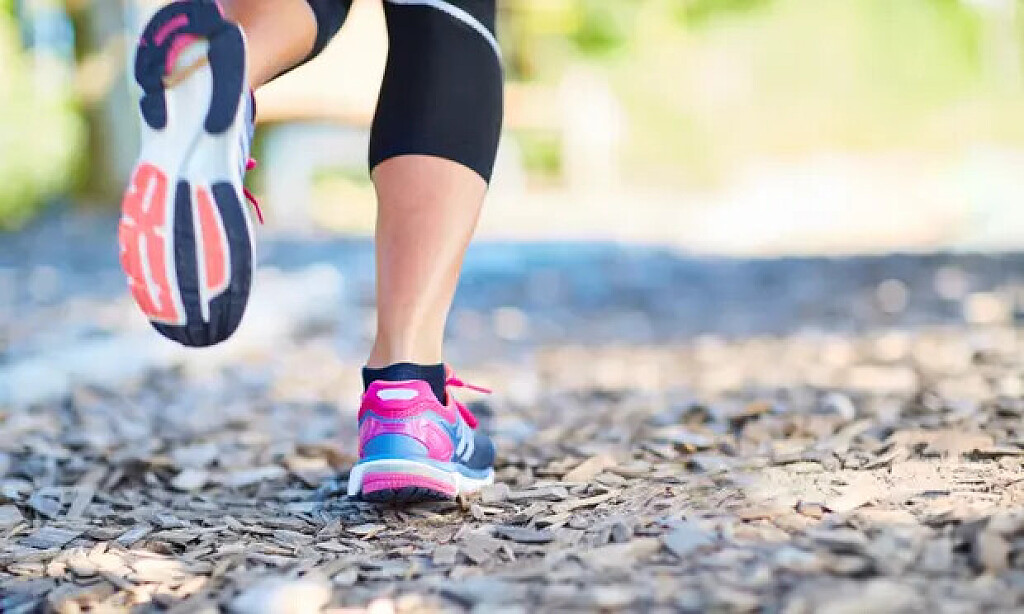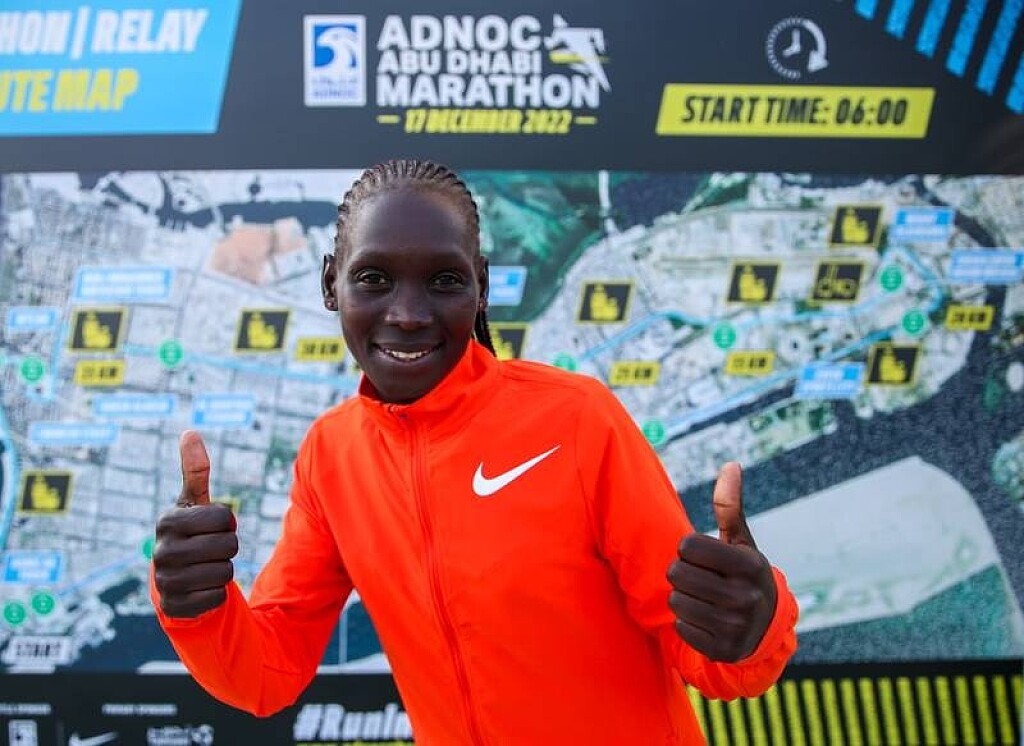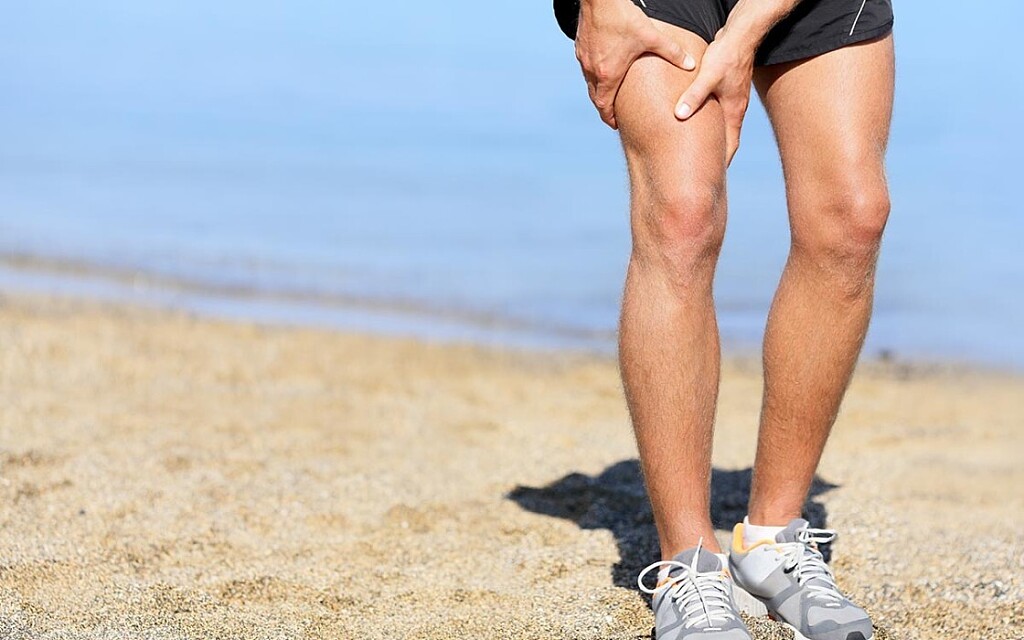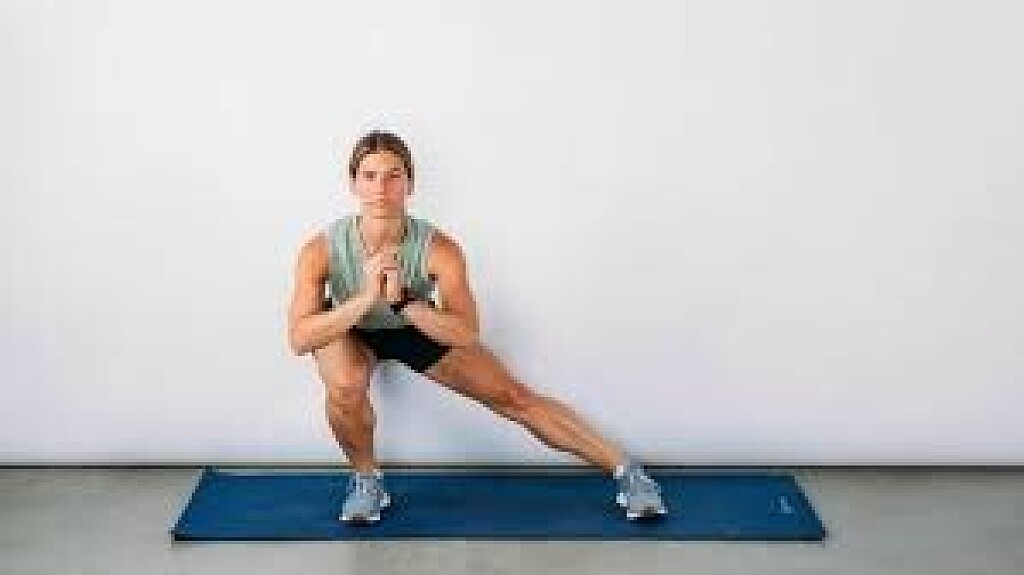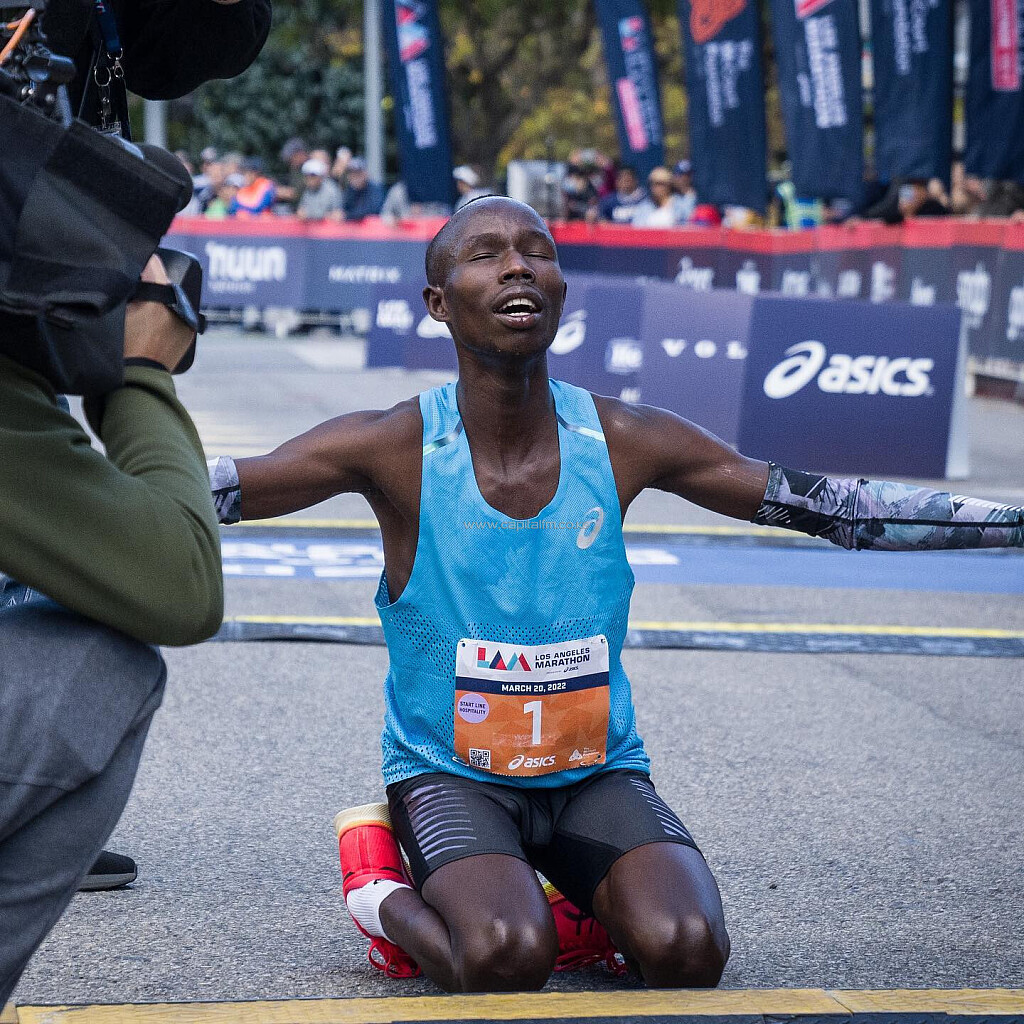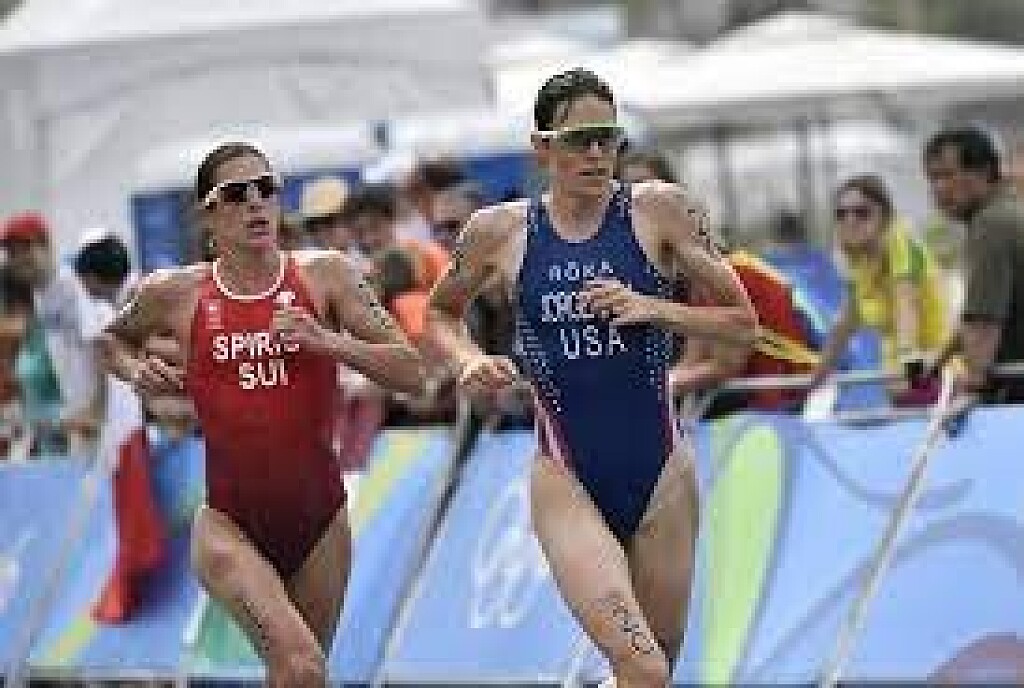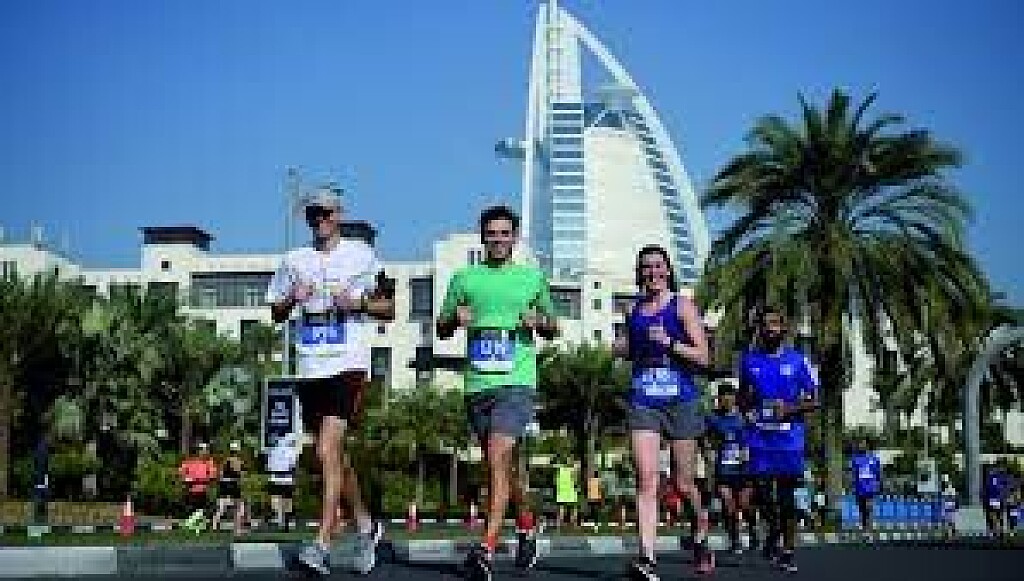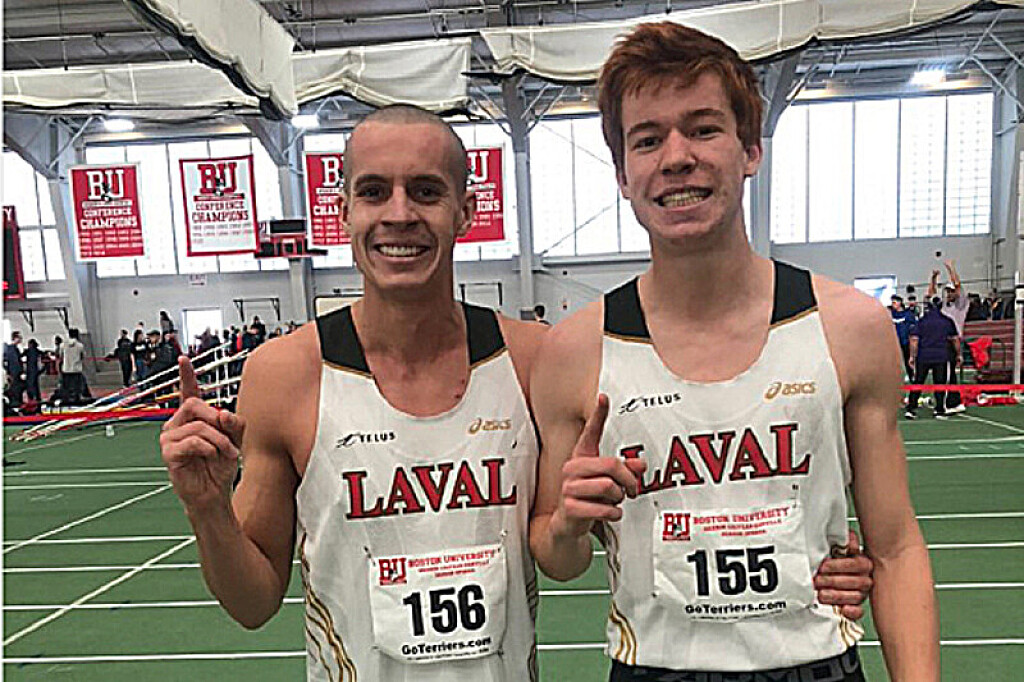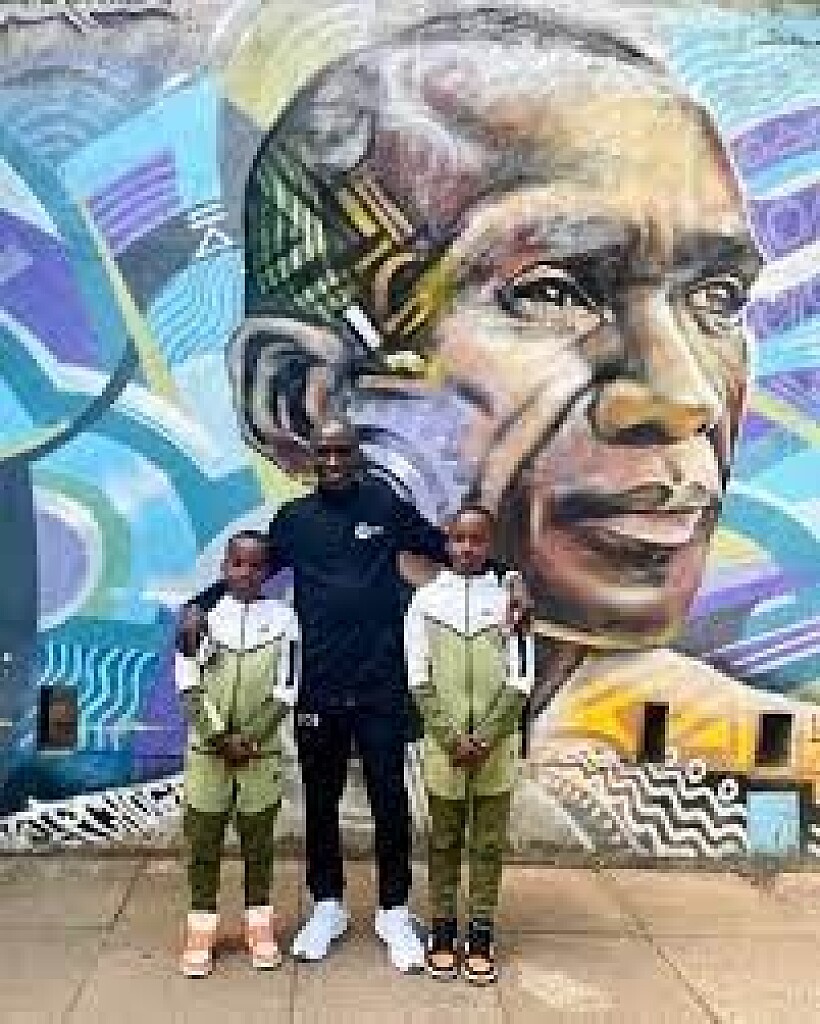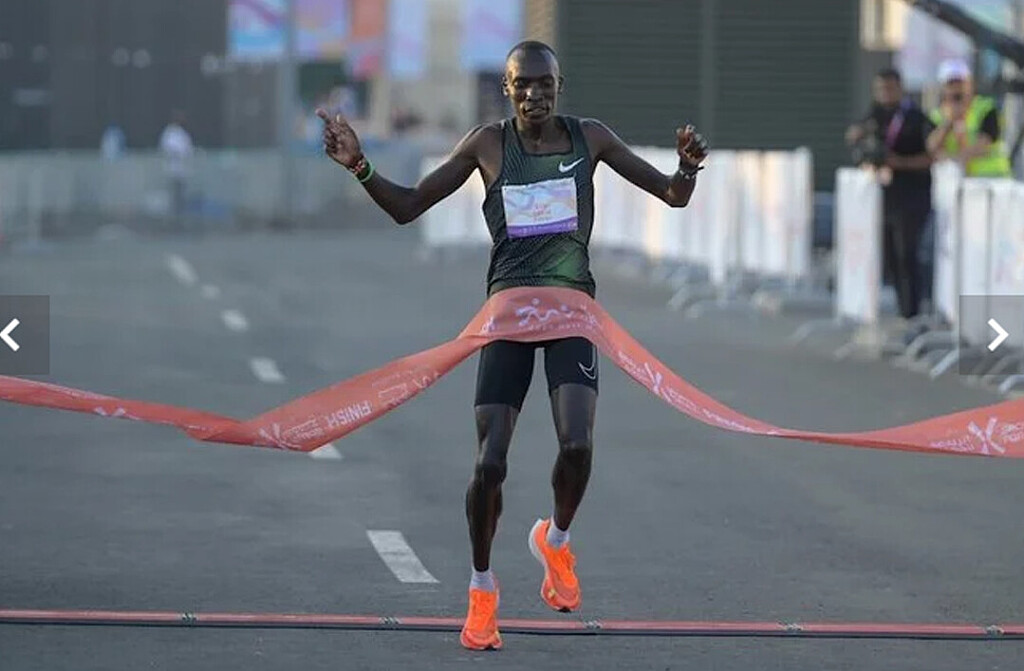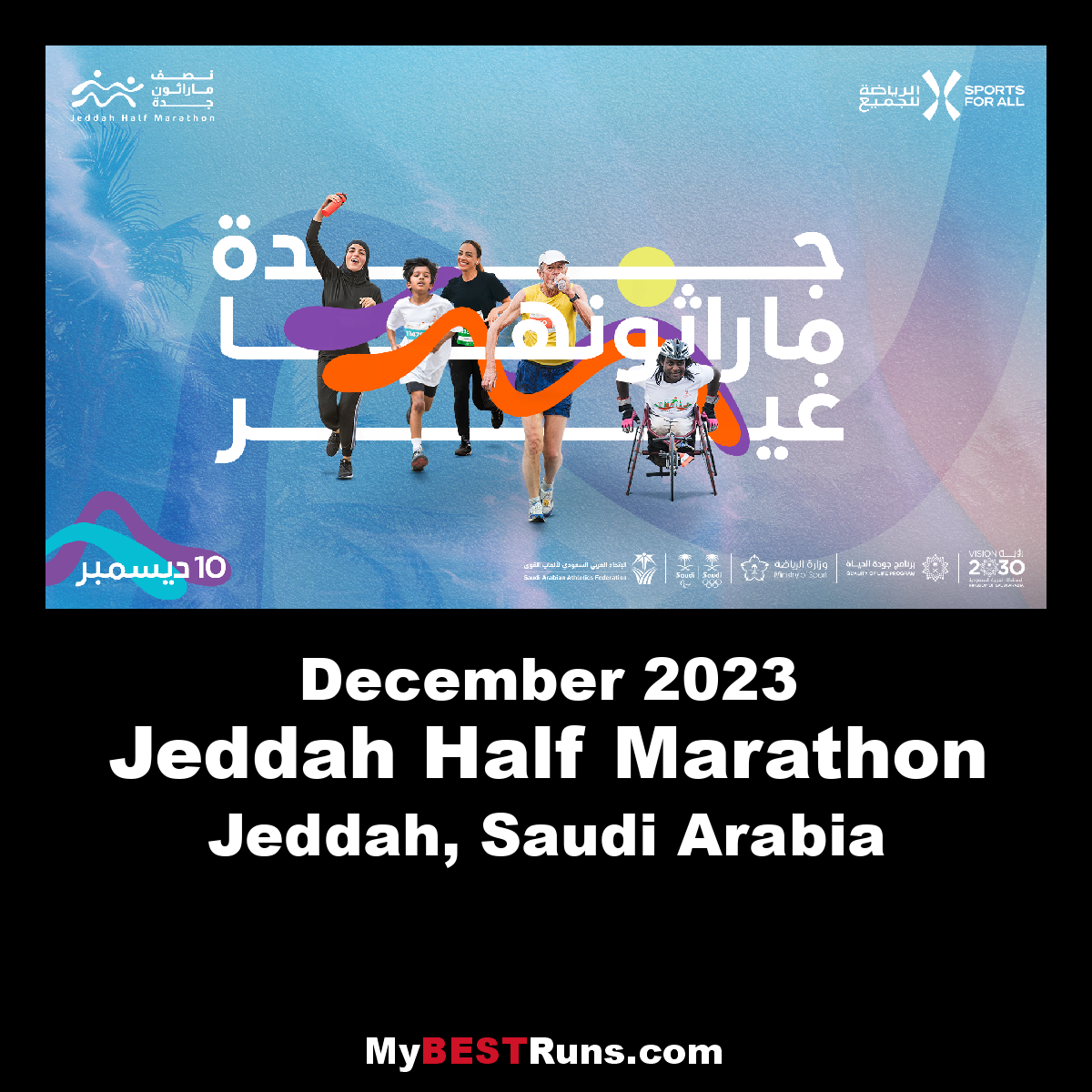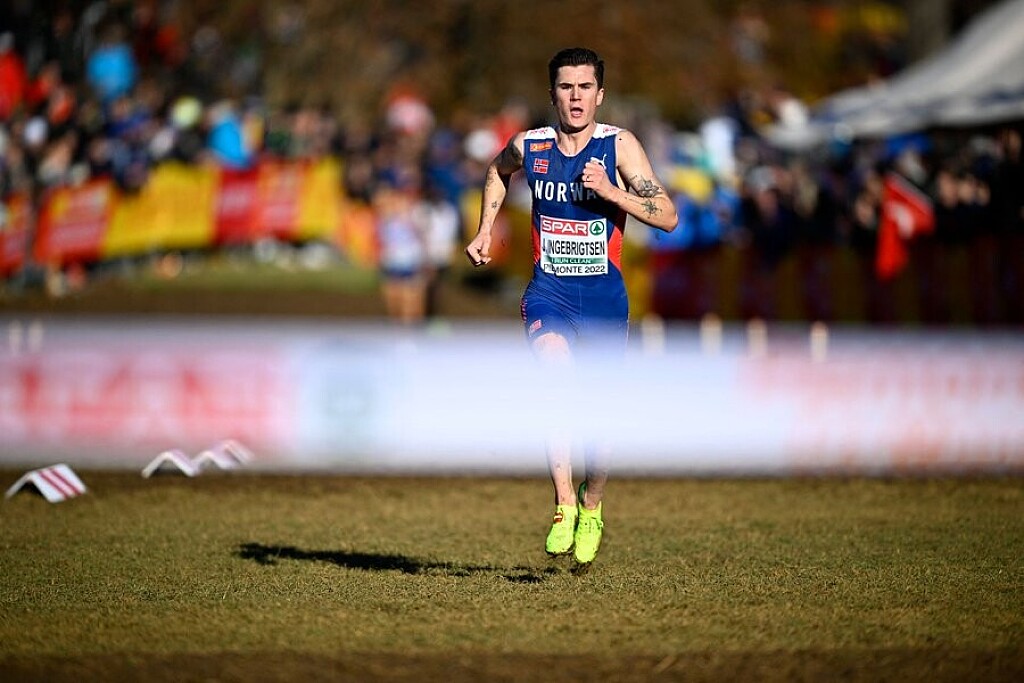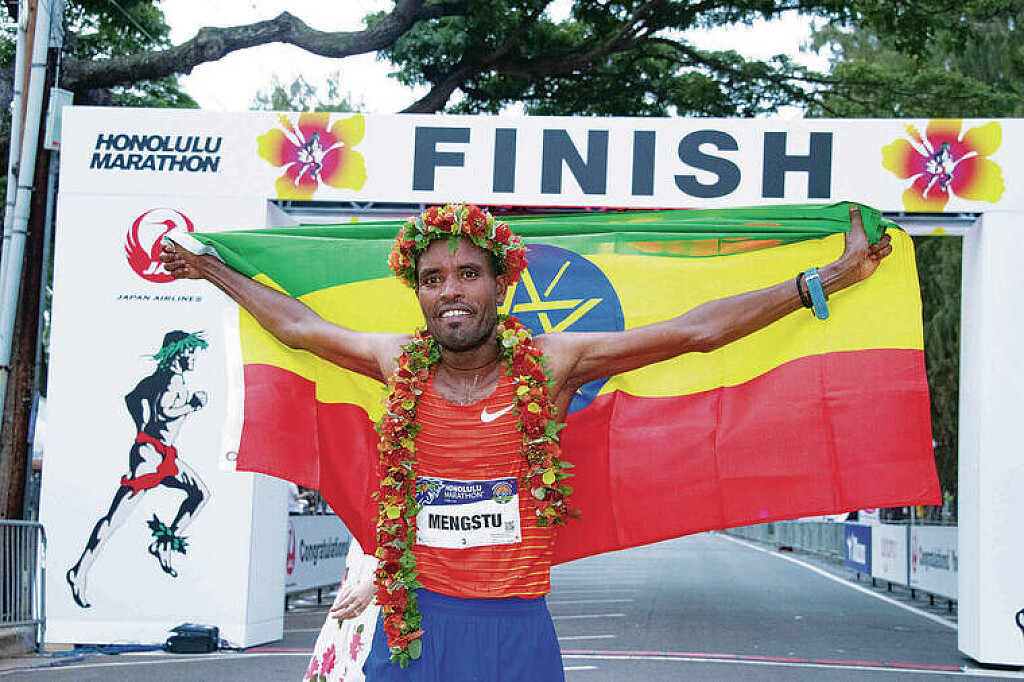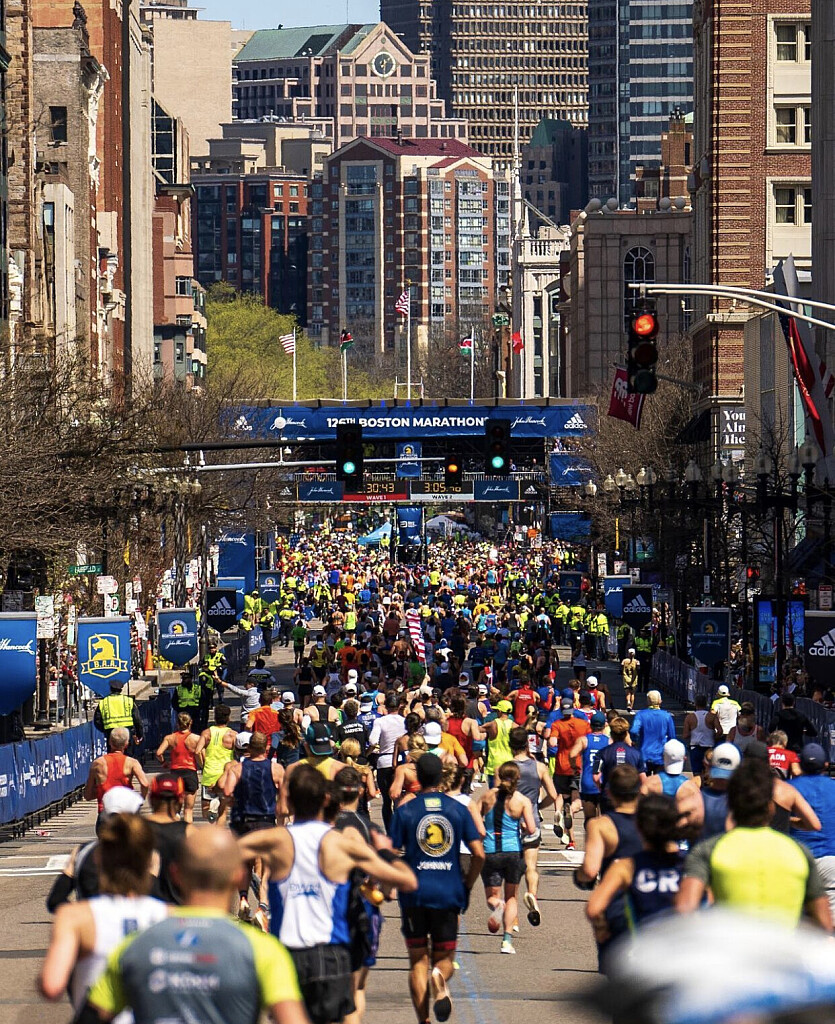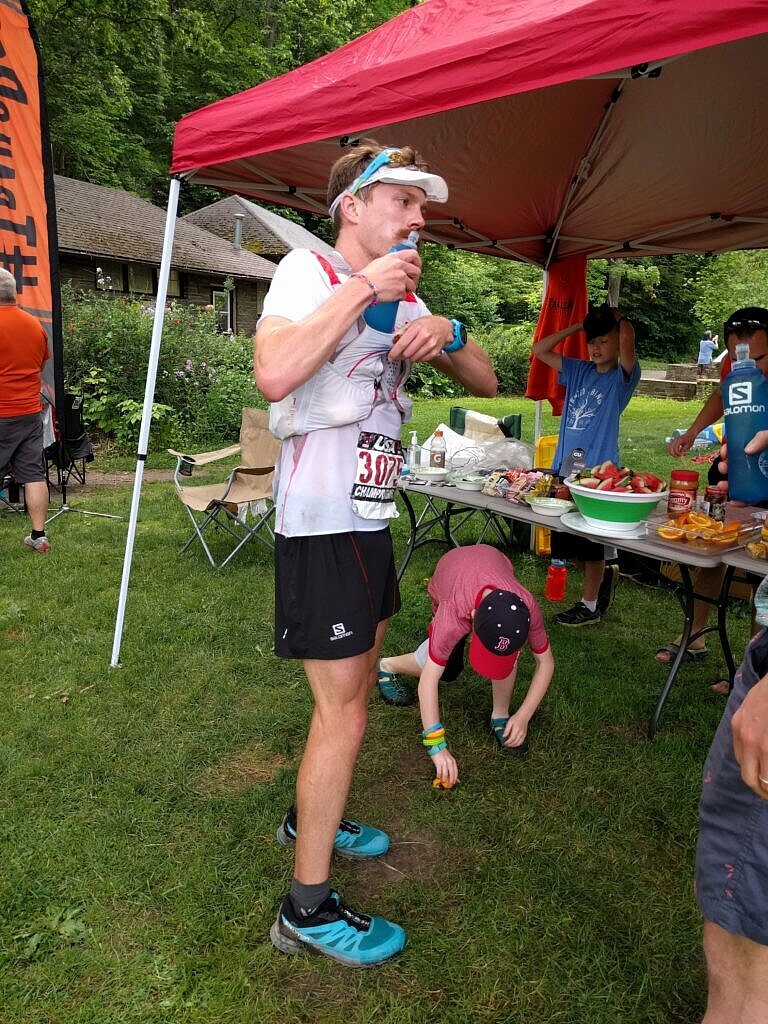Running News Daily
Running News Daily is edited by Bob Anderson in Mountain View, California USA and team in Thika Kenya, La Piedad Mexico, Bend Oregon, Chandler Arizona and Monforte da Beira Portugal. Send your news items to bob@mybestruns.com Advertising opportunities available. Over one million readers and growing. Train the Kenyan Way at KATA Running Retreat Kenya. (Kenyan Athletics Training Academy) in Thika Kenya. Opening in june 2024 KATA Running retreat Portugal. Learn more about Bob Anderson, MBR publisher and KATA director/owner, take a look at A Long Run the movie covering Bob's 50 race challenge.
Index to Daily Posts · Sign Up For Updates · Run The World Feed
Russian Natalya Antyukh officially loses London 2012 gold after not appealing doping sanctions
Russia's Natalya Antyukh has had her results from the 2012 Olympic Games in London officially disqualified, allowing a reallocation of medals from the women's 400 metres hurdles final, more than 10 years later.
Antyukh had her results from the Games officially disqualified in October, but was allowed time to appeal the decision.

Following the expiration of the 45-day deadline, she had all results from July 15 in 2012 to June 29 the following wiped from her record, including the gold medal-winning run at London 2012.
This means Lashinda Demus from the United States is set to be awarded the gold medal retrospectively.

Demus was pipped in a photo finish with Antyukh in the final, with the Russian crossing the line in 52.70sec to the American's 52.77.
Czech Republic's Zuzana Hejnová, who would go on to win back-to-back World Championships titles in 2013 and 2015, has been promoted to silver, while Jamaican Kaliese Spencer will receive the bronze medal.
The Athletics Integrity Unit (AIU) charged the hurdler based on historical data at the former World Anti-Doping Agency (WADA)-accredited laboratory in Moscow.
Antyukh, now 41, was given a four-year-ban last year and had already had results wiped from June 30 in 2013 to December 31 in 2015.
World Athletics has changed its results on its website, with the AIU confirming in a statement that the International Olympic Committee (IOC) could now award the medals as planned.
"The IOC may now proceed with the reallocation of medals and the update of the IOC database," read the AIU statement.
"The AIU remains committed to investigating all cases of potential violations and securing the appropriate outcomes.
"The integrity of the sport of athletics is our utmost priority and we are pleased, in this instance, that athletes who competed fairly at the highest level will ultimately be acknowledged as the rightful medal winners."
AIU head Brett Clothier added that it was important to ensure "clean and fair competition and results, even if a decade later".
Antyukh is one of a record 46 Russian competitors at London 2012 disqualified for doping, leading to the country being stripped of 17 medals, including nine in athletics.
She also won silver in the women's 4x400m relay at London 2012, but this medal was already stripped six years ago when her team-mate Antonina Krivoshapka was given a doping ban and her results were disqualified.
Her results are not disqualified from before July 2012, meaning her 2011 world bronze and 2010 European gold medals - as well as her Athens 2004 400m bronze - still remain in her possession.
(12/22/2022) ⚡AMPby Michael Houston
Now healthy, Canadian Brandon McBride sets running priorities for 2023, brightens holidays for others
Fully healed from a broken left foot, Brandon McBride will work to improve his mental strength on the track in 2023, with an eye on qualifying for a fourth consecutive World Athletics Championships next summer in Budapest.
The Canadian middle-distance runner will take a more experienced, strategic and smarter approach to races after falling hard to the track while jostling for position in his 800-meter heat on July 20 at the world championships in Eugene, Ore.

McBride, 28, and Navasky Anderson of Jamaica exchanged shoves near the turn off the backstretch. About 200 meters into the race, McBride said he was bumped during the cut-in and lost control but stayed on his feet before suddenly colliding with others.
The Windsor, Ont., native fell nearly five seconds off the pace and finished eighth, and last, in one minute 57.43 seconds.

"You could say it was a freak accident [but] I take full responsibility," McBride, told CBC Sports over the phone from Victoria. "It could have been avoided if I had raced smarter. I need to approach races as a six-foot-five speed/power athlete [and] have to know I can't fit in certain spaces [between opposing runners]."
Going forward, McBride suggested he would sit at the back of the pack for the "first lap or so" and work his way up from 400 metres.
"That's something I [did] last year," said the two-time Olympian, "but maybe it's something I didn't have the confidence to do during world championships."
McBride encountered a similar situation in the first round at the 2019 worlds in Doha, Qatar, where he allowed Peter Bol of Australia to cut him off and almost tripped 150 to 200 metres from the start. At the time, McBride recalled, he had the utmost confidence in his endurance and speed. He recovered to win the heat while a tired Bol faded to fifth.
"In the future, I would love to have the confidence in myself to allow the individual to go ahead instead of jostling," he said. "You have to protect your space but remember the goal of the race is to finish."
In Eugene, McBride broke the fifth metatarsal, the long bone on the outside of the foot that connects to the small toe. The four-time Canadian champion worked with physiotherapist Mary Brannigan in Windsor during his rehabilitation and Dr. Brian Murer, a chiropractic specialist based in Indiana, who solved overall movement issues the runner was experiencing.
Four weeks into recovery, McBride could walk without issue and returned to his regular training program at the beginning of October.
"Rehab was straightforward, strengthening the muscles and tendons near the bone," said McBride, who ran a Canadian-record time of 1:43.20 in 2018. "[The broken bone] was the most painful experience I've ever had. I couldn't walk for the first 72 hours and it hurt when I was at rest and when I [eventually] moved around on crutches."
McBride moved to Victoria in late November to join coach Mark Rowland, with whom he has worked since November 2021 when he joined Oregon Track Club Elite in Eugene. Five months ago, Rowland accepted a job to coach endurance athletes out of Athletics Canada's West Hub in the B.C. capital. McBride and three others also relocated and live together in a cottage.
These days, McBride runs a combined 21 kilometers across morning and evening workouts and over the past month has experienced his best period of November/December training since turning professional in June 2016.
"Physically, we're [pushing] him a little harder [than in early 2022] and he seems to be responding," Rowland told CBC Sports. "We haven't done the anaerobic speed [workouts] or speed testing because I don't think we've done enough conditioning work to put his body in that position. We'll do that probably in January."
During his downtime, McBride has kept busy with his not-for-profit group. McBride Youth United Association has partnered with several organizations and this week will help 50 families in need ahead of the holiday season.
Care packages, which will be distributed in Windsor through Friday, include cognitive toys, sensory toys, board games, action figures, building blocks, hygiene products, gift cards and food cards.
McBride and the six-member MYUA — which includes his girlfriend, Yesmina Captan — has partnered with the Border City Athletics Club, Border City Boxing Club, Windsor United Basketball Training Facility, Windsor Region Hospital and Eastern Flavours Restaurant and Banquet Hall.
"It means the world to see the direct impact you're making with these kids and their families," said McBride, who has a master's degree in business from Wayne State University in Detroit. "I want to do my best to help the youth of Windsor and their development. It ties in with our mentorship and tutoring services we're going to be offering in 2023.
"I believe every child has greatness within them. They just need an individual or situation to bring out that greatness."
Early in 2020, McBride and Captan purchased grocery cards from FreshCo in Windsor and delivered them to eight families in need during the coronavirus pandemic. Later in the year, McBride delivered over 100 winter coats for children connected to nine organizations.
(12/22/2022) ⚡AMPby Doug Harrison
World Athletics Championships Budapest 23
From August 19-27, 2023, Budapest will host the world's third largest sporting event, the World Athletics Championships. It is the largest sporting event in the history of Hungary, attended by athletes from more than 200 countries, whose news will reach more than one billion people. Athletics is the foundation of all sports. It represents strength, speed, dexterity and endurance, the...
more...Alicia Monson and Konstanze Klosterhalfen headline Millrose Games 3000m
Alicia Monson will defend her 3000m title against a field including Konstanze Klosterhalfen when she returns to the Millrose Games, a World Athletics Indoor Tour Gold meeting, in New York on February 11.
Monson ran away from the field in 2022, setting a meeting record of 8:31.62. That performance would prove to be a springboard to more success for the 24-year-old, who went on to have the best season of her career outdoors, running personal bests at 3000m, 5000m and 10,000m, competing at the World Athletics Championships Oregon22 and placing in the top five at three Diamond League meetings.

"I’m looking forward to coming back to defend the 3000m this year," said Monson. "The atmosphere in The Armory makes for an awesome start to the track season."
Her main challenger may be Klosterhalfen, this year's European 5000m champion and the 2019 world bronze medalist. Klosterhalfen holds eight national records for Germany and won the 2019 Wanamaker Mile at the Millrose Games.

Other athletes to watch include Katelyn Tuohy, Elly Henes, Courtney Wayment, Whittni Orton Morgan and Fantaye Belayneh, Ethiopian champion and African Championships silver medalist in the 5000m.
These are the latest stars announced for the Millrose Games, joining the showdowns in the pole vault between Katie Nageotte, Sandi Morris, and Katerina Stefanidi, and in the shot put, featuring Ryan Crouser and Joe Kovacs. The men’s 3000m, meanwhile, will star Geordie Beamish, Cooper Teare and Josh Kerr, while the women's 300m will feature Abby Steiner, Jenna Prandini and Brittany Brown.
(12/22/2022) ⚡AMPby World Athletics
NYRR Millrose Games
The NYRR Millrose Games,which began in 1908 as a small event sponsored by a local track club, has grown to become the most prestigious indoor track and field event in the United States. The NYRR Millrose Games meet is held in Manhattan’s Washington Heights at the New Balance Track & Field Center at the Armony, which boasts a state-of-the-art six-lane,...
more...Kenya's Evans Chebet keen to defend Boston Marathon title
The 2022 New York City Marathon champion Evans Chebet is keen to defend his Boston Marathon title when he lines up against a competitive field on April 17, 2023.
Chebet, the second runner’s-up at the 2019 Berlin Marathon, said retaining the title he won this year in 2:06:51 is his main focus. Chebet added that winning the New York City Marathon was motivation enough for him to return to Boston and try to execute a good run.

The race will not be short of competition with the presence of current world marathon record holder Eliud Kipchoge and Ethiopia’s Lelisa Desisa, the 2019 world marathon champion.
However, Chebet insists he is not afraid of the competition.

“I am aware of the elite athletes expected but I’m not afraid. I am confident I will achieve my target,” he said.
The 2020 Valencia Marathon champion revealed he is already back in training, adding that he doesn’t intend to change his program unless his coach, Claudio Berardelli, has other plans.
Chebet said he is equally inspired by his training mates' recent performances. Amos Kipruto won the London Marathon while Benson Kipruto, who is also lined up for Boston, won the Chicago Marathon.
“I will not change my program in training since it has helped my training mates win their respective marathons. However, I am waiting to see what my coach has in store for me,” he said, adding that he hopes to be injury-free.
Chebet put his 2023 World Championships ambitions on the knife edge since he also has New York City Marathon title defence in his plans.
However, he is keen on running at the 2024 Paris Olympics.
Chebet said his 2022 season was a success and can only hope for better going forward.
“Winning two major marathons this year was a great achievement. The season has been amazing. I hope to replicate the same next year,” he concluded.
(12/21/2022) ⚡AMP
by Abigael Wuafula
Boston Marathon
Among the nation’s oldest athletic clubs, the B.A.A. was established in 1887, and, in 1896, more than half of the U.S. Olympic Team at the first modern games was composed of B.A.A. club members. The Olympic Games provided the inspiration for the first Boston Marathon, which culminated the B.A.A. Games on April 19, 1897. John J. McDermott emerged from a...
more...World Athletics Announces Toughest-Ever Standards for 2024 Olympics
On Tuesday, World Athletics announced the automatic qualifying standards for the 2024 Olympics in Paris. The standards are the toughest ever for a global championship as World Athletics is aiming for just 50% of entrants to come via the standard, with the remaining 50% to be determined by world ranking.
This is similar to the system in place for the 2023 World Championships in Budapest, and in most events, the standards are similar to those for next year’s Worlds. The big difference comes in the marathon.

For the 2020 Olympics, World Athletics had set entry limits of 80 athletes for the men’s and women’s marathons, but a combination of supershoes and a COVID-extended qualifying window saw far more athletes hit the entry standards than expected. In the end, 106 men and 88 women started the last Olympic marathon in Sapporo.
Seeking to avoid a repeat, World Athletics dramatically lowered the marathon entry standards. On the men’s side, the 2024 standard is 2:08:10 (compared to 2:11:30 in 2020). On the women’s side, the 2024 standard is 2:26:50 (compared to 2:29:30 in 2020). Athletes can also earn the standard by finishing top-5 in a Platinum Label Marathon between November 1, 2022, and April 30, 2024. In 2023, the following races are Platinum Label Marathons: Xiamen, Osaka (women), Tokyo, Nagoya (women), Seoul, Boston, London, Sydney, Berlin, Chicago, Amsterdam, New York, Shanghai, Valencia.

The standards are listed below. We’ve also listed the standards for the 2020 Olympics and 2023 Worlds for comparison.
Men’s standards
Event
100m.- 10.05 (2020 Olympics), 10.00 (2023 Worlds), 10.00 (2024 Olympics).
200m.- 20.24 (2020 Olympics), 20.16 (2023 Worlds), 20.16 (2024 Olympics).
400m.- 44.90 (2020 Olympics), 45.00 (2023 Worlds), 45.00 (2024 Olympics).
800m.- 1:45.20 (2020 Olympics), 1:44.70 (2023 Worlds), 1:44.70 (2024 Olympics).
1500m.- 3:35.00 (2020 Olympics), 3:34.20 (3:51.00) (2023 Worlds), 3:33.50 (3:50.40) (2024 Olympics).
5000m.- 13:13.50 (2020 Olympics), 13:07.00 (13:07 road)(2023 Worlds), 13:05.00 (2024 Olympics).
10,000m.- 27:28.00 (2020 Olympics), 27:10.00 (27:10 road) (2023 Worlds), 27:00.00 (2024 Olympics).
Marathon.- 2:11:30 (2020 Olympics), 2:09:40 (2023 Worlds), 2:08:10 (2024 Olympics).
3000m SC.- 8:22.00 (2020 Olympics), 8:15.00 (2023 Worlds), 8:15.00 (2024 Olympics).
110m H.- 13.32 (2020 Olympics), 13.28 (2023 Worlds), 13.27 (2024 Olympics).
400m H.- 48.90 (2020 Olympics), 48.70 (2023 Worlds), 48.70 (2024 Olympics).
High jump.- 2.33m (2020 Olympics), 2.32m (2023 Worlds), 2.33m (2024 Olympics).
Pole vault.- 5.80m (2020 Olympics), 5.81m (2023 Worlds), 5.82m (2024 Olympics).
Long jump.- 8.22m (2020 Olympics), 8.25m (2023 Worlds), 8.27m (2024 Olympics).
Triple jump.- 17.14m (2020 Olympics), 17.20m (2023 Worlds), 17.22m (2024 Olympics).
Shot put.- 21.10m (2020 Olympics), 21.40m (2023 Worlds), 21.50m (2024 Olympics).
Discus.- 66.00m (2020 Olympics), 67.00m (2023 Worlds), 67.20m (2024 Olympics).
Hammer.- 77.50m (2020 Olympics), 78.00m (2023 Worlds), 78.20m (2024 Olympics).
Javelin.- 85.00m (2020 Olympics), 85.20m (2023 Worlds), 85.50m (2024 Olympics).
Decathlon.- 8350 pts (2020 Olympics), 8460 pts (2023 Worlds), 8460 pts (2024 Olympics).
20k RW.- 1:21:00 (2020 Olympics), 1:20:10 (2023 Worlds), 1:20:10 (2024 Olympics).
Women’s standards
Event.- 100.- 11.15 (2020 Olympics), 11.08 (2023 Worlds), 11.07 (2024 Olympics).
200.- 22.80 (2020 Olympics), 22.60 (2023 Worlds), 22.57 (2024 Olympics).
400.- 51.35 (2020 Olympics), 51.00 (2023 Worlds), 50.95 (2024 Olympics).
800.- 1:59.50 (2020 Olympics), 1:59.80 (2023 Worlds), 1:59.30 (2024 Olympics).
1500 (Mile).- 4:04.20 (2020 Olympics), 4:03.50 (4:22.00) (2023 Worlds), 4:02.50 (4:20.90) (2024 Olympics).
5k.- 15:10.00 (2020 Olympics), 14:57.00 (14:57 road) (2023 Worlds), 14:52.00 (2024 Olympics).
10k.- 31:25.00 (2020 Olympics), 30:40.00 (30:40 road) (2023 Worlds), 30:40.00 (2024 Olympics).
Marathon.- 2:29:30 (2020 Olympics), 2:28:00 (2023 Worlds), 2:26:50 (2024 Olympics).
3k steeple.- 9:30.00 (2020 Olympics), 9:23.00 (2023 Worlds), 9:23.00 (2024 Olympics).
100 hurdles.- 12.84 (2020 Olympics), 12.78 (2023 Worlds),
12.77 (2024 Olympics).
400 hurdles.- 55.40 (2020 Olympics), 54.90 (2023 Worlds),
54.85 (2024 Olympics).
HJ.- 1.96m (2020 Olympics), 1.97m (2023 Worlds), 1.97m (2024 Olympics).
PV.- 4.70m (2020 Olympics), 4.71m (2023 Worlds), 4.73m (2024 Olympics).
LJ.- 6.82m (2020 Olympics), 6.85m (2023 Worlds), 6.86m (2024 Olympics).
TJ.- 14.32m (2020 Olympics), 14.52m (2023 Worlds), 14.55m (2024 Olympics).
SP.- 18.50m (2020 Olympics), 18.80m (2023 Worlds), 18.80m (2024 Olympics).
Discus.- 63.50m (2020 Olympics), 64.20m (2023 Worlds), 64.50m (2024 Olympics).
Hammer.- 72.50m (2020 Olympics), 73.60m (2023 Worlds), 74.00m (2024 Olympics).
Javelin.- 64.00m (2020 Olympics), 63.80m (2023 Worlds), 64.00m (2024 Olympics).
Heptathlon.- 6420 pts (2020 Olympics), 6480 pts (2023 Worlds), 6480 pts (2024 Olympics).
20k race walk.- 1:31:00 (2020 Olympics), 1:29:20 (2023 Worlds), 1:29:20 (2024 Olympics).
(12/21/2022) ⚡AMPby Letsrun
Paris 2024 Olympic Games
For this historic event, the City of Light is thinking big! Visitors will be able to watch events at top sporting venues in Paris and the Paris region, as well as at emblematic monuments in the capital visited by several millions of tourists each year. The promise of exceptional moments to experience in an exceptional setting! A great way to...
more...Three more kenyan athletes banned for breaking anti-doping rules
Three Kenyan athletes have been banned for a collective period of eight years after breaking anti-doping rules.
The Athletics Integrity Unit (AIU) has banned marathon runners Alice Jepkemboi Kimutai and Johnstone Kibet Maiyo for three years, and sprinter Mark Otieno for two.

Otieno, 29, tested positive for the banned anabolic steroid Methasterone moments before the 100m heats at the Tokyo Olympic Games.
It meant he was not allowed to compete.

Otieno, a three-time national 100m champion, will have his ban backdated from the Games and end in July 2023.
The suspension for November's Porto marathon winner Kimutai - who tested positive for the male hormone testosterone - began on 16 November.
Maiyo's ban started on 20 July for returning a positive test for erythropoietin (EPO).
Last month the east African country avoided a sanction by governing body World Athletics - despite having 55 athletes serving suspensions - after committing to spend $25m over the next five years to combat doping.
Kenya's sports minister Ababu Namwamba then announced they intended to criminalise doping in athletics in an attempt to bring an end to a string of cases in the sport.
(12/21/2022) ⚡AMPby BBC Sport
Kenya’s Edna Kiplagat upgraded to 2021 Boston Marathon champion
Edna Kiplagat of Kenya has officially become a two-time Boston Marathon champion. The BAA elevated Kiplagat to 2021 Boston Marathon winner on Tuesday after the Athletics Integrity Unit (AIU) handed down a six-year suspension to former 2021 champion Diana Kipyokei. Kipyokei tested positive for triamcinolone acetonide (a corticosteroid)–a banned anti-inflammatory substance–post-race in Boston.
Kipyokei was also suspended for providing misleading information in her attempts to explain her use of the substance, including “fake documentation which she alleged came from a hospital,” according to the AIU. Kipyokei’s provisional suspension was announced Oct.14, but began on June 27 and her six-year ban has been backdated to June.

Kiplagat is now a two-time Boston Marathon champion, after winning the race in 2017 (she also ran to second in 2019). Kiplagat, 43, is widely regarded as one of the all-time greats in distance running.
Dubbed the “Queen of Persistence,” Kiplagat has competed at both the Olympic and World championship marathons, taking gold twice at the World champs in 2011 and 2013, and silver in 2017. Kiplagat has run all six of the Abbott World Marathon Majors.

The Colorado-based athlete won the Abbott World Marathon Series VIII (2013–14) and was named the Series V (10–2011) champion following the disqualification of Russian athlete Liliya Shobukhova.
Kiplagat won both the London Marathon (2014) and New York Marathon (2010) with many second-place finishes. In 2021 she won the 7-mile (11.3 km) Falmouth Road Race, running away from the field in the second half of the race to break the tape in 36 minutes, 52 seconds.
(12/21/2022) ⚡AMP
by Keeley Milne
Boston Marathon
Among the nation’s oldest athletic clubs, the B.A.A. was established in 1887, and, in 1896, more than half of the U.S. Olympic Team at the first modern games was composed of B.A.A. club members. The Olympic Games provided the inspiration for the first Boston Marathon, which culminated the B.A.A. Games on April 19, 1897. John J. McDermott emerged from a...
more...Here’s what runners can learn from Lionel Messi, three key takeaways from Messi's magic
Whether you’re a soccer fan (football, to anyone outside of North America) or have never seen a game in your life, you’ve probably heard about Sunday’s thrilling World Cup final between France and Argentina–a game sports pundits are calling one of the greatest athletic events in history. Argentina’s Lionel Messi was the star of the brilliant finale, and we can all learn from his legendary career. Here are a few takeaways for runners.
1.- Consistency over time

Despite how natural Messi’s skill on the pitch looks, he’s been a hard worker in the sport for decades. “I start early and I stay late, day after day, year after year,” Messi has said. “It took me 17 years and 114 days to become an overnight sensation.”
Messi began his professional soccer career in 2004 and played at his first World Cup in 2006. The 2022 Cup was his fourth for Argentina, and the first time his team has won. The athlete, now 35, began playing when he was five in his hometown of Rosario, Argentina. That’s 30 years of dedication to reach the pièce de résistance of his career.

As a runner, you’ve probably heard consistency touted as the key to becoming better–putting in the work, day after day, is what will elevate you to greatness (or simply help you nail your goals). Messi has had many games over the years where his performance was less than a “sprinkling of sorcery” as UK commentator Sam Matterface described Messi’s magic at Sunday’s win.
Similarly, there are no real running shortcuts: putting in the time and effort to head out the door and log mileage day after day is the real secret to success.
2.- Master the art of the slow run (walking is OK too)
We know, we know, runners hate slowing down, but research shows it’s good for you. If you’ve tried 80/20 running (80 per cent of your runs are easy, 20 per cent harder) long enough to experience the benefits, you’re probably a convert–if not, maybe the fact that one of the GOATs of football spends much of his time on the pitch in a very slow run or walk will convince you to give it a shot.
Against Croatia, more than half of Messi’s total meters covered were in Zone 1–which FIFA defines as speeds between standing still and moving at 7 km/hr (4.3 mph), The Athletic reported. He’s estimated to be in that slower zone up to 85 per cent of the time; when he needs to move quickly, he does that extraordinarily well.
The New Yorker’s Jody Rosen calls Messi “soccer’s great ambler” and adds that “his penchant for walking is not a symptom of indolence or entitlement; it’s a practice that reveals supreme footballing intelligence and a commitment to the efficient expenditure of energy.”
Running slowly most of the time helps you maintain fitness and build mileage without wasting energy or accumulating a large toll on your body–when you need to run fast, in speedwork sessions and on race day, your body will have the energy to put forth the hard effort.
3.- Resilience and mental grit are essential
Messi was diagnosed with growth hormone disorder (GHD) when he was 11. GHD is treated by daily injections of human growth hormone (hGH) and Messi’s family was unable to afford the expensive injections long-term.
Despite being smaller than his peers as a child, Messi’s hard work and dedication on the pitch earned him a spot with La Masia, FC Barcelona’s (his long-time team outside of World Cup play) youth academy, who also agreed to cover his medical costs. At 5′ 7″, Messi is never the tallest player on the field, but he’s known for using his lower centre of gravity to his advantage.
All runners, new or experienced, road-based or trail fanatics, must overcome challenges to become the best runner they can be. Mental grit and resilience are developed when you face obstacles head-on, learning how to bounce back despite setbacks.
Accepting where you are at and navigating challenges to the best of your ability builds tenacity and mental toughness, preparing you for running hard races and facing inevitable obstacles in life.
(12/20/2022) ⚡AMPby Keeley Milne
Diana Kipyokei banned six years, stripped of Boston Marathon title
Kenyan Diana Kipyokei was banned six years and had her 2021 Boston Marathon title stripped for a positive drug test and then providing false information to anti-doping officials.
Kipyokei, 28, tested positive for a metabolite of triamcinolone acetonide (a corticosteroid) from a sample given after she won the Boston Marathon in October 2021.

Kipyokei then provided false and/or misleading information in trying to explain her positive test, “including fake documentation which she alleged came from a hospital,” according to the Athletics Integrity Unit (AIU), which handles doping cases in track and field.
She chose not to challenge the charges, according to the AIU.

Kipyokei’s provisional suspension while her case played out was announced Oct. 14, but it began June 27. Her six-year ban has been backdated to June 27.
The Boston Athletic Association, which announced Oct. 14 that Kipyokei would be stripped of her Boston Marathon title should her case not be overturned on appeal, followed up on Tuesday to officially disqualify her.
Kipyokei, in her World Marathon Major debut, won Boston in 2:24:45, beating countrywoman Edna Kiplagat by 24 seconds. Kiplagat, then 41, has been upgraded to champion, making her the oldest runner to win the Boston Marathon in its history dating to 1897.
Kipyokei, who has no registered results since the 2021 Boston Marathon, is the second Boston Marathon winner to be stripped of their title in the last decade. Kenyan Rita Jeptoo also had her 2014 win disqualified for doping.
(12/20/2022) ⚡AMPby OlympicTalk
Boston Marathon
Among the nation’s oldest athletic clubs, the B.A.A. was established in 1887, and, in 1896, more than half of the U.S. Olympic Team at the first modern games was composed of B.A.A. club members. The Olympic Games provided the inspiration for the first Boston Marathon, which culminated the B.A.A. Games on April 19, 1897. John J. McDermott emerged from a...
more...Pool running for recovery
If you’re coming back from injury or want to safely add running volume, pool running is a great option and we have a few workouts for you to try. U.S. Olympian Molly Seidel has recently made a return to running after a sacral stress fracture, and she’s been playing it safe (as we all should), being careful not to overload her body.
“Body was feeling a little run-down after last week so we pushed today’s threshold workout to tomorrow and hopped in the pool instead,” Seidel shared in a recent Instagram post. “Trying to be smarter this build about listening to my body and taking recovery days when needed.” Learn from Seidel’s pro example and try one of these pool workouts.

Why the pool?
Running in deep end of the pool with a flotation belt is an ideal way to simulate running without impact. The pool reduces your body weight by up to 90 per cent, meaing the impact and stress on your body is significantly reduced. Start out easy for the first few workouts and build up to doing your regular running workouts against the resistance of the water.

Former elite marathoner turned podcast host and coach Tina Muir shares some insight on pool running on her website, and says you can simulate any land-based running workout in the pool. To increase intensity in pool runs, Muir suggests pumping your arms back and forth quickly and driving your legs against the resistance of the water.
“Make sure you keep the full cycle for your legs; people often end up doing high knees when they increase the intensity, which does not mimic running and is nowhere near as effective,” adds Muir.
Tempo pool workout
Warm up with ten minutes of easy pool running
Increase your speed and effort for 10–15 minutes
Cool down with ten minutes of easy pool running
Easy pool intervals
Warm up with 10 minutes easy pool running
Run at a hard effort across the deep end of the pool, and recover as you head back to the other side
Repeat 4–6 times (increase as you get used to the pool)
Cool down with 10 minutes easy pool running
Hey, the pool isn’t just for aquacise or swimming laps. If Seidel’s in there running, we’re willing to jump in too.
(12/20/2022) ⚡AMPby Running Magazine
Former Euro XC champ faces three year doping ban for EPO
Olympian and two-time European cross country champ Aras Kaya has been given a three-year ban for doping after testing positive for erythropoietin (EPO). EPO is a hormone that promotes red blood cell production, improving endurance.
Kaya, 28, was born in Kenya but competes for Turkey, after moving there in 2015 and receiving citizenship in 2016. He tested positive at the Brasov Running Festival 10K in Brasov, Romania in September, according to the Athletics Integrity Unit (AIU). Kaya was given a four-year ban but admitted he was at fault and opted not to fight the case, reducing his ban to three years.

In 2021, Kaya took silver at the Euro cross country champs, runner-up to Norway’s Jakob Ingebrigtsen, and ran to bronze in 2018. He was set to run last weekend’s Euro Cross in Turin, Italy, but was a late withdrawal with his doping ban imminent, Athletics Weekly reported.
Kaya won the 2016 Euro cross country senior men’s title and took second in 2019 to Robel Fsiha of Sweden. Fsiha tested positive for artificial testosterone in 2020 and was banned for four years, elevating Kaya to the gold medal position. Kaya has a half-marathon PB of 60:51 and finished third in the 2022 European 10,000m cup.

In the last year, Kaya was reported to have been in the process of receiving Russian nationalization, as he has been based in the Russian city of Kazan.
(12/20/2022) ⚡AMPby Keeley Milne
Here’s how a training log will make you a better runner
Whether you’re a new runner or have many marathons under your belt, tracking your progress in a training log or diary can boost motivation, help you troubleshoot your training, and is fun to look back on as time passes. Here’s the rundown on how and what you should be noting each run.
Running apps like Strava can be a great place to start tracking data, but writing down quick specific notes on each training session in a log is invaluable. You can add notes to a running app you’re already familiar with using, but also consider jotting down notes in a traditional running diary–it can be as cathartic as journalling and will provide you with a tool to reflect on for years to come.

Why you should consider a training diary
Endurance sports coach and author Matt Fitzgerald shared in Podiumrunner that making the effort to log our training “increases our mind-body awareness as well as mental and emotional investment in the sport in ways that may positively affect our performance.” It also has immense pratical value, helping you determine what’s working and what isn’t, and adding an accountability factory to your routine.

Your training diary can be a great confidence booster. “It is a rich record of how much hard work you’ve accomplished and how much progress you’ve made,” Fitzgerald says. “It is the nearest thing you have to proof that you can achieve your goals before you actually achieve them.”
Here’s what you should be logging
Training apps like Strava (or one you may use with your watch) will do some of the hard work for you, noting your data and mileage. Here’s what you should consider adding notes on.
Feelings This doesn’t have to take long or be complicated. Very simple notes about whether you felt fantastic or sluggish can help you figure out what is working and what isn’t in your training (and your life). If you’re under a lot of mental stress, note it: our bodies keep track of stress (mental and physical) rather than mileage, so a high-stress week can correlate to finding your regular workouts more challenging than usual.
Conditions Note what the weather was like and what terrain you were running on can put a training session in perspective when you look back on it–if you were running through deep snow or on a warm day, make sure you note that.
Sleep If you slept terribly the night before a workout, it can be useful to note: sleep impacts training, and a period of poor sleep can be an indicator of other health issues and useful to have recorded.
Niggling aches and pains Keep track of sore spots, even if they seem minor. This can be useful in preventing injuries and can also help you identify what workouts are pushing limits.
If your workout included intervals or varying intensities, you may want to add notes to clarify that–something as simple as “15 min warmup, 3 x 800m” will help jog your memory when you look back at the data.
Training over the long-term can have low points, and your log will be a source of motivation. It’s impossible to be consistently stoked about the daily grind and looking over your log will remind you of how much time you have already put in and how far you have come. “It’s a source of accountability to the standards you have set for yourself as a runner,” says Fitgerald.
(12/19/2022) ⚡AMPby Running Magazine
Barsoton and Jisa run course records in Kolkata
Kenya’s Leonard Barsoton and Bahrain’s Desi Jisa ran course records to win the Tata Steel Kolkata 25K, a World Athletics Elite Label road race, on Sunday (18).
Barsoton, the 2017 world cross country silver medallist, retained his title with a time of 1:12:49, bettering the course record of 1:13:05 he set in 2019.

It was a tactical race. In the mix right from the start but not the leader of the pack, Barsoton was in fourth place behind Alfred Ngeno, Abdisa Tola and Birhanu Legese. He picked up the pace after the 20km mark and never looked back.
Having run in Kolkata before, he knew the course would include a bridge and then take a circuitous route around Babu in Kolkata Ghat along the banks of the Hooghly river.

While Tola of Ethiopia led the race from around the 15km mark, Commonwealth Games marathon champion Victor Kiplangat of Uganda soon set the pace. By the time the pack reached 23km, Barsoton was well ahead, increasing the gap between him and Legese in second place (1:12:54). Kiplangat appeared to have run out of gas and finished third in 1:12:56.
“I know the course and I knew exactly when to pick up the pace,” said Barsoton. “I had been preparing for the last two months. I had some niggles, but despite that, I am happy to have won here and with a course record. It was a very competitive race, and the others in the field gave me a tough fight.”
In the women’s event, Jisa took almost a minute off the previous course record set by Ethiopian Gutemi Shone, clocking 1:21:04 to eclipse the mark of 1:22:09 set in 2019.
Leading the group, Jisa slowed her pace in the 5km stretch between 15-20km, which looked like a tactical move to save her energy for a strong finish. With 5km left, she took complete control.
Ethiopia’s Zeineba Yimer (1:21:18) finished second and Uganda’s Mercyline Chelangat (1:21:31) third.
“I thank Kolkata for such a warm welcome,” said Jisa, runner up at the event in 2019. “I wanted to win the race and am thrilled to have done it with a course record. Now my target will be to participate in Paris (2024 Olympics), a dream for all.”
The top three in both races all finished under the previous course records.
Organisers for World Athletics
Leading results
Women
1 Desi Jisa (BRN) 1:21:04
2 Zeineba Yimer (ETH) 1:21:18
3 Mercyline Chelangat (UGA) 1:21:31
4 Obse Abdeta (ETH) 1:21:43
5 Ashete Bekere (ETH) 1:22:12
Men
1 Leonard Barsoton (KEN) 1:12:49
2 Birhanu Legese (ETH) 1:12:54
3 Victor Kiplangat (UGA) 1:12:56
4 Alfred Ngeno (KEN) 1:13:15
5 Abdisa Tola (ETH) 1:14:27.
(12/19/2022) ⚡AMPby World Athletics
Kolkata 25k
In Kolkata, a city rich in history, culture and custom, the third Sunday in December is a date that is eagerly anticipated. The Tata Steel Kolkata 25K (TSK 25K) has become synonymous with running in eastern India since it began in 2014. India’s first AIMS-certified race in the unique 25 km distance, the TSK 25K went global in its fourth...
more...What’s the one piece of running gear that you never want to part with?
Have you ever had a pair of shoes, special socks or a lucky shirt that you just couldn’t imagine parting with? In this short film, Australian outdoorsman, runner and filmmaker Beau Miles pays tribute to an extraordinary hat.
“My magnificent hat has lost the will to live,” says Miles. “After 15 years of sun and body fluids, with a heavy heart and a head full of memories I take my favorite, thread-bare, stinking, beyond-repair hat for one last run.” In an “ode to his stuff” that will have you laughing and quite possibly shedding a tear (yes, over a hat), Miles’s tribute to his hat is surprisingly powerful.

Miles is known for being a fixer–he doesn’t like to waste anything, and in the first moments of the film you see him stitching up a favourite pair of shoes: “what a therapeutic thing to do before going for a run,” he says. His entire running outfit, he says, is probably on its last legs, but he sets out for a 40-km run anyway, to bid adieu to his hat and honour the adventures he’s been on with it.
While it might sound silly, Miles delivers some insightful reflections, sharing that a good piece of gear allows you to completely forget you’re using it and be immersed in the experience you’re having. If you’ve ever had a piece of running kit that you’ve carted around everywhere, you’ll relate, and if you don’t, you’ll find yourself feeling the need for one.

“As I move through life, I’m realizing that what I wear and make and fix until it can no longer be fixed are things worth spending time with,” Miles says. Those beloved running shoes that you simply can’t get rid of and insist on taking out for the occasional nostalgic run? Miles says they’re important, and he does so in a beautiful way.
(12/19/2022) ⚡AMPby Keeley Milne
Kenyan and Ethiopian runners win Taipei Marathon 2022
Kenya’s Lani Kiplagat Rutto and Ethiopia’s Alemtsehay Asefa Kasegn won the 2022 Taipei Marathon men's and women’s divisions, respectively, on Sunday (Dec. 18).
Rutto finished with a time of two hours, nine minutes, and 42 seconds, and Kasegn clocked two hours, 25 minutes, and 55 seconds, which broke the women’s course record, CNA reported.

Rutto, who was just 25 seconds shy of breaking the men's record, won the first place prize of US$26,667 (NT$820,000), while Kasegn took home US$60,000 for breaking the women’s record of two hours 27 minutes and 36 seconds.
Kasegn was last year’s Taipei Marathon female champion, and she came back this year to break the women’s course record.

The fastest Taiwanese runner was 40-year-old Chiang Chieh-wen (蔣介文), who finished in two hours, 25 minutes, and 53 seconds. Meanwhile, Lisa Ries (雷理莎) won the women’s domestic contest in two hours, 40 minutes, and 54 seconds, which was her personal best, the report said. Chiang and Ries each won a cash prize of NT$100,000.Kasegn had tagged along behind Chiang from the beginning and followed him closely until the finish line. Chiang said jokingly after the event, “I was thinking ‘it doesn’t matter to me if she tags along behind me,’ but, shouldn’t she dole one-third of her NT$1.8 million prize money to me?”
Ries said she had to withdraw from the competition the previous two years because of injury, and this year she achieved her goal of finishing the race without getting hurt. She added that now all her efforts will be focused on qualifying for the 2024 Paris Olympics.
(12/19/2022) ⚡AMPby George Liao
New Taipei City WJS Marathon
The best thing about Wan Jin Shi Marathon Race, is the chance to take in the enchanting view along the North Shore. The breathtaking view of the mountains and the seaside is the centerpiece of the race. The Queen's Head Rock is set against the backdrop of the North Shore, complemented by the area's many scenic landmarks. This is the...
more...Questions Arise About Selection of 2024 Olympic Marathon Trials Site
The USATF national office overrode a recommendation from its board of directors that Chattanooga host the Trials.
Despite a recommendation from the USA Track & Field (USATF) board of directors that Chattanooga be named the host city for the 2024 Olympic Marathon Trials, the city will not host the event. Instead, Orlando, the only other city to bid on the Trials, was named as the host city.

According to minutes from the October 9 USATF board meeting held in Miami Beach, recently posted to USATF’s website, the board issued “an advisory vote of approval for the 2024 USATF U.S. Olympic Trials - Marathon bid to be awarded to Chattanooga, Tennessee. Final approval still remains with the USATF National Office.”
The vote was unanimously carried with one abstention. But the national office announced on November 8 that Orlando would be getting the nod.
Runner’s World asked USATF spokesperson Natalie Uhl and CEO Max Siegel for clarification on why the national office overrode the board of directors. Uhl referred questions on the matter to Mike Conley, the chairman of the board of directors.
Conley wrote in an email to Runner’s World, “The [United States Olympic & Paralympic Committee] is looking into the matter and until I hear back from them I have no comment.”
The USOPC was unable to provide comment to Runner’s World immediately, but a spokesman said he would do so at a later time.
Multiple sources told Runner’s World both Orlando and Chattanooga performed well at site visits. But late in the selection process, after the board vote, Chattanooga’s bid was disqualified.
Neither USATF nor Conley would confirm that Chattanooga was disqualified nor explain why.
A board member, Jim Estes, had been involved as an advisor on Chattanooga’s bid. Estes had disclosed the relationship from the beginning—board members and other volunteers with USATF are required to file conflict of interest forms and keep them up to date—and Estes recused himself from voting on anything related to the Olympic Marathon Trials. His recusal is noted in the meeting minutes.
According to his LinkedIn profile, Estes previously worked in the USATF national office in Indianapolis for almost 12 years, from 2005 to 2016. For the last four, he was the director of events. He is now a consultant for events in the running industry.
Estes declined to comment to Runner’s World. The chief sports officer at the Chattanooga Sports Commission, Tim Morgan, was directing Chattanooga’s bid for the Trials. He did not return multiple calls and messages requesting comment.
The board bases its vote on recommendations from members of the men’s and women’s long distance running committees, volunteers who visit potential sites and evaluate the bids for what will help produce the strongest Olympic team and be best for the athletes.
At a November virtual meeting of USATF’s board of directors, the topic of the bid for the Olympic Marathon Trials came up again. But the discussion was held in executive session, meaning that what was discussed remains private. The executive session lasted for 15 minutes. Again, Estes recused himself from the session.
A similar disagreement marred the selection of the 2016 Olympic Marathon Trials. For that event, the men’s and women’s long distance running committees recommended that the Trials return to Houston, which had staged a successful Trials in 2012. Siegel overrode that decision and decided the Trials should be in Los Angeles, a larger media market.
That race in Los Angeles went off in warm conditions. February temperatures reached into the mid-70s, and several athletes struggled in the heat, with many claiming inadequate fluids on the course. For the men, Galen Rupp, Meb Keflezighi, and Jared Ward made the team. On the women’s side, Amy Cragg and Des Linden finished first and second, and Shalane Flanagan collapsed at the finish line in third place.
USATF is facing scrutiny about other administrative matters. In November, when the nonprofit organization’s most recent tax forms were made public, it showed Siegel had a total compensation package of $3.8 million in 2021. The chief operating officer, Renee Washington, made more than $1.6 million. Together, those two salaries represented more than 16 percent of the organization’s revenues.
Earlier this month, heptathlete Taliyah Brooks filed a lawsuit against USATF for failing to reschedule the heptathlon during extreme heat at the 2021 Olympic Track and Field Trials.
(12/18/2022) ⚡AMP
by Runner’s World
Cranberries Can Prevent UTIs, Support Performance, and Offer More Health-Boosting Benefits
This holiday staple offers more than festive flare.
If you’re only eating cranberries once a year, you’re missing out on a wide array of nutrients and creative dishes. Cranberries have adorned Thanksgiving and holiday tables for hundreds of years. But this naturally tart red berry has many culinary uses. Plus, cranberries are packed with vitamins, minerals, and antioxidants and have been shown to improve heart health, reduce inflammation, and may even enhance performance.

Not to mention that cranberries come in several forms—fresh, dried, and juiced—so you have multiple ways to add them to your diet.
Here, everything to know about cranberries’ benefits, including just how easy they are to add to your plate.
What nutrients will you get from cranberries?
Fresh cranberries are a good source of vitamin K and an excellent source of fiber and vitamin C. Beyond the nutrition label, they also have polyphenols or plant compounds that have been studied for their beneficial role in many health conditions.
According to the USDA, one cup of fresh, whole cranberries has:
46 calories
0.5 g protein
<1 g total fat
12 g carbohydrates
4 g fiber
4 g sugar
14 mg vitamin C
8 mg calcium
80 mg potassium
What are the health benefits of cranberries?
The Dietary Guidelines for Americans recommend two servings of fruit per day, thanks to the plethora of nutrients they offer. Cranberries, in particular, have been studied for their health properties, including these benefits:
1. They can lower your risk of chronic disease
“Cranberries are loaded with antioxidants, so they help defend your body against oxidative stress,” says Samantha Cassetty, MS, RD, plant-focused nutrition and wellness expert and co-author of Sugar Shock. Oxidative stress occurs when free radicals (cell-damaging compounds) outnumber antioxidants in the body.
Research links excessive oxidative stress to chronic conditions, including heart disease, type 2 diabetes, cognitive decline, and cancer. Recent research has found that eating cranberries boosts the antioxidant effect in the body and may fend off these conditions. “When you consume antioxidant-rich foods like cranberries, it helps to correct the imbalance [of free radicals],” adds Cassetty. The same research also points out the anti-inflammatory properties of cranberries—another important component of disease prevention.
2. They benefit your heart
“Cranberries provide numerous cardiovascular benefits,” says Lauren Harris-Pincus, MS, RDN, founder of NutritionStarringYOU.com and author of The Everything Easy Pre-Diabetes Cookbook . An abundance of research suggests that berries, in general, reduce (bad) LDL cholesterol, triglyceries and blood pressure, while increasing (good) HDL cholesterol.
“Additionally, cranberries may help improve the flexibility of your arteries,” says Cassetty. “When arteries become stiff, it can lead to high blood pressure.” The research suggests that cranberries can improve several risk factors for heart disease.
3. They prevent urinary tract infections
You’ve probably heard that cranberry juice can treat a urinary tract infection (UTI). While that’s not necessarily the case, cranberries have been studied for their role in urinary tract health. “Cranberries naturally contain the flavonoid, proanthocyanidin (PAC),” says Harris-Pincus. And it’s this flavonoid that likely blocks the buildup of bacteria and helps to prevent urinary tract infections.
A meta-analysis involving 23 studies and more than 3,900 participants backs up the claim that cranberries can help prevent UTIs in susceptible populations. The study found that those who drank cranberry juice had the biggest reduction in risk of UTIs, compared to those who took a capsule or tablet. In other words, having cranberries in your diet may stop UTIs before they start.
4. They may contribute to a healthy gut microbiome
“A growing body of [new] research suggests that the use of cranberries as part of a healthy diet can help maintain a beneficial population of gut microbiota,” says Harris-Pincus. Small studies in humans and animals show that eating cranberries may alter the gut microbiome in a positive way.
“Your microbiome regulates immune function, inflammation, cholesterol, blood sugar levels and mood, so it pays off when you have a healthy microbiome,” says Cassetty. Yet, more research is definitely needed before making general recommendations about cranberries and the microbiome.
5. They can support endurance performance
Fueling before a run is crucial for maximizing performance, and dried cranberries may be the perfect prerun snack. Packed with easy-to-digest carbohydrates (they have added sugar to improve palatability), they offer up energy for your muscles to maintain long miles.
In addition, the inflammation-fighting compounds in cranberries may help athletes recover faster.
The research on cranberries in the athletic population is lacking, but one study in rowers did find that supplementing with cranberry extract increased postexercise levels of antioxidants in the blood. This is important because strenuous physical activity can raise oxidative stress, and antioxidants can bring it down, as mentioned earlier.
How to add cranberries to your meals
“Cranberries are amazing because of their culinary versatility,” says Harris-Pincus. “Fresh, frozen, and dried cranberries are tasty assets to both sweet and savory dishes,” she adds. Here are some simple ways to add cranberries to your diet, from Cassetty and Harris-Pincus:
Bake cranberries into quickbreads, muffins, pancakes, and crumbles, because the sugar in the baked good will balance the tartness of the berries.
Use dried cranberries in nutritious dishes, like salads, roasted veggies, and grain-based bowls.
Add dried cranberries to a homemade trail mix made with popcorn and nuts.
Include fresh cranberries in baked oatmeal with a dash of maple syrup.
Create a cranberry compote in the microwave with fresh berries, water, your choice of sweetener and citrus. Enjoy it on waffles, pancakes, crepes, oatmeal, or as a sandwich spread.
Drop a few cranberries in a glass of champagne for a healthy garnish.
Add 1 to 2 tablespoons of cranberry juice to your favorite vinaigrette recipe for a tart pink dressing.
Replace the raisins with dried cranberries in your favorite childhood snack, peanut butter over celery, and make “red ants on a log.”
Combine cranberries with sweet potatoes and drizzle with maple syrup and olive oil. Roast for 30 minutes for a sweet and sour side dish.
The bottom line on the benefits of cranberries
Cranberries are affordable, versatile, and underutilized. Not only are they pretty to look at, but they are also good for your health. Whether you like them fresh, dried, or juiced, cranberries are worth adding to your meals. Incorporate them during heavy training seasons to get an added antioxidant boost.
(12/18/2022) ⚡AMPby Runner’s World
The Importance of Injury Prevention in Winter
Winter is a risky time of year.
"I simply must go run," you might say in the doldrums of January.

"But, baby it's cold outside," your foot, shin or hip whispers back.
There are many reasons why your body might instinctively want to avoid running in winter. The frigid temperatures make muscles and joints tighter, and thus more injury prone. The darkness and the slippery, snowy, hard, frozen ground make it easier to misstep or fall. The cooler temperatures allow you to run faster than you would in summer, increasing impact forces.
While peer-reviewed studies on the subject are limited, a 2014 master's thesis reviewed the literature and found that "the injury rate for musculoskeletal injuries was higher in the winter months." That thesis project is by no means definitive. However, anecdotally, I have noticed a similar pattern for athletes I coach. Take these easy steps to prevent your body from rebelling.
1. Focus on a warm-up, and do it in a warm location
Starting a winter run cold reduces proprioception (ground feel), and subjects tight muscles and tendons to excess injury risk. Don't wait for the first few miles to pass before you can feel your feet-start the workout inside instead.
Before each run, do a complete warm-up indoors, like this one combining lunges, leg swings, and light jogging in place, adapted from Coach Jay Johnson. Evidence indicates that warm ups may reduce injury risk. At the very least, it will make you feel less like an icicle and more like a well-oiled machine when you get out the door. To step it up a notch, run your legs under hot water in the shower pre-run.
2. Keep your feet, knees and muscles warm while running
Running with cold joints and muscles is like typing on a typewriter-it can work, but there is less margin for error and you'll probably go slower, too. One study on rats found that muscles below core temperature were more prone to tearing. Across the U.S., stress fractures increase in winter (that statistic includes non-runners). Being cold is just plain miserable, too, unless you were born and raised in North Dakota or are an actual penguin.
During your run, err on the side of more clothes to insulate your feet, shins and knees. There is no honor in wearing shorts in freezing temperatures, and it could raise injury risk for some people. A base layer of flexible tights is a great option.
3. When in doubt, use more traction
If I had a dime for every time I fell after thinking I didn't need trail shoes or extra traction, I would really benefit from the new tax bill. All it takes is one slippery patch to ruin a season. Anecdotally, excess slipping with each stride (even if not accompanied by a fall) seems to increase risk of hip and low-back injuries in winter.
I advise athletes to find an everyday trail shoe that can work for dry and wet conditions. On extra-icy days, add a slip-on traction device. By taking out the daily decision-making, you can prevent yourself from making a poor choice that results in a faceplant or, even worse, a knee-plant or hip-plant.
4. Use a post-run routine to prevent injuries
After you finish a winter run, it's tempting to go straight to the hot cocoa or hot toddy or hot coddy (hot cocoa with bourbon). But spending a few extra minutes on a strength and mobility routine can make you more resistant to injuries and improve your running economy by improving power transfer.
Coach Jay Johnson's myrtl routine is a great place to start when developing your own plan. Add some relaxed leg strength work and 5 to 10 minutes of foam rolling, and you'll be doing everything you can to injury-proof your running life.
5. Stay hydrated and fueled
Cold weather can throw everything for a loop. Hydration can feel optional ("I'm not sweating because it's cold, right?") and nutrition rules can get stretched ("Eggnog is basically a recovery shake, right?"). But hydration and fueling are two of the most important elements of staying healthy, and two that are completely under your control.
For hydration, let your pee be your guide. You don't want to be peeing coca cola or vodka-a light yellow is perfect. Dehydration is bad for performance and injury prevention, but so is over-hydration, so just make sure you drink (water) responsibly.
Negative energy availability (not consuming enough calories for your activity level) is the biggest risk of all when it comes to staying injury free. Whenever you are training, keep the fuel coming and avoid stigmatizing any food. Work on getting plenty of fat, protein and carbohydrates. When in doubt, all food is good food for a runner in training, be it a stir-fry or a gingerbread house.
(12/18/2022) ⚡AMPby Trail Runner Magazine
Kilian Jornet Won the Biggest Races and Launched His Own Apparel Brand
Heading into the 2022 ultramarathon season, Spanish runner Kilian Jornet hadn't contested a 100-mile race since 2018, when he dropped out of the Ultra-Trail du Mont Blanc (UTMB) following an allergic reaction from a bee sting. In the ensuing years, Jornet, now 35, had two children with his partner, Swedish ultrarunner Emelie Forsberg, and he launched his own trail-running footwear and apparel brand, NNormal. Fatherhood and entrepreneurship didn't slow him down, however; the running world's greatest of all time began the season with a win at Sweden's 100-mile Tjrnarparen Trail Ultra. He then pulled off an audacious double, winning Colorado's Hardrock 100 as well as the UTMB-and set course records in both events. Outside spoke with Jornet about his remarkable year.
OUTSIDE: You've done several 100-mile races in 2022 after a few years running shorter events. Was that a planned break? KILIAN JORNET: In 2019, I wanted to focus on shorter distances, with the Golden Trail Series and an Everest expedition. In 2020, I wanted to spend time with my family. To try something different, I trained mostly on roads. In 2021, the focus was on a trip to the Himalayas and getting fast in short distances, specifically the vertical kilometer.
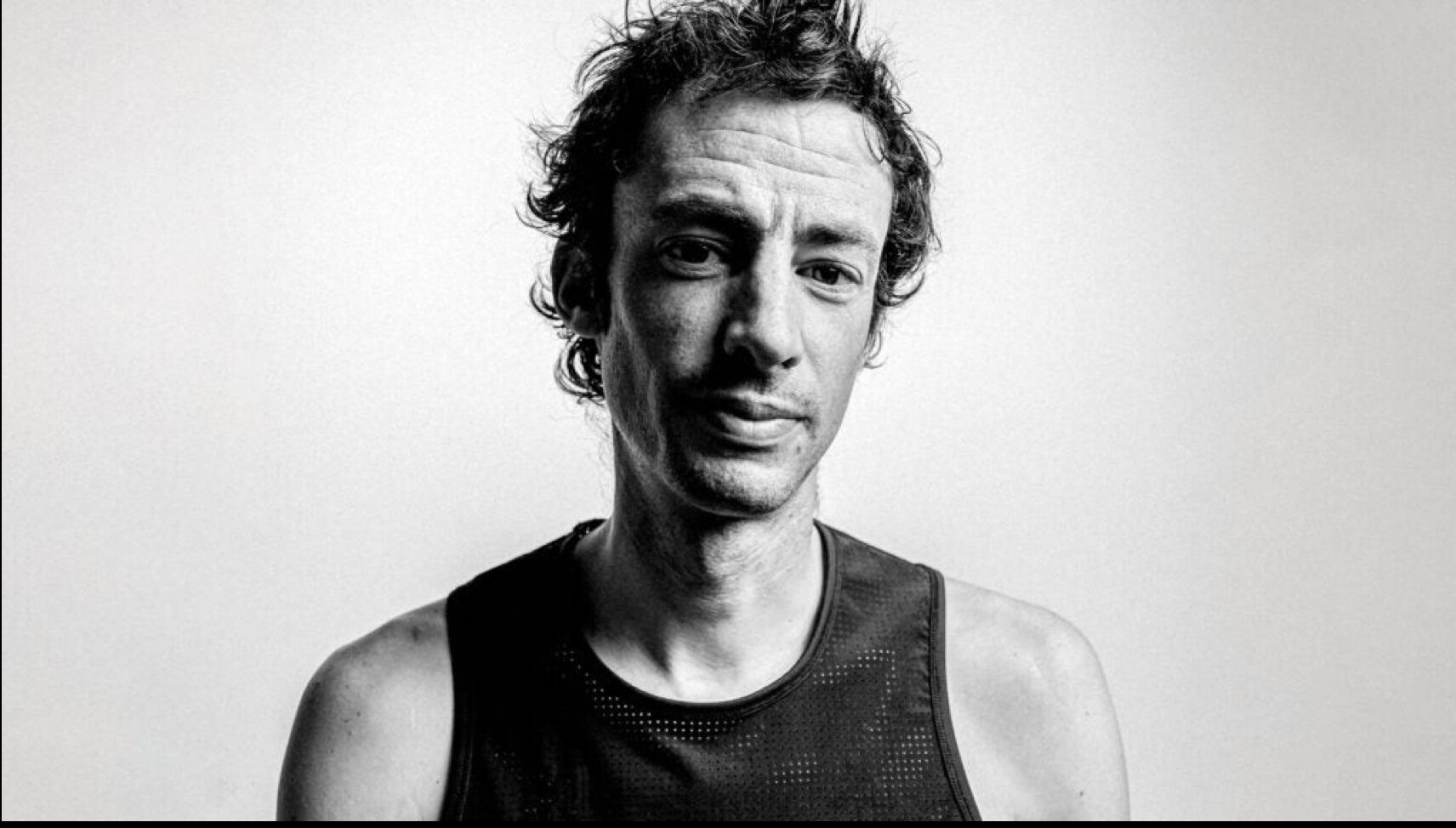
Your long-term partnership with Salomon ended last year. What made you decide it was time to do your own thing? I've always been a geek when it comes to gear. I had the idea of developing something on my own, but it was more a dream than a project. Then last year, through a mutual friend, I met the Fluxa family, who own Camper shoes, and told them that I wanted to do something in the outdoor space. Since the first conversation, we saw that we shared the same values and vision around social and environmental responsibility. From there things went fast. I'm very grateful for all the years at Salomon, and for all their support and what we did together, but it was time to do something different.
How did the idea for NNormal come about? We thought that the best way to implement our ideas-in terms of products, marketing, and corporate responsibility-was to create our own company. The benefit of cofounding a company is that you don't need to answer to shareholders at the end of the year, so you can develop your mission without any pressure. Of course, you want it to be economically sustainable, but you can always put product and company values at the forefront.
With the exploding popularity of ultrarunning, do you believe there will be more professional athletes in the near future? In the past five years, I've seen many more athletes becoming professional-not just to survive, but earning a good salary. More brands are creating teams with great resources. I think that will continue, and I hope it increases equality and diversity in the sport. Many of the big competitions have fewer female participants than male, and many of the sponsorships are from brands in Western countries. In this regard, brands have a big role to play, not only in equal sponsorship opportunities, but also when it comes to marketing and communication.
Many outdoor apparel brands say that protecting the environment is an important part of their company philosophy. How does NNormal plan to tackle that challenge? At NNormal we want to focus on durability. That means making products that perform well for a long time and are easy to repair. They should also have emotional durability, which means that they look good today and in five years. We want to make collections that are timeless and not designed according to seasonal trends. It's important to have great standards when it comes to the environmental footprint of the materials as well as the production process. Most important, we want to base our business model not on overconsumption but on finding different ways to be economically sustainable.
The running-shoe market is notoriously competitive. What makes you optimistic that NNormal can succeed? The first thing is to define success. Is it to sell a lot, or to have a quality product? We have a great team of footwear developers-we have the experience of Camper for shoe development and comfort, and we have a very talented group for performance footwear. For our first shoe, the Kjerag, we wanted to make something that performs well on different terrain and over different distances. I think our approach of durability, comfort, and versatility will appeal to many athletes. But we'll see what our customers think.
(12/18/2022) ⚡AMPby Trail Runner Magazine
Three ways to get a grip on winter running
Just because there’s snow on the ground, it doesn’t mean you should take your running goals into hibernation. Winter is a great time to get outside and enjoy the fresh air, and running in the snow can be fun, if you’re prepared. There is more to running in the winter than simply embracing the cold—you’ll need the right gear to ensure your safety.
Follow these three tips to stay safe and comfortable while running in the snow.

Invest in the right gear
Making sure you are prepped with the right equipment before heading outdoors is the best way to guarantee a safe and successful run. Buy shoes with good traction on the outsole with either Gore-Tex or water-resistant materials to keep your feet warm and dry. Some other gear to invest in is thermal or merino-wool moisture-wicking socks, a winter-specific hat, warm gloves that are not too bulky, plus a wind and water-resistant jacket to keep you warm and dry. Just because there’s snow on the ground, it doesn’t mean you should take your running goals into hibernation. Winter is a great time to get outside and enjoy the fresh air, and running in the snow can be fun, if you’re prepared. There is more to running in the winter than simply embracing the cold—you’ll need the right gear to ensure your safety.

Follow these three tips to stay safe and comfortable while running in the snow.
Invest in the right gear
Making sure you are prepped with the right equipment before heading outdoors is the best way to guarantee a safe and successful run. Buy shoes with good traction on the outsole with either Gore-Tex or water-resistant materials to keep your feet warm and dry. Some other gear to invest in is thermal or merino-wool moisture-wicking socks, a winter-specific hat, warm gloves that are not too bulky, plus a wind and water-resistant jacket to keep you warm and dry.
Look for a running jacket that isn’t black, and that has reflective elements, so you can be seen by motorists. If you can’t get your mind off that stylish black jacket, there are plenty of reflective accessories (i.e., lights, vests and reflective bands) you can purchase from your local running store to help make you visible.
Find the safest route
The last thing you want is to risk falling on slippery roads or trails. Avoid roads or paths that have not been cleared of snow and ice, and instead, look for running routes that have been plowed and are well-lit, so drivers and other pedestrians can see you.
If you are on the trails, be cautious of your surroundings and watch for potential hazards, such as branches or other debris that could be hidden beneath the snow.
Take it slow and listen to your body
Even if the snow looks like it’s packed down well, take it slow and be cautious so you can grasp the conditions in the first few kilometres. Start at a slower pace and gradually increase your pace as you become more comfortable with the footing.
One technique runners use for better grip and control in the snow is to shorten their running stride. Using this strategy keeps your centre of gravity low, which can result in having more control on a wet or slippery surface.
If you feel cold, tired, or uncomfortable, don’t hesitate to stop running (but do keep walking, so you don’t get too cold too quickly). Don’t get too caught up in your pace. One slow training run isn’t going to disrupt your training, but pushing your body toward injury will.
(12/17/2022) ⚡AMPby Marley Dickinson
Steiner, Prandini and Brown to race Millrose Games 300m
Global medalists Abby Steiner, Jenna Prandini and Brittany Brown are set to clash in the 300m when the 115th Millrose Games, a World Athletics Indoor Tour Gold meeting, takes place in New York on February 11.
Steiner, the NCAA indoor 300m record-holder, had a breakthrough campaign in 2022. The 23-year-old completed her collegiate career at the University of Kentucky with four NCAA titles, setting a US indoor record and outdoor NCAA record in the 200m. She then lowered her PB to win the US 200m title, qualifying for the World Athletics Championships Oregon22, where she finished fifth and also formed part of USA’s victorious 4x100m and 4x400m teams.

“I am beyond excited to be running at this historic meet for the first time in my professional career,” said Steiner. “I’m looking forward to the atmosphere, fans, and great competition that Millrose always provides!”
Steiner ran her NCAA indoor 300m record of 35.80 in December 2021. The US best of 35.71 is held by Quanera Hayes, while the world best of 35.45 was equalled at the Millrose Games in 2018 by Shaunae Miller-Uibo. Both of these marks could come under threat in New York in February.

Among those challenging Steiner in this Millrose Games signature event will be her fellow world 4x100m gold medallist Prandini and 2019 world 200m silver medallist Brown.
Prandini is a three-time NCAA gold medallist for the University of Oregon, as well as a two-time US 200m champion. As well as winning world 4x100m gold in Oregon, she also claimed Olympic 4x100m silver in Tokyo.
Brown claimed her world 200m medal in Doha in 2019 and more recently won the 200m title at the NACAC Championships in The Bahamas.
Also in the women’s 300m field at the Millrose Games will be Cynthia Bolingo, Belgium’s 2019 European indoor 400m silver medallist.
These are the latest stars announced for the Millrose Games, joining the showdowns in the pole vault between Katie Nageotte, Sandi Morris, and Katerina Stefanidi, and in the shot put, featuring Ryan Crouser and Joe Kovacs. The men’s 3000m, meanwhile, will star Geordie Beamish, Cooper Teare and Josh Kerr.
(12/17/2022) ⚡AMPby World Athletics
NYRR Millrose Games
The NYRR Millrose Games,which began in 1908 as a small event sponsored by a local track club, has grown to become the most prestigious indoor track and field event in the United States. The NYRR Millrose Games meet is held in Manhattan’s Washington Heights at the New Balance Track & Field Center at the Armony, which boasts a state-of-the-art six-lane,...
more...How to quickly react to, and heal from sports injuries
While playing sports, either professionally or just as a hobby, accidents happen suddenly, causing minor or major injuries. While prevention strategies can help you avoid them, an unexpected collision when you make a wrong move can result in serious and painful injuries. Therefore, be ready to react as soon as this happens, and if it’s serious, seek medical assistance immediately. In that way, you protect yourself from the worst outcome, and if you’ve been through this, follow the article for some tips on how to heal from a sports injury.
React Immediately

Some sports injuries can’t be treated and healed at home, so you need to react quickly. For instance, it often happens that one sprains or breaks an ankle doing a usual exercise, and it can have certain consequences. For that reason, check out the valuable pieces of advice at Science of Rehab, and let the healthcare professionals help you heal the injury. A sprained or broken ankle can cause you a lot of trouble, especially if it isn’t treated as it should be, so don’t put yourself in danger of having serious consequences. Seek medical treatment, be disciplined, and take care of it in the future.
Make Use of the Rice Method

The “rice” abbreviation stands for rest, ice, compression, and elevation, which are major treatments for your tissue injury. The first step after the injury is to stop your activity immediately and rest for the first two days. Resting prevents any further injury, so this step is highly important. Further, apply ice for twenty minutes every three hours during the first days of being injured. The cold will prevent swelling and pain in your injured area. After that, wrap the injured area with an elastic medical bandage, which shouldn’t be too tight as to interrupt blood flow, and at the end, raise the injured body part because it reduces pain, swelling, and throbbing.
Allow the Injured Area to Heal
An injured body part will struggle to heal if you repeatedly use it after an injury. The pain in it is an excellent indicator that you don’t recover properly, so you shouldn’t ignore it. Often, the best possible option is to immobilize the injured body part and rest it completely to allow its complete healing. When you use the injured body part all the time, things might get complicated because an acute injury may become a chronic one, which could be difficult to heal.
Consult a Professional
Minor sports injuries typically heal and improve after two weeks of rest and a break from sport or exercise. A lack of improvement could be a sign you should consult a sports doctor, who’ll help you with clinical examinations and scans that will warn you to focus on a faster recovery with minor complications. Understanding your injury will facilitate your physical and mental recovery significantly. Also, you should consult your doctor about the exercise regime, which will help the healing process and ensure that appropriate milestones are achieved.
Food Can Help You
Just because you’ve injured yourself doesn’t mean you shouldn’t stay fit and healthy. First, if you’ve injured your knee, exercise your upper body with weightlifting. If you’re healing a shoulder injury, do some yoga or exercises for the lower body. Also, take care of the foods and supplements that can help the body heal faster.
Eat protein-rich foods like fish and meat, and eat citrus fruits, which are full of vitamin C that rebuilds tissues and has anti-inflammatory properties. Omega-3 fatty acids are great supplements you can find in chia seeds, salmon, and walnuts. As a result, choose your groceries carefully and avoid gaining too much weight, as this will also slow down your healing process.
Be Patient
This last step is often difficult when recovering from a sports injury, particularly over a longer period of time. Many athletes start their sports activities before they’re really ready, which often leads to re-injury and a much longer recovery period. One of the best ways to recover, among all the other tips, is to practice patience during the recovery and resist the urge to push your body too quickly. If you let your body heal at its own pace, you’ll be rewarded with a complete recovery and a bright future in sports.
In summary, a fast recovery from a sports injury requires discipline, medical expertise, and lots of patience. Seeking guidance from specialists while being responsible and careful not to further complicate the injury can make a significant difference in recovery time. Therefore, try to avoid negative thoughts or wrong tips from people who can’t help you, and your healing process will be easy and complete.
(12/17/2022) ⚡AMPby Colorado Runner
How Young Is Too Young to Lace Up for a Marathon?
A new paper looks at the available research and makes recommendations.
The world—running and not—had its eyes on the Flying Pig Marathon this past May after a 6-year-old boy completed the race with his family in 8 hours and 35 minutes.

It wasn’t the finish itself that caused an outcry, but a subsequent social media post by the boy’s mother that references his distress during the later miles of the race.
The photo showed the boy holding a box of Pringles potato chips with the caption, “On the marathon course, Rainier knew they usually hand out Pringles around mile 20. He was struggling physically and wanted to take a break and sit every three minutes. After 7 hours, we finally got to mile 20 and only to find an abandoned table and empty boxes. He was crying and we were moving slow so I told him I’d buy him two sleeves if he kept moving. I had to promise him another sleeve to get him in the family pic at the finish line. Today I paid him off.”
Sports medicine experts and pediatricians got wind of the boy’s marathon finish, and its unique circumstances, and published a paper in JAMA Pediatrics in October, titled “Kids on the Run—Is Marathon Running Safe for Children?”
The answer is: We’re not totally sure.
“Youth running is becoming more popular, particularly at longer distances, and the trend is ahead of the research,” says Emily Kraus, M.D., a clinical assistant professor at Stanford University, a sports medicine physician at Stanford Children’s Hospital, and the director of the the Female Athlete Science and Translational Research Program.
Kraus, a runner, was not an author on the JAMA Pediatrics paper but coauthored the 2021 youth running consensus statement published in the British Journal of Sports Medicine.
“We can’t conclude that there’s no risk or minimal risk, or a greater risk [to young children running long distances],” she tells Runner’s World.
The paper looks back at the running boom of the 1970s when several young children completed marathons; children as young as 8 years old covered the distance in 3 hours and 31 seconds. The authors note that although there were no reports of injuries or adverse events, physicians and race directors started to worry about the potential dangers of youth participation. In 1981 the New York City Marathon, then in its 11th year, instituted a minimum age requirement of 16 years old. Other races followed suit.
A 2010 paper published in the Clinical Journal of Sports Medicine looked at data from the Twin Cities Marathon from 1982 to 2007, which included 310 children aged 7 to 17 years old. The researchers found that the risk of a medical incident was about 50 percent lower in children than adults but not statistically significant. In other words: We can’t say for sure if they’re at lower risk for injury or medical problem.
“Some of the early research shows that the overall risk of competing in races is quite minimal or lower when compared to the adult running population,” Kraus says. “But the question becomes is that because the number [of children finishers] is so much smaller?”
Kraus, who treats primarily middle-school age athletes whose growth plates are still open, expresses concerns that we don’t know if marathoning at a young age will affect long-term growth and development.
“Young kids haven’t even started to initiate [certain developmental] milestones,” she says. “Athletes who are younger than 10 or 11 years old are true children. We don’t know enough to give the okay, in my opinion.”
Kraus advises against the repetitiveness of a single activity over time, like running. Instead, she encourages young athletes to try different physical activities that lend themselves to multidirectional movement, like soccer, tennis, and old-fashioned tag.
When asked to give guidance on a distance for young kids, Kraus says anything up to a 10K is “probably okay.” Ideally, she says, we would measure how far a young kid runs on any given day during free play or team sports to help guide that recommendation.
“[For children], free play at that stage of their development is more valuable in developing motor skills, agility, and hand-eye coordination,” she says.
Plus, although research is clear that healthy behaviors developed during youth sports can promote long-term physical activity and reduce the risks of diseases like diabetes, cardiovascular disease, and cancer, “sport specialization during childhood does not provide competitive advantages and is not a requirement for elite status,” the authors wrote in the JAMA Pediatrics paper.
What’s more is that youth marathon or ultramarathon running may not lead to lifelong participation in running events or long-term health benefits. The authors wrote: “Among children who participated in ultramarathons [longer than a marathon], less than 25 percent continued to do so as adults, and less than 10 percent were still running ultramarathons 30 years later.”
Most youth ultrarunners, the researchers wrote, are between 16 and 18 years old, but there are runners younger than 10 years old who have completed an ultra event.
Experts are unsure if this drop off in participation is because of overuse injury and burnout, or changes in interests. The authors go on to say that potential health benefits and risks of youth marathon running have not been compared similarly to shorter distance running or other sports.
But pediatric specialists like Kraus and the authors point out that the bigger question and concern when it comes to youth marathoning, particularly in children under 10 years old, is the intrinsic motivation of a young runner.
“Why is this child racing? Is it because they have a family of runners and they don’t want to feel left out? Is it something they deeply want to do?” Kraus asks, noting that young children likely don’t fully understand what training for and running a marathon really entails.
“If I were working with a 6-year-old, my conversation would be, ‘Do you know what [a marathon] is? Do you know what it feels like to run one mile? Or other shorter distances?’” Kraus says.
She’d then also work with families to understand why they were having a young child participate in such an extreme distance at this particular time, suggesting, instead, to use a marathon as a goal for years down the road.
Based on the available evidence, the authors developed a list of points families should consider before a young child runs a marathon or ultramarathon, in addition to assessing the physical health of the child, including:
Potential risks and benefits, reiterating there is limited available research
Determine the motivation for marathon running, with an emphasis on voluntary participation
Inform children that they have a right to stop at any point and will not be punished or experience negative consequences if they decide to stop
Discuss ways children can communicate their choice to parents and guardians
Monitor physical, psychological, social, and academic well-being, as well as continued commitment to marathon running during training
“For a 6- or 7-year-old who hasn’t fully captured goal-setting and follow-through, a marathon is a different type of challenge that goes beyond what they’re capable of handling,” Kraus says.
(12/17/2022) ⚡AMPby Runner’s World
Bahrain's Eunice Chumba wins Adnoc Abu Dhabi Marathon in her fourth attempt, Kenyan Timothy Kiplagat takes the men’s title after starting the race as a pacemaker
Kenyan-born Bahraini athlete Eunice Chumba made her experience count as she won the elite women’s section of the Adnoc Abu Dhabi Marathon on Saturday.
She clocked 2 hour 20 minutes and 41 seconds, just outside her personal best 2:20:02, to clinch the top prize.

Chumba changed gears in the final two kilometres to beat Kenya's Angela Tanui (2:21:14). Mare Dibaba (2:21:25) of Ethiopia was third.
In the men’s race, Kenyan Timothy Kiplagat ran the race of his life after starting as a pacemaker to become the fourth man to win the Adnoc Abu Dhabi Marathon.
Kiplagat crossed the winning line in a personal best 2:05:20, nearly four minutes ahead of compatriot Felix Kimutai and Ethiopian Adeladhew Mamo, who was a further 10 seconds down in third.
Chumba, 29, was runner-up in the inaugural Abu Dhabi Marathon in 2018 and was fourth in 2019. She was runner-up again last year after the 2020 event was cancelled following the Covid-19 outbreak.
It was a festive atmosphere in the UAE capital as the fourth edition of the Abu Dhabi Marathon drew more than 20,000 runners in various categories - elite marathon, marathon relay, 10k run, 5k run, 2.5k 'Fun Run' and wheelchair race.
“I tried to win this race for Bahrain from my first visit to Abu Dhabi and I have finally managed to fulfil that dream in my fourth attempt,” Chumba told The National.“It was a very challenging race with Angela and Mare, who have both run better than my personal best time. We raced together for a long time and it wasn’t until the final five kilometres of the race I felt I could win.
“I tried my best to better my personal best time but just couldn’t do that. Perhaps on another day and another race. Having said that, I’m just delighted to win in Abu Dhabi.”
Chumba won a silver medal for Bahrain in 10,000m at the 2018 Jakarta Asian Games and ran a creditable seventh at the 2020 Tokyo Olympics.
“Yes, 2024 Paris is very much on my radar,” she said of her plans.
“This year was fantastic and it certainly was a nice way to end the year. I’m going to take a small break and be back in training from January, and hopefully return to defend my title in Abu Dhabi.”
Kiplagat, 25, bettered his previous personal best time of 2:07:01, set at the Marathon Eindhovan in October 2021. He arrived in Abu Dhabi on the back of winning the Melbourne Marathon in October.
“I felt so good today, setting the pace and with nobody to challenge towards the finish. This was a great opportunity to win a race,” Kiplagat said.
“It was my first time in Abu Dhabi and what a wonderful day it has been for me. The race route was flat and fast, the weather was pretty ideal. It was one of those days when everything turned out to be beautiful for me.”
The Relay Marathon was won by the Irish pair Michelle Nagle and Niall McCarthy of Slainte Endurance in 2:58.53.
Anouar El Ghouz (29.09) led the first four home for Morocco in the men’s 10km race while Briton Eilish McCologan (31.44) took the women’s race.
Joren Selleslaghs of Belgium took the men’s 5km run while Egyptian Sara Salama won the women’s prize. UAE's Badr Al Hosani bagged the men’s wheelchair title.
(12/17/2022) ⚡AMPADNOC Abu Dhabi Marathon
The Abu Dhabi Marathon is shaping up to being first class marathon for both elite runners and average runners as well. Take in the finest aspects of Abu Dhabi's heritage, modern landmarks and the waters of the Arabian Gulf, at this world-class athletics event, set against the backdrop of the Capital's stunning architecture.The race offered runners of all abilities the...
more...Roundabout runner does it again
When we spoke with Healdsburg, Calif., runner Tate Dobson two weeks ago, he had no intentions of getting back out and running another roundabout ultramarathon. On Dec. 11, the 21-year-old went out for another six-hour roundabout rip on the same loop, but in the opposite direction.This time around, Dobson repeatedly ran counterclockwise and bettered his time and distance, covering 61 kilometres in his six-hour time limit, with an average pace of 5:53/km. (He ran 58 km when he ran clockwise, 12 days previously.)
Dobson ran around the 140-metre loop 437 times. “I think I don’t get dizzy,” he laughs. After 851 total loops, we hope Dobson has the Local Legend and the segment record on Strava.

He has gained quite the following on his Strava and Reddit since his inaugural roundabout ultra went quasi-viral. He cleverly named his run on Strava “widdershins,” which means counterclockwise.
He once again was fuelled on only water and Motts-branded fruit gummies. “I set up a gummy’s and water fueling station on the middle of the sidewalk in the roundabout,” he laughs. “I tried to fuel every half hour but did not do a great job.”
This time Dobson did not do the challenge alone, but had a friend who jogged with him for support. He also motivated two other friends to do the same roundabout challenge in Atlanta, Ga.Dobson, 21, lives in Healdsburg with his grandfather and had no interest in running, let alone ultrarunning, until the pandemic. “I saw a few runners on Strava posting high-effort satirical runs (Strava art or vertical challenges), and one day, after a few drinks, I was walking home through the roundabout and wondered how long I could run around it for,” says Dobson. When asked whether he would return to the roundabout for another ultra, he said not for a while.
(12/17/2022) ⚡AMPby Running Magazine
Sean Tobin sets record at Antarctic Ice Marathon
Ireland's Sean Tobin (a 2018 Ole Miss grad) runs a 2:53:33 marathon (6:37/mile pace) over snow in 6-degree temperatures at the Antarctic Ice Marathon. It's the fastest marathon ever run in Antarctica, breaking Mike Wardian's record of 2:54:54.
Tipperary native Seán Tobin has won the Antarctic Ice Marathon and has set a new world record in the process.

The Irish star finished in a time of 2:53:33 to take home victory in the 17th edition of the event.

In doing so, Tobin smashed the previous record of 2:54:54 set by USA’s Mike Wardian five years ago during the 2017 World Marathon Challenge.
The 28-year-old, who is known as the Irish hammer, was a track star in his youth and won National titles in 1,500m and 10,000m events. He has also broken the four-minute mile barrier in the past.
It might be cold back home, but it is nothing compared to the -14C conditions Tobin battled through for nearly three hours.
But the Clonmel man kept his cool, handled the pressure and created a little slice of history on the icy continent.
(12/16/2022) ⚡AMPBrigid Kosgei, Stanbic Bank partner to help teenage mothers in Marakwet
World marathon record holder Brigid Kosgei has partnered with Stanbic Bank to help 50 teenage mothers in Marakwet West to resume learning after terminating their studies due to early pregnancy.
Kosgei, who won the 2018 and 2019 Chicago Marathons, the 2019 and 2020 London Marathons and the 2021 Tokyo Marathon, said many girls in the area are dropping out of school due to pregnancy.

Kosgei thanked the bank after receiving Sh6 million from the institution to go towards the education of the 50 girls.
“Seeing the girls going back to school is one my greatest achievements. I challenge them to forget the past and focus on their education for a bright future,” said Kosgei.

Stanbic Bank CEO Charles Mudiwa said the bank decided to support the girls through the Brigid Kosgei Foundation so as they go back to school and proceed with studies.
Mudiwa regretted that many girls from Marakwet are dropping out of school due to teen pregnancy and hence there was a need for intervention by all stakeholders to enable the teenagers resume learning.
“On average one in five girls aged between the age of 15 and 19 drop out of school due to pregnancy. Today, we gave out Sh6m to more than 50 who had dropped out of school to go back to school,” said Mudiwa.
Mudiwa challenged the society not to condemn such children but instead help them resume learning.
He said that the bank will pay fees for the girls from Form One to Form Four.
The foundation will also support 10 boys from the same area from needy families to pay secondary school fees for the next four years.
Most of the beneficiaries are students at Kipkundul Mixed Day Secondary School.
Kosgei said the foundation will continue working with various institutions to support needy children in the area to pursue their studies.
“As a village girl, I know the challenges facing such girls. I am ready to go out of my way to support needy girls in society,” said Kosgei.
Area Member of parliament Timothy Kipchumba Toroitich pledged to support the initiative by improving infrastructure in all schools.
Toroitich cautioned parents and guardians against denying teenage mothers an opportunity to resume learning.
According to a report by the National Council for Population and Development, every year, about 13,000 girls drop out of school due to unplanned pregnancies.
In 1994, Kenya introduced a return to school policy for teenage mothers.
Under this policy, any girl who gets pregnant is allowed to remain in school for as long as she wants or is able to.
(12/16/2022) ⚡AMPby Titus Ominde
Slew of elite runners added to line-up ahead of Adnoc Abu Dhabi Marathon 2022
Some of the world’s best long-distance athletes will be among a record 20,000 participants when the 2022 ADNOC Abu Dhabi Marathon gets under way on Saturday morning, on a new course that snakes its way through the streets of the UAE capital.
Abu Dhabi Sports Council announced in a press conference at ADNOC Abu Dhabi Marathon — Event Village that Ethiopian Adeladlew Mamo, winner of this year’s Seville Marathon, joins the field alongside Kenyan pair Daniel Kibet, winner of the 2019 Istanbul Marathon, and Dickson Chumba, champion in Tokyo in 2015 and 2018, as well as Chicago in 2015.

Moreover, Olympian Eunice Chumba has also been added to the elite runners line-up. She will be looking to add the Abu Dhabi title to a collection that includes the 2017 Beirut Marathon. Chumba will face competition from, among others, 2016 Olympic bronze medallist Mare Dibaba of Ethiopia and Kenya’s Angela Tanui, winner of the Amsterdam 2021 Marathon.
Strong position

Mohamed Ahmed Al Remeithi, International Events Section Head: “The ADNOC Abu Dhabi Marathon has established itself as a staple sports event on the country’s annual sporting calendar. The fourth edition of the event will see the launch of a new track that passes several of the emirate’s prominent landmarks in Abu Dhabi. The ADNOC Abu Dhabi Marathon has attracted 20,000 registrations this year, indicating its strong position on both a local and international scale and further reinforcing the impact the marathon has on society in the UAE.”
The fourth edition of the ADNOC Abu Dhabi Marathon includes the full 42.2km marathon, and the relay marathon in which two runners each cover 21.1km, in addition to 10km, 5km and 2.5km races under the name “We Run Together” and which are open to all. The marathon starts in front of the ADNOC Headquarters and passes through some of the UAE capital’s most famous landmarks of the UAE capital.
The opening ceremony will see the spellbinding Al Fursan aerobatics team carrying out spectacular aerial shows. The team will fly, tumble and twirl through the air, painting the sky with smoking trails of green, white, black and red above the ADNOC Abu Dhabi Marathon race circuit, offering the spectators yet another treat.
(12/16/2022) ⚡AMPADNOC Abu Dhabi Marathon
The Abu Dhabi Marathon is shaping up to being first class marathon for both elite runners and average runners as well. Take in the finest aspects of Abu Dhabi's heritage, modern landmarks and the waters of the Arabian Gulf, at this world-class athletics event, set against the backdrop of the Capital's stunning architecture.The race offered runners of all abilities the...
more...Mercy Cherono and Margaret Chelimo put smiles in ailing children
The 2014 Commonwealth Games 5,000m champion Mercy Cherono and reigning world 10,000m bronze medallist Margaret Chelimo are hopeful of a productive 2023 athletics season.
Speaking in Eldoret after visiting ailing children at the Shoe4Africa Children’s hospital, the duo said that they had a good season in 2022 and are hopeful of a similar display especially at the 2023 World Championships in Budapest, Hungary.

Cherono, a former world junior 3,000m champion, said: “As athletes from 2Running Club, we come here every year to put a smile on the kids. Building this hospital was good idea. We have had a million children treated here since the hospital's inception,” said Cherono.
"I have had the best year in my running career. I want to do more next year,” said Chelimo.
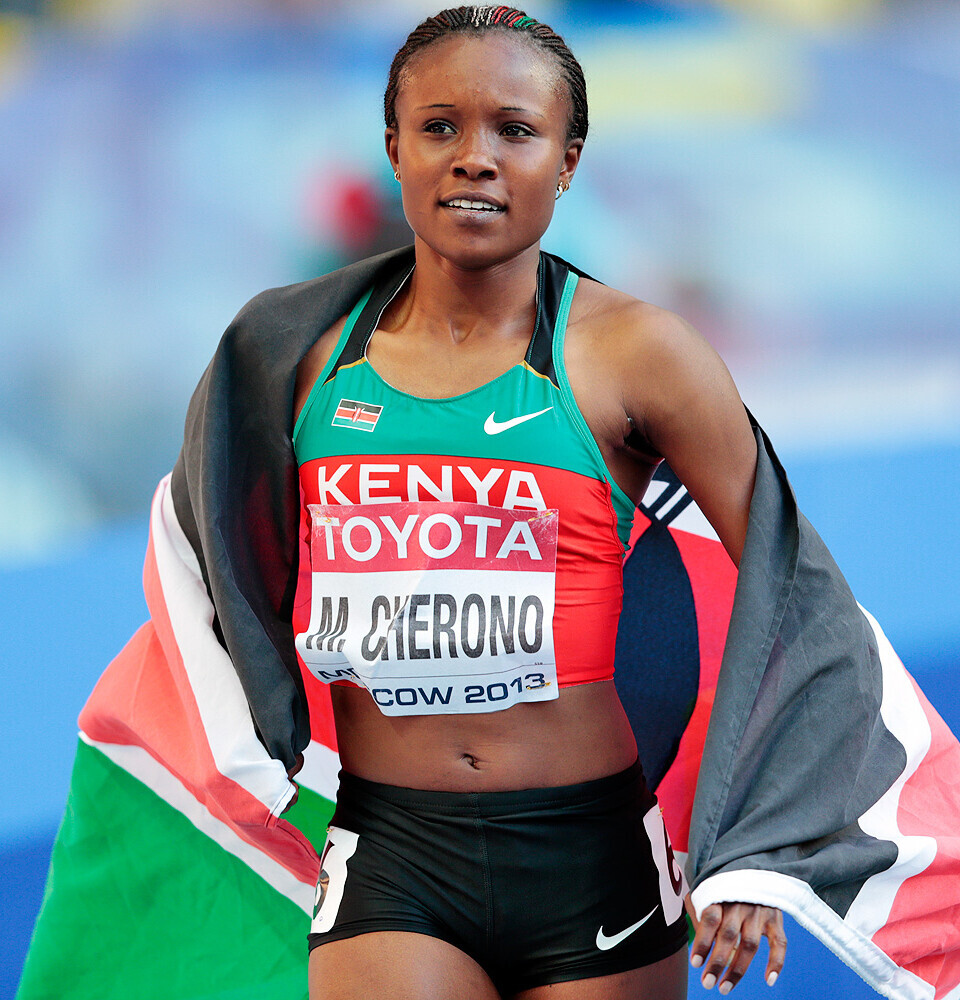
Shoe4Africa CEO Toby Tanser said that Eldoret is famous for running and to have a hospital associated with athletes is a great move.
“As we speak, the 2Running Club has adopted the hospital because runners come here every single year and that is why we have a big screen mounted in the second floor courtesy of you athletes," said Tanser.
"Today, the athletes have brought something to put a smile on their (children's) faces. And with this great atmosphere, the children will play and forget about their pain.”
The hospital, according to Tanser, also has a football pitch and a basketball court where the ailing kids play.
(12/16/2022) ⚡AMP
by Emmanuel Sabuni
Have to miss a few days of running? Here’s how to deal with it the best way
It’s the busiest time of year for many people, and also the season when everyone seems to come down with a cough or cold. If you’re sidelined because of scheduling, travel, feeling sick, or holiday season overload, it can be easy to doom-spiral into worry about lost fitness. Here’s what really happens when you miss a few running days, and what you should do to make up for it (if you want to).
Don’t panic
Stop worrying–you won’t lose all your fitness. Ultrarunner and renowned coach Jason Koop writes: “Here’s a summary of the research: if you miss up to seven days of training, there are no meaningful fitness implications.” He adds that while there may be incremental losses that can be measured in a lab, “the practical amount of fitness degradation from missing up to a whole week of training isn’t much.”

Allow yourself to enjoy the time off (or at least move through it without beating yourself up or feeling like you’re going to rapidly decondition). If you’re sick, know that your body needs rest so that you can keep your time off to a minimum–if you push yourself to exercise through illness or a particularly stressful period, you may end up having to take far more than a few days off.
Zoom out

You’ve probably heard it many, many times–consistency is key. Long-term consistency outweighs short-term intensity. Sure, you may have big goals this season, or next month. Your goals, however, should also include some long-term plans. You probably want to continue to run for years and to maintain as much fitness and health as possible over your lifetime.
It can be hard to remember that when forced to take an unexpected day off, but zooming out and reminding yourself that a few days within the much larger picture of your running career are not critical. Consistency means month over month, year over year.
Life happens and illness and injury strike unexpectedly: while they may require a short-term shift, if your general focus is on consistency, you’ll be just fine. Coach and author Steve Magness says to “do whatever you can while being healthy over the long haul,” and that means if you need a few days off in order to stay consistent long-term, take them.
Adjust where you can
Koop has some adjustments that he makes for coached athletes to add some amount of missed time back in–but only if you’ve missed more than three days, and only when it comes to important workouts (usually intervals or long runs). He suggests adding 50-75 per cent of missed key workouts (recovery runs, while a great part of your training, do not need to be made up for) over a four to six-week period.
Make small adjustments and tweaks to your running schedule where you can, and don’t get stuck on minor details. Koop writes, “if you miss two different one-hour endurance runs (two hours total) you can replace that volume over four to five different days in 15-minute increments.”
If you aren’t able to add more time into an already packed schedule, don’t worry–research has shown that the body recognizes stress, not mileage, and scaling back workouts or taking extra rest days when life throws a curveball at you may actually help your body rebound in the long run.
(12/16/2022) ⚡AMPby Keeley Milne
Eunice Chumba hopes to make it fourth time lucky in Adnoc Abu Dhabi Marathon
Eunice Chumba is hoping she can make it fourth time lucky at the Adnoc Abu Dhabi Marathon on Saturday.
The Kenyan-born athlete, competing under the Bahrain flag, is the most seasoned runner in the elite field.

Chumba, 29, was runner up in the inaugural race in 2018, finished fourth in 2019, and runner up again last year after the 2020 event was cancelled following the outbreak of the Covid-19 pandemic.
She arrives for the fourth edition of the Abu Dhabi race on the back of a personal best 2 hrs 20 min and 02 sec that saw her finish third at the Seoul Marathon on April.

“It’s been a pretty good year for me so far and would be even better if I can finish it with a first position in Abu Dhabi,” Chumba told The National at the Event Village on Thursday.
“I have prepared well for this race and hoping I will be fourth time lucky in Abu Dhabi. It’s a title that I have been trying to win from its inaugural year. I have run two marathons and two half marathons this year, and I feel I’m in good shape coming into this race.
“There are lots of challenges of course but I hope I can better my own personal best to achieve this long-standing objective.”
Chumba will still have just over three minutes to make up to match Kenyan Angela Tanui, who ran the 46.2-kilometre distance in 2:17:57 in Amsterdam in 2021.
“My friend Angela has a personal best 2:17 and Mare Dibaba has a personal best 2:19, so I have a lot of catching up to do with these two, but I’m hopeful I can run a personal best on the day,” Chumba, who won silver in the 10,000m race at the 2018 Jakarta Asian Games and finished seventh in the Tokyo Olympics last year, added.
Tanui, 30, the winner of the Amsterdam 2021 Marathon, and Ethiopian Dibaba, 33, a bronze medallist at the 2016 Rio Olympics for Ethiopia, are both first time runners in Abu Dhabi.
Tanui listed the Abu Dhabi Marathon as a strong race based on her compatriot Judith Jeptum Korir’s results this year after her win in the UAE capital last year.
“Judith won the Marathon de Paris in April and silver in the World Athletics Championships in Oregon in July, which just go to prove what a strong race Abu Dhabi is,” she said.
“That’s a good yardstick to measure strength of the Abu Dhabi Marathon and I’m glad to be racing here on Saturday.”
The men’s elite race is headlined by the Kenyan pair Daniel Kibet, winner of the 2019 Istanbul Marathon, and Dickson Chumba, champion in Tokyo in 2015 and 2018, as well as Chicago in 2015. Adeladlew Mamo of Ethiopia arrives with this year’s Seville Marathon under his belt.
More than 20,000 runners are expected to participate across the marathon relay, half marathon, 10km, 5km and 2.5km races.
The marathon starts and finishes in front of the Adnoc Headquarters and the race-route takes the runners through some of Abu Dhabi’s most famous landmarks.
(12/15/2022) ⚡AMPADNOC Abu Dhabi Marathon
The Abu Dhabi Marathon is shaping up to being first class marathon for both elite runners and average runners as well. Take in the finest aspects of Abu Dhabi's heritage, modern landmarks and the waters of the Arabian Gulf, at this world-class athletics event, set against the backdrop of the Capital's stunning architecture.The race offered runners of all abilities the...
more...What is the right way to breathe when running?
Is there a best way to breathe while running? Or is it just a case of what comes naturally to you?
Surprisingly, you’re not alone for wondering about this, and at some point or another, we have all asked our running friends for help.
As a running coach, I’ve encountered this how to breathe running question on more than few occasions and I think it’s important for beginners to understand how they should approach the sport from the very basics.

I’ve heard people advocate breathing in through the mouth and out through the mouth, using slow breathing rhythms, and all sorts of nonsense.
Nothing irks me quite like the spread of misinformation, especially when it pertains to training topics. Therefore, I am happy to help set the record straight today, by showing you how to breathe easier while running, so you can get back to enjoying your training without feeling like your lungs are going to explode…yes, even if you have asthma!

Should I Breathe Through My Nose Or Mouth While Running?
Here’s the deal:
You should always breathe in and out primarily through your mouth when running.
If your nose wants to join the party and help get air in and out, that’s great.
However, when you’re running, feeding your muscles the oxygen they need is of paramount importance, and breathing through the mouth is the most effective way to inhale and exhale oxygen.
To make the most of your breathing, make sure you avoid “chest breathing” in favor of what’s called diaphragmatic breathing or “belly breathing”.
Why is chest breathing bad?
Chest breathing is a weak form of breathing. It’s too shallow to bring in maximal oxygen and doesn’t fully expel your lungs when you exhale. This may be why you keep getting a side stitch when you run.
Instead, your breathing should be diaphragmatic, meaning the action of inhaling and exhaling extends down into your stomach.
As you breathe, your stomach should expand and contract as your diaphragm forces air into and out of your lungs.
Your chest, meanwhile, should remain mostly still, but you’ll take in more oxygen with every breath.
The next time you go running, be aware of your breathing and your natural inclination to breathe through your nose or mouth.
If necessary, focus on making the necessary corrections and taking in breath through your mouth. It may be a struggle at first, but you should eventually be able to transition to a better breathing technique, and do so without thinking.
With any luck, you’ll notice an improvement in your running efficiency and performance.
How Can I Train My Breathing Muscles To Run Better?
Just as we strength train our hips or hamstrings to improve our leg strength, we can strengthen the muscles used for breathing.
In fact, researchers at the Centre for Sports Medicine and Human Performance at Brunel University in England demonstrated a direct link between the strength of your diaphragm and fatigue during the marathon. We also interviewed world expert, Patrick McKeown on our podcast in an episode dedicated to how to breathe while running and he recommended exercises to help.
The easiest way to start is by lying on the ground.
While lying on your back, breathe deeply so your belly rises with your chest as you inhale, and lowers while you exhale. Feel your abdominal muscles contract, and try to hold the tension as you breathe out as well as in.
Watch your chest, does it rise and fall also?
You want to get to the point where you do not see your chest moving, but your belly is expanding (think making yourself get fat).
Continue to practice this while lying down until you feel confident to move upright.
Once you have this trick down, you can move on to pilates exercises. Pilates help stretch your intercostal muscles and lengthen the spine, which helps improve breathing and running.
What Rhythm Should I Be Breathing To?
Your exact breathing rhythm will depend on how hard or easy you are running and/or the intended intensity of your workout.
What is breathing rhythm you ask?
Breathing rhythms refer to the number of foot steps you take with each foot while breathing in or out.
For example, a 2:2 rhythm would mean you take two steps (one with your right foot and one with the left) while breathing in and two steps (again, one with your right foot and one with your left) while breathing out.
This is part of the method we recommend to stop a side stitch if you are out running and get that familiar side stabbing feeling.
Easy runs
Typically, you’ll find that a 3:3 rhythm (three steps – one with your left, one with your right, one with your left – while breathing in) works best for warm-ups and most easy paced days.
This allows plenty of oxygen to be inhaled through the lungs, processed, and then exhaled with relative ease.
Don’t try to force yourself into a 3:3 breathing rhythm on an easy day if it isn’t feeling comfortable.
Remember, the purpose of an easy day is to keep your effort comfortable and to help the body recover. If a 2:2 rhythm (described below) is more comfortable, go with it.
Breathing slower than a 3:3 rhythm is not advised because you’re not giving your body enough time to clear carbon dioxide.
The average runner should take about 180 steps per minute (some a little less, others a little more), which means you take 90 steps with each foot in a one minute span.
A 3:3 rhythm enables you to take about 30 breaths per minute, ample time to process carbon dioxide while still getting in the oxygen you need.
Moderate paced runs
Runs harder than an easy run, but not all out race efforts, should typically be performed at a 2:2 ratio (two steps – one with your left, one with your right – while breathing in, two steps – one with your left, one with your right – while breathing out).
A 2:2 breathing rhythm enables you take about 45 breaths per minute, which is perfect for steady state, tempo runs, and marathon pace runs.
Hard workouts and Races
At the end of races or the end of a particularly hard interval session, a 2:2 breathing might not cut it. In this case, you can switch to a 1:2 (one step breathing in, two steps breathing out) or 2:1 (two steps breathing in and one step breathing out) breathing rhythm.
This will increase your oxygen uptake to 60 breaths per minute.
I don’t recommend a 1:1 breathing pattern.
At this rate, you’ll be taking shallow breaths and you won’t be able to inhale enough oxygen to maintain proper ventilation in the lungs.
On a personal note, I don’t pay much attention to breathing rhythms at the end of races. I prefer to run all out, focus on competing, and let my breathing take care of itself.
However, it can be helpful to those runners who become anxious as the final meters approach.
Why Will Fixing My Breathing Help Me?
While breathing rhythms can help you identify and monitor the intensity of your run, you can also use them to monitor and control other aspects of your training and racing.
Pacing
Paying close attention to your breathing rhythm can help you monitor and “feel” your pace, especially on tempo runs or tempo intervals.
Once you lock onto your correct goal pace for the workout, you can monitor whether you begin to breathe faster or slower to identify when you accidentally speed up or slow down.
It requires close attention to detail, but it can help for runners who struggle maintaining a consistent pace.
Hills
Many runners wonder how to adjust their pace when taking on a hill during a race, even if you are using the correct running technique for hills.
Unless you know the exact grade and length of a hill, it’s very difficult to accurately measure how much you need to adjust your pace.
However, if you’re maintaining a 2:2 breathing rhythm through the race, then you should focus on maintaining that 2:2 rhythm as you tackle and crest the hill.
By maintaining the same breathing rhythm, you keep your effort even and prevent yourself from spending too much energy getting over the hill.
Side Stitches
If you encounter a side stitch while running, you can slow your breathing rhythm to take deeper, controlled breaths at a 3:3 rhythm.
Often, side stitches are caused by undue stress to the diaphragm, which is escalated by shallow breathing. If your side stitch persists after switching your breathing rhythm, you can try this trick for side stitches here.
As you can see, you have many ways that you can breathe and use rhythms to monitor your effort in workouts and races.
Try not to become too focused on your exact breathing rhythm every step you take. Do what feels comfortable and you’ll usually wind up falling into the proper rhythm by default.
(12/15/2022) ⚡AMPby Runners Connect
IT band syndrome: how to prevent it, take proactive measures and strengthen the muscles around your IT band
Iliotibial band syndrome (ITBS) is a common overuse injury in runners, but one you can start taking steps today to avoid. Here’s the rundown on why runners get it and what you can do to prevent it.
The IT band is a big band of connective tissue called fascia (an elastic connective tissue found throughout the body) that starts outside the hip, runs down the outside of the thigh (enveloping the outer thigh muscles), and has attachments to the lateral knee cap and lower leg. Running is considered a repetitive single-leg activity, requiring the control and coordination of multiple joints–when you begin to fatigue while running, you’ll start to lose the ability to balance well on either leg, adding stress to the IT band.

IT band syndrome happens when your IT band rubs against your leg bone, creating friction. In many cases, this “tightness” of the IT band is caused by weak glute muscles, abdominals or hips. When the IT band gets irritated, you may experience swelling or a snapping sensation on the outside of the knee, as well as pain and irritation.
Preventative measures

The exact cause of ITBS will vary for each individual, and experts aren’t clear on what exactly causes the injury. There are contributing factors you can avoid, however, like increasing training load or intensity too quickly or too soon (aim for a gradual approach). Make sure you are wearing shoes that are best suited for your running style–try to purchase from a local running store where staff will help you figure out what type of shoe you need.
Be cautious when returning to running after a break, as tempting as it is to immediately start at your previous volume. Consulting a physiotherapist or sports doctor if you think you’re experiencing any of the symptoms of IT band syndrome is always the best route to take if possible.
Strengthen the muscles of the hip and thigh
The IT band itself can’t be stretched or strengthened, but doing strength exercises that focus on the muscles around it can help prevent injury and also aid recovery by improving the stability and support of the knee joint. Try basic strength exercises like squats, lunges, and leg presses. Start with no weight or very light weight, and gradually increase the resistance as you become stronger. Proper form is key, and taking your time is essential.
Maintain flexibility and balance
While stretching the IT band is not possible (because it isn’t a muscle, it doesn’t stretch and contract like a muscle does) you can stretch the muscles of the hip and thigh, and keeping these flexible and mobile will reduce tension on the IT band.
Try standing with your feet hip-width apart and reaching your right hand across your body to grab your left elbow. Gently pull your left elbow across your body, feeling the stretch in your right hip and thigh. Hold this stretch for 20-30 seconds, then repeat on the other side.
Practicing simple balance exercises on either leg is also helpful to improve running strength and prevent injuries.
(12/15/2022) ⚡AMPby Running Magazine
Mississippi college student runs 51 second 400m in Crocs
Decathlete and Croc enthusiast Niklas Klei of Kirchlengern, Germany, did something remarkable in a pair of foam clogs last weekend. He broke the Guinness World Record for the fastest lap of a track in Crocs, clocking a ridiculous 51.84 seconds at a track at Mississippi College in Clinton, Miss.
Klei shattered the previous Crocs record of 52.06 seconds, set by his friend and NCAA competitor Will Eggers in June 2020. 2012 Olympic 800m finalist and YouTuber Nick Symmonds first put the record on the map in early 2020 when he ran 55.65 seconds. Symmonds’s original record-breaking video has been viewed more than 300,000 times.

Klei told us that he did not practise running in Crocs before attempting the record, and accidentally ordered his record-breaking black pair one size too big, which made things tricky. “I wore three pairs of socks to fill the extra space, and my feet were still sliding,” Klei laughs. “Even ‘sport mode’ didn’t help me.” (Crocs commonly have two modes, sport and casual. Sport mode refers to using the back strap, adding additional support. The causal mode has the strap up (over the upper), and is more commonly used for kicking around or grabbing milk from the corner store.
Klei expressed that doing this challenge in causal mode would be extremely difficult. “Running in Crocs is harder than you think,” he laughs.

The 23-year-old holds a personal best time of 47.10 over 400m (wearing spikes) and finished third in the decathlon at the 2022 NCAA Division II Outdoor Track and Field Championships.
“I think a time under 51 or 50 seconds is possible, but with some proper fitting Crocs,” Klei says. Klei and Eggers hope to meet after the 2023 indoor season to settle who the faster runner in Crocs is.
(12/15/2022) ⚡AMPby Marley Dickinson
Avoid hip and knee pain with these three exercises
These bodyweight hip exercises will make you a stronger, more efficient runner while helping you avoid common injuries or sore hips and knees. The hip and pelvic area, which includes the glutes, hamstrings and adductors, play a critical role in supporting your body weight and providing stability and balance while you run.
Strong hips can help you maintain great running form and will reduce stress on your knees and lower back. Hip strength will also help you generate more power and speed, allowing you to run faster and more efficiently. Start with these three exercises before adding weight and more complex lower leg movements to your strength routine.

Lateral lunge
Lateral lunges target hips, glutes, and thighs to boost strength and stability. Try it as part of a dynamic warmup before a run, or as part of a post-run stretching routine. It can also be incorporated into a regular strength training routine–it’s a great basic stretch to start with. Start with 10–15 reps on each side.

Stand with your feet hip-width apart, hands on hips.
Step to the side with one foot, keeping your feet pointing forward.
Bend your knee and lower your hips toward the ground, allowing your other leg to straighten; keep your weight on that heel and push through it to return to the starting position. Repeat on the other side.
Banded clamshells
Clamshells target the gluteus medius, a muscle in the hip that helps with both stability and range of movement. You can try this with an exercise band to add some resistance, but if it feels too intense, start without the band and add it in when you’ve gained some strength in this area.
Lie on your side with your knees bent and your feet together with an (optional) exercise band wrapped around your legs just above your knees.
Engage your core and squeeze your glutes to raise your top leg into the air, keeping your feet together. Only raise your leg high enough so that you’re using your glutes.
Lower your leg back to the starting position and repeat 10-15 times per side.
Bridge (also called hip or glute bridge)
This exercise helps you activate and engage your glutes and avoid putting extra stress on your hamstring and lower back area, which can also help with hip stability and ease of movement.
Lie on your back with your knees bent and your feet flat on the ground.
You may need to play around with the distance your heels are from your hips to really target the glute area. Squeeze your glutes in order to lift your hips toward the ceiling. Hold the position for a few seconds, then lower your hips back down. Repeat 10–15 times to start.
(12/14/2022) ⚡AMPby Running Magazine
Camille Herron sets new 100-mile record at Desert Solstice Invitational
Ultrarunning champ Camille Herron, 40, set a new American 100-mile track open record in 13:02:16 (pending verification) on Sunday at Desert Solstice Track Invitational in Pheonix, Ariz., bettering her record from last year’s event, when she finished in 13:21:50.
“Desert Solstice was a magical experience once again,” Herron shared on social media post-race. “I aimed to go quicker than 100-mile pace, to achieve my 50 mile and 100K track American records. Then it was a test of ultra grit.”

Herron nailed her goals, improving her American records in the 50 mile (5:57:46) and 100K (7:35:50), along with multiple age group records–for a grand total of eleven records at the event. She tapped out of the 24-hour elite invitational race at the 100-mile mark.
Herron led the race until the 50-mile mark, when she took an 11-minute break to deal with some GI distress. “I persevered through the pain, fatigue, and a few bouts of puking to get my 100-mile track American record–unofficially a track world record and masters WR too, 13:02:16, 7:49 per mile (4:51/km),” the runner shared.

“I feel the best in my life right now at age 40 (turn 41 on Christmas),” added Herron. It’s an exciting time in my career, and we’ll keep the ball rolling into 2023. I’m looking forward to a break to recharge and go to Ireland for Christmas.” 2022 is ending on a high note for the athlete, who has had a challenging year dealing with some controversy around the ratification of her world 100-mile road record set at Jackpot Ultrarunning Festival in February.
California-based repeat champ Marisa Lizak was the overall winner of the 24-hour race with 252.18 kilometres (156.7 miles), bettering her PB for the fixed time by four miles, and qualifying her for the U.S. 24-hour team. Lizak, who was second at Spartathlon earlier this year, now ranks third on the all-time chart behind Herron and Courtney Dauwalter.
New Canadian 12-hour record
Canada’s Amanda Nelson set a new Canadian 12-hour record of 135 kilometers, (previously 134.025 km) and was the 3rd place female finisher in the 100-mile event behind Herron and Lisak. She was the 5th woman finisher in the 24-hour event with 15 hours of running.
Nelson set out to tackle the 24-hour Canadian record, but readjusted her goals after experiencing some severe GI issues.”I hit my B goal in the 100-mile event, with my second fastest time of 14:53:47. On my way to 100 miles I managed to better my existing 12-hour national record,” Nelson says.
Heading into the race, Nelson says she knew track running wasn’t her thing. “I do not enjoy such a tight, flat loop course but I needed to see how I could do in an elite field of runners,” she says, describing it as “a whole other feeling.” Nelson says faster paces felt easier for longer and shared, “it was fun for a while, chasing other like-minded athletes. I did what I could on that day.”
Nelson opted to stop after the 100-mile mark, explaining: “Not every race is going to go as planned and we have to learn to trust ourselves and listen to our bodies. I feel that stopping after 100 miles was the right decision for me this past weekend and still feel incredibly accomplished with what I had achieved.”
Whitby, Ont.’s Viktoria Brown was also competing but shared that she wasn’t feeling her best from the start of the race, mentally and physically, and ended up dropping out after 11 hours. After an extremely successful season that included breaking three national records and competing at IRONMAN Kona, Brown says she had possibly simply reached her limit for the year.
“My 24-hour split at 6 Days in the Dome of 213 kilometers puts me in second place for the Canadian 24-hour team, behind Amanda. I feel that I made the right decision to save myself for a better day.”
(12/14/2022) ⚡AMPThe 16th Monthly KATA Time Trial was dominated by Zachariah Kirika
Today in Thika, Kenyan Athletics Training Academy held its 16th edition of Time-Trial featuring 10Km and 5Km with on-form Zachariah Kirika winning both categories.
The monthly mini-competitions were held on a 5Km-loop that saw Zachariah stop at the turning point in 14:41 before deciding to run back with the newly recruited Evans Kiguru.

With rejuvenated strength, He overtook Evans at the 9th Kilometre and arrived at the finish in 31:17 with the latter trailing in 31:19.
Peter Mburu, the winner of last month’s 10Km run 15:04.9 to finish second in 5Km while Raphael Gacheru came third in 15:16.

In 10Km, Eston Mugo clocked 32:17 to close the podium where Alfred Kamandemanaged 4th in 32:35.
In women, Kellen Waithera finished first in 39:04 while Naomi Wambui, both on-come back after their maternity leave, was second in 40:07.
Charles Ndirng’u took the masters 62-years class in 38:35 while Paul Ng’ang’a ruled the 40s category after finishing the loop in 34:35.
A total of 22 participants, all training under Kenyan Athletics Training Academy’s Programe, took part in event that was also the year-ender.
The 17th edition will take place on January 18th, 2023.
POSITION: Name: BIB: AGE: TIME:
10Km
1. Zachariah Kirika 88 21 31:17.8
2. Evans Kiguru 102 27 31:19.2
3. Eston Mugo 84 29 32:17.1
4. Alfred Kamande 105 24 32:35.4
5. Anthony Mukundi 80 34 32:49.7
6. Paul Ng’ang’a 91 42 34:35.8
7. Charles Ndirangu 210 62 38:35.4
8. Kellen Waithera 86 36 39:04.8
9. Michael Kimeu 96 28 40:07.3
10. Naomi Wambui 100 37 40:07.7
11. Kelvin Waiganjo 78 26 47:47.2
5Km
1. Zachariah Kirika 88 21 14:41.1
2. Peter Mburu 72 26 15:04.9
3. Raphael Gacheru 94 23 15:16.9
4. Levis Kuria 90 21 15:37.3
5. Fredrick Kiprotich 101 23 15:44.3
6. Jeremiah Obura 93 19 18:15.3
7. Stephen Kamau 500 19 18:29.9
8. Caren Chepkemoi 87 19 18:38.8
9. Peter Mukundi 70 25 18:40.4
10. Lilian Musenya 103 21 22:01.9
(12/14/2022) ⚡AMPby Coach Joseph Ngure
KATA Time Trial Series
The Kenyan Athletics Training Academy (KATA) in Thika Kenya stages a monthly time trial. Starting Sept 2021 this monthly event is open to anyone who would like to get an official time on a acurant course. Results will be published at My Best Runs so race directors and other interested people can see what kind of shape our participants are...
more...Kenyan John Korir ditches the Houston 21km for Boston Marathon
Houston half marathon runner-up John Korir will not defend his title on January 15, 2023 citing inadequate preparations.
Instead, Korir said he is focusing on the Boston Marathon, set for April 23 next year, where he will run alongside world record holder Eliud Kipchoge and Chicago Marathon champion Benson Kipruto.

“I feel like I have not done enough training to compete in Houston. I had a few issues I needed to handle but now my eyes are set for Boston,” said the newly-wed Korir.
“My target is to finish on the podium in Boston," Korir said, adding that he hopes to leave a mark on his debut of the city.

The two-time Los Angeles Marathon champion said he has just resumed training and committing to run in January would be hasty.
“My training will focus on hill running since Boston is a very hilly course, Korir said.
And following successful outings on American soil, Korir is hoping to extend his prowess.
At the 2022 Armaco Houston Half Marathon, Korir clocked 1:00:27 behind winner Milkesa Tolosa of Ethiopia (1:00:24).
He also won the 2021 and 2022 Los Angeles Marathon editions, clocking respective times of 2:12:49 and 2:09:08.
In his Chicago Marathon debut this year, Korir timed 2:05:01 for third, behind winner Benson Kipruto (2:04:24) and Ethiopia's Seifa Tura (2:04:49).
(12/14/2022) ⚡AMPby Cynthia Chepkurui
Boston Marathon
Among the nation’s oldest athletic clubs, the B.A.A. was established in 1887, and, in 1896, more than half of the U.S. Olympic Team at the first modern games was composed of B.A.A. club members. The Olympic Games provided the inspiration for the first Boston Marathon, which culminated the B.A.A. Games on April 19, 1897. John J. McDermott emerged from a...
more...2020 Olympic gold medalist Randolph Ross receives a three-year ban
Randolph Ross, a U.S. Olympic 400m sprinter who won gold in the men’s 4x400m at Tokyo 2020, was suspended for three years by the Athletics Integrity Unit (AIU) for three drug testing whereabouts failures and creating a fake email to tamper with the investigation process.
Ross is suspended until June 30, 2025, and will miss the 2024 Paris Olympic Games. The 21-year-old admitted that he created a fake system-generated email confirming an update to information surrounding his third whereabouts failure, said the AIU.

Three whereabouts failures in 12 months (not being present for out-of-competition drug tests) can trigger a two-year suspension. Former U.S. 100m world champion Christian Coleman received a two-year suspension in 2019 following three whereabouts failures, which left him out of the 2020 Olympics.
Ross is the back-to-back NCAA champion in the 400m and was removed from Team USA for the 2022 World Athletics Championships in Eugene, Ore., after his third unsuccessful testing attempt on June 18, resulting in a provisional suspension from the AIU.

The 400m sprinter admitted in an interview with Track and Field News that he changed the date in an email to align with an address change that led to his last missed test on June 18.
The reigning NCAA 400m champion for North Carolina A&T University is one of three finalists for the Bowerman Award, the NCAA track and field athlete of the year, which will be named Thursday, Dec. 15. The U.S. Track & Field and Cross Country Coaches Association (USTFCCCA) has not commented on the suspension and Ross is still listed as a nominee for the award.
His dad and coach, Duane Ross, was suspended by USADA back in 2001 for the attempted use, possession and trafficking of PEDs. Duane is currently the head coach and director of the track and field program at the University of Tennessee.
This is the second suspension for one of Ross’s athletes in 2022. Earlier this year, Commonwealth Games medallist Grace Nwokocha was provisionally suspended by the AIU after testing positive for the banned substances ostarine and ligandrol, which are anabolic steroids to help rapidly build muscle.
(12/14/2022) ⚡AMPby Marley Dickinson
Gwen Jorgensen to make shock triathlon comeback ahead of Paris 2024
The 2016 Olympic champion Gwen Jorgensen has announced a surprise return to triathlon – with the Mixed Team Relay at the Paris Olympics in 2024 her primary target.
The American was a legend of the sport, becoming what was then the ITU World Triathlon Champion in both 2014 and 2015 in addition to her Olympic title, the USA’s first ever triathlon gold medal.

She announced her retirement late in 2017, with her focus then switching to running and trying to win an Olympic Marathon title in Tokyo but injuries hampered that and she recently gave birth to her second child, George, who is a younger brother to five-year-old Stanley.
Inspired – and inspiring

She revealed her shock comeback to swim / bike / run on her social media channels, posting on Instagram: “I am thrilled to announce my return to the blue carpet. I’m collaborating with my team to return to form and look forward to the work ahead as I invest in myself and USA Triathlon.
“I am inspired by the mixed-team relay’s silver medal in Tokyo and aspire to contribute to that team in 2024. I believe team USA can be one step higher in Paris!
“As a mom of two and long-time supporter of USA Triathlon, I strive to set an example that motivates and inspires my family, moms everywhere, and team USA.”
And World Triathlon responded immediately to the news, saying: “We are thrilled to welcome you back on the blue carpet Gwen Jorgensen.”
Going into more detail on a YouTube video, embedded below, she added: “I’m coming back to World Triathlon – what was then ITU – but what I’m really excited about is the Mixed Team Relay, which wasn’t an event at the 2016 Olympics.
“That is what is really motivating me to come back to triathlon. The Olympics are coming up really quick and the timeline is super short.
“There is a qualifying event in August 2023 and for me to even get on that startline is going to be super difficult so I’m probably going to be forced to race earlier than I’d like to but… I just gotta dive in and get started.”
The USA can qualify three women for the Olympics, with the likes of Taylor Knibb and Taylor Spivey two of the leading current contenders – and Jorgensen will have to race the individual to be in contention for the Mixed Team Relay (which features two women and two men).
‘Having kids doesn’t mean your career is over’
She speaks candidly about the practicalities of looking after her two children while fitting in her training and explained that an au pair will help with that process.
“I always thought I couldn’t be a mum and an athlete and it was other women who actually inspired me and let me know that I actually can do both.
“Nicola Spirig was probably the biggest motivator for me. She got silver at the 2016 Olympics having had a child. And then she had two more kids and came back and went to the Tokyo Olympics.
“She was a big motivator showing me that having kids doesn’t mean your career is over.”
There have been other inspiring examples too, highlighted by Chelsea Sodaro winning the IRONMAN World Championship at Kona this year, 18 months after giving birth to her first child.
(12/13/2022) ⚡AMPby Jonathan Turner
3598
2023 Dubai Marathon set for grand return in February
The Dubai Marathon will make a grand comeback after a gap of over 1,000 days when the region’s oldest long-distance running event gets under way on February 12, 2023.
The 22nd Dubai Marathon, one of the fastest distance races in international road racing, is all set to attract elite athletes from around the world for the marathon and the associated races — 10km road race and 4km Fun Run.

“The feedback from the industry is that competitors are eager to join us on the start line on February 12,” said Peter Connerton, managing director of Pace Events, organisers and promoters of the Dubai Marathon. “The world has changed considerably since we last staged the event in the weeks before the global pandemic but the appetite for running and fitness remains healthy."
“Race registrations continue to remain at pre-pandemic level and runners who wish to challenge themselves in one of our three races can still secure a place in the category of their choice by registering through the official website."

The event will be staged on a Sunday for the first time in history following the change in the UAE working week. The Dubai Marathon and its accompanying races will start and finish around the Burj Al Arab and Madinat Jumeirah.
"It’s been a very challenging time for the sports events industry, so we’re excited to work closely with the appropriate Dubai Government departments to stage another memorable race," added Connerton.
“In addition, we’ve been in discussions with a number of major name brands and potential partners as to how we can further develop the event for the benefit of the city and our participants. We hope to be able to announce some exciting new partnerships for the race in the days to come. These are busy times with less than ten weeks to go to the big day on February 12.”
Those interested in participating in the race can do so by registering on dubaimarathon.org.
The Dubai Marathon was set for a December return. However, logistical challenges posed by the Fifa World Cup saw the organisers decide to hold the event early next year.
The race was last held in January 2020 where Ethiopians dominated the field once again.
Worknesh Degefa clinched the women’s title with a time of 2:19.37, while in the men’s section Olika Adugna Bikila emerged victorious with a time of 2:06.15.
(12/13/2022) ⚡AMPDubai Marathon
In its relatively brief history (the race was first held in 2000), the Dubai Marathon has become one of the fastest, most respected and the most lucrative marathon in the world in terms of prize money. Each year thousands of runners take to the roads in this beautiful city in the United Arab Emirates (UAE) for this extraordinary race starting...
more...If you're keen to try more plant-based meals, use these tips to keep protein intake high
Supporting an active lifestyle with plant-based nutrition is an increasingly hot topic, as more elite and regular runners have started to make a shift. Whatever your reasons for adding more plant-based meals into your diet, getting adequate protein to fuel your running is key to staying healthy, building strength and recovering well. We have some tips from the experts on how to keep your protein levels up if you are cutting down on meat.
If you’re curious about plant-based eating, registered dieticians Matt Ruscigno and Enette Larson-Meyer, coauthors of Plant-Based Sports Nutrition, suggest making a gradual transition, giving yourself time to find new ways to meet your nutrient needs without meat.

Proteins are formed on building blocks called amino acids, and they are essential to keeping your immune system functioning, bones and tendons strong, healthy skin, hair and nails, and more. Exercise demands support from protein, and some research suggests athletes may require at least twice the recommended daily amount.
Learn about protein-rich plant-based foods (and eat them)

Good sources of plant-based protein include beans and lentils, tofu and other soy products, nuts and seeds and whole grains like quinoa and oats. Start adding more of these foods to your meals to boost your protein intake. Make sure that each meal and snack you eat that is plant-based contains some form of protein.
Don’t be afraid of protein supplements
While you want to avoid extra sugar and unnecessary additives, plant-based protein powders and other supplements can be a convenient and easy way to increase your protein intake. Look for products that are made from high-quality sources of plant-based protein, such as pea or rice protein. Adding protein powder to yogurt, a smoothie, or even into your baking can be a simple way to make sure you’re optimizing protein intake.
Mix and match protein sources
Try combining different plant-based protein sources in your meals to get a complete range of essential amino acids. Pair legumes with whole grains or nuts with seeds to create a more balanced protein profile. By doing this you’ll ensure that you are getting all the nutrients you need to support both your training and recovery.
(12/13/2022) ⚡AMPby Running Magazine
Quebec’s Olivier Desmeules breaks 37-year-old Canadian record
As the indoor track and field season kicks off for many collegiate athletes, Olivier Desmeules of Quebec City started his season with a bang on Saturday at the Penn State Intrasquad Meet, shattering the men’s U23 Canadian 600m record.
Desmeules clocked a record-breaking 1:16.63 (solo) to break Brian Thompson’s previous U23 600m record of 1:17.06 from the 1985 Canadian Indoor Championships in Sherbrooke, Que.

The 22-year-old is an up-and-coming middle-distance runner at Penn State University, specializing in the 800m. Desmeules won bronze in the 800m at the 2022 Canadian Track and Field Championships in June, behind world 800m medalist Marco Arop and Canadian 800m record holder Brandon McBride.
The 600m is a rare middle-distance running event that is only commonly run in the NCAA Big Ten Conference during the indoor track and field season.

The head coach of Penn State’s Track and Field program, John Gondak, said Desmeules’ time was a top-five 600m result in school history, joining elite company Isaiah Harris and former world relay champion Casimir Loxsom.
Desmeules ran one season with Laval Rouge et Or in 2020-2021 before transferring to Penn State University in 2021. The Penn State track and field program is known for producing some of the best middle-distance runners in the NCAA.
(12/13/2022) ⚡AMPby Marley Dickinson
Kenyan graffiti artist Bankslave creates a mural for the GOAT in downtown Nairobi
The marathon world record holder, Eliud Kipchoge, was on hand with his kids for the unveiling of a mural in the Kenyan capital of Nairobi in his honor.
Kipchoge posted the mural on his social media with his two sons, Griffin and Jordon. The mural was created by renowned Kenyan graffiti artist Bankslave, who is well known in Nairobi as a voice of social change and expressionism.
The mural is located on Nairobi’s Kenyatta Avenue, which is the main road that enters the city’s central park (Nairobi National Park). In the past, Bankslave has also created murals of Barack Obama and Muhammed Ali. This isn’t the first time Bankslave has sketched the Kenyan marathon star—he made a mural of him and Ethiopia’s Haile Gebrselassie inside a coffee shop in 2021.

The 38-year-old marathoner is a two-time Olympic champion with 10 Abbott World Marathon Major victories to his resume. Kipchoge has won four of the six majors and is set to compete at the Boston Marathon for the first time in April 2023 before setting his sight on the 2024 Olympic Marathon in Paris.
The bottom of the mural reads 1:59:40, representing Kipchoge’s mind-boggling sub-two-hour time at the INEOS-1:59 event in 2019, where he became the first man to (unofficially) break the two-hour barrier. The top of the mural has his famous inspirational quote, “No Human is Limited.”

An NFT (non-fungible token) of the Kipchoge mural is up for sale on the blockchain website OpenSea and has been listed for three Ethereum coins (approximately $5,100).
(12/12/2022) ⚡AMPby Running Magazine
Kenya’s Erick Kiplagat Sang took the top honors at the Jeddah Half Marathon
The 22 year-old led a 1-2 Kenyan podium finish as he cut the tape with a new personal best of 59:48 and was followed by his compatriot Samuel Nyamae who came in second also with a personal best of 1:00.50.
“I have been part of many marathons that have happened around the world and I am happy to be the winner today in the Jeddah Half Marathon,” said Sang

He added: “I am extremely happy with my performance and plan to participate in more marathons in the future.”
Ethiopia’s Kinde Atanaw closed the podium three finishes also with a personal best of 1:00.04.

Double World 5,000m champion Muktar Idris and the 37 year-old, Samir Jouaher, finished in fourth and fifth place in a time of 1:01.27 and 1:02.10 respectively.
LEADING RESULTS MEN
Erick Kiplagat (KEN) 59:50
2.Samuel Nyamae (KEN) 1:00.50
3.Kinde Atanaw (ETH) 1:01.04
4.Muktar Edris (ETH) 1:01.27
5.Samir Jouaher (MOR) 1:02.10
(12/12/2022) ⚡AMPby John Vaselyne
Jeddah Half Marathon
The Saudi Sports for All Federation is staging the Jeddah Half-Marathon in December. Supported by the Ministry of Sports, Quality of Life Program, and the Saudi Arabian Athletic Federation, and The Saudi Athletic Federation, the Saudi Sports for All Federation (SFA) is set to host the Jeddah Half Marathon 2022 in the heart of Jeddah promenade and Corniche area. The...
more...Norway’s Jakob Ingebrigtsen crowned again at European XC champs
Norwegian distance champ Jakob Ingebrigtsen hunted down his second senior crown at the 2022 European Cross Country Championships on Sunday, at La Mandria Park in Turin, Italy. Ingebrigtsen won the senior men’s race (9.572 km) in 29 minutes, 33 seconds. On the women’s side, Karoline Grøvdal, also of Norway, took the win in the senior women’s race (7.662 km) in 26 minutes, 25 seconds.
Men’s race

Ingebrigtsen, who is the Olympic 1,500 meter champion, led a close race before pulling off his traditional finishing kick over the final 700 meters, increasing his lead to almost 60 meters before crossing the line in 29:33, World Athletics reported. Great Britain’s Emile Cairess surged for silver in 29:42, followed by Belgium’s former U23 winner Isaac Kimeli, who ran to bronze in 29:45.
Both Cairess, who has had a remarkable breakout season, and Kimeli worked hard to stay with Ingebrigsten from the 6K mark. While they matched or were close to Ingebrigtsen for much of the race they had no answer to his final surge, midway through the last of six long 1.4 km laps. “I think it was a great race for me, I had a lot of fun,” Ingebrigtsen said afterwards, taking his sixth consecutive individual continental gold medal overall.

Women’s race
Grøvdal, like Ingebrigtsen, was the defending champion for the senior title. The senior women’s race was a thriller, with Grøvdal, 32, and Germany’s European 5,000m champion, Konstanze Klosterhalfen, in a head-to-head battle for most of the race. Grøvdal, 32, was finally able to move away from Klosterhalfen on the final downhill stretch, 200 meters from the finish.
Grøvdal’s leading time of 26:25 over the approx. 7.7 km course set her just ahead of Klosterhalfen, who ran to silver in 26:29, and Germany’s Alina Reh, who finished in 27:19, barely holding off teammate Hanna Klein in a sprint for the bronze medal. Reh also took bronze in 2021, while Klosterhalfen moved up from fifth place last year.
“I was tired going into the last lap, and I felt that in the last few meters, but I knew that going down the hill that I am good at that,” Grøvdal said post-race. “The technical part is good for me, I felt quite strong going up the hills as well, and I think that is the reason I took the gold.” With eight individual medals, Grøvdal has an unsurpassed record by a woman athlete in the history of the European championships.
This year’s course at La Mandria Park included a 50-meter indoor section, running through a carriage pavilion, which is part of the Mandria Castle, a UNESCO Heritage site. La Mandria Park is the largest enclosed park in Europe, and Italy is now the only country to have hosted the European championships four times.
(12/12/2022) ⚡AMPby Running Magazine
David Rudisha taken to hospital after surviving plane crash
Decorated athlete, David Rudisha was rushed to hospital after surviving a plane he was in crash-landed on Saturday, December 10.
The world 800m record holder was travelling to Nairobi from Kimana Wildlife Sanctuary in the company of others when the light aircraft they were travelling in crash-landed at Imbirikana area of Amboseli.

Athletics Kenya (AK) official Barnaba Korir confirmed the incident, stating that he had talked to Rudisha who had been attended to and was out of danger.
Korir added that the injured were taken to a hospital in Makindu for treatment.

"I have spoken to Rudisha on phone and he told me that he has been attended to and is out of danger," Korir said in an interview with Nation.
The AK official added that the aircraft crash-landed shortly after taking off from Kimana Wildlife Sanctuary for Nairobi.
Kenya Defence Forces athletics chairman Stephen Ole Marai was also on board the aircraft at the time of the accident.
The occupants were rushed to a hospital in Makindu for treatment with investigations launched to establish the cause of the accident.
Initial reports indicate that the that the aircraft, bearing registration details FY-BGJ, developed mechanical problems that forced the pilot to crash-land.
The team was returning to the city from the 2022 Annual Masai Olympics where Rudisha was the chief guest at the event held at Kimana Wildlife Sanctuary in Kajiado South.
Earlier in the week, two people perished in a tragic plane crash in Tsavo East National Park on Thursday, December 8.
Mark Jenkins and his son, Peter died after the plane they were flying in crashed in Huri Plains in Tsavo East National Park.
(12/12/2022) ⚡AMPby Charles Ouma
Ethiopia’s Asefa Mengstu breaks Kenya’s Honolulu Marathon dominance
After sparring toe-to-toe for over half the race, Ethiopia’s Asefa Mengstu outpaced his cross-border Kenyan rival Barnabas Kiptum to cruise into Kapiolani Park and win the 50th anniversary Honolulu Marathon, breaking a long-standing Kenyan stranglehold of Hawaii’s flagship race.
Mengstu won in two hours, 14 minutes and 40 seconds with Kiptum second in 2:17:45, some 10 minutes ahead of third-placed Japanese Yuhi Yamashita (2:27:45) in the race run under brutally windy conditions.
Ethiopia’s Asayech Bere made it an Addis Ababa sweep taking the women’s title in 2:30:58 with her compatriot Abebech Afework Bekele (2:34:39) second and Japan’s Yuhi Yamashita third in 2:27:45.

Kenyan men had been unbeaten here since 2007, Ethiopia’s Ambesse Tolossa having interrupted the clean run by winning the 2006 edition.
Prior to that, Kenyans were unbeaten since Eric Kimaiyo took over as champion from South Africa’s Josiah Thugwane in 1996.

But it was Ibrahim Hussein, the legend, who made the breakthrough as the first African winner on this island city of O’ahu - birthplace of former US President Barack Obama - clinching a back-to-back hat-trick of victories from 1985 to 1987.
Sunday’s golden jubilee race started in it’s traditional night settings at 5am, local time, with spectacular fireworks and, as expected, it was the two Ethiopians, Mengstu and Shifera Tamru, who broke away together with Kiptum, crossing the 10-kilometre mark in 30 minutes and 30 seconds, paced by Kenya’s Reuben Kerio who is also preparing for next month’s Mumbai Marathon.
They then crossed the halfway mark in 1:06:38 under a slight drizzle at the Aina Haina sector after which pacemaker Kerio dropped off at the 30km mark (1:21:00).
There was drama shortly after when Kiptum and Mengstu dropped Tamru, racing on shoulder-to-shoulder as the sunrise launched in spectacular fashion at East O’ahu.
But at 33km, Mengstu broke away and ran a solo race all the way to the finish.
“It was a tough race… I’ve never competed under such tough conditions,” Mengstu said, referring to the furious headwind.
“My strategy was to attack at 35km and I was determined to win,” added Mengstu who trains under the Rosa Associati stable in Addis.
Kiptum was happy with his race, saying the atrocious winds slowed him down, but he remained confident of fighting for a place in Team Kenya to next year’s World Championships in Budapest.
“I ran in conditions similar to these in Hong Kong in 2018, but today’s wind was just too crazy,” he said.
“My body feels fine and I will now fight for a place in the team to the World Championships so that I can represent my country…
“I have what it takes, and I just have to throw in a race in spring and confirm my place in Kenya’s team to Budapest.”
Sunday’s golden Jubilee Honolulu Marathon celebrated the return of full racing and public events after two years of uncertainty occasioned by the coronavirus pandemic, much to the satisfaction of its long-standing President and CEO Jim Barahal.
After Kenya’s Titus Ekiru won back-to-back races here in 2018 and 2019, including setting a course record 2:07:59 in 2019, the race was held as a non-competitive event in 2020 due to the pandemic with Kenya’s Emmanuel Saina winning the title last year in 2:14:32.
(12/12/2022) ⚡AMPby Elias Makori
Honolulu Marathon
The Honolulu Marathon’s scenic course includes spectacular ocean views alongside world-famous Waikiki Beach, and Diamond Head and Koko Head volcanic craters.The terrain is level except for short uphill grades around Diamond Head. ...
more...Did You Know the Boston Athletic Association Has a Membership?
Joining isn’t as simple as you might think.
The 1983 Boston Marathon champion Greg Meyer is a member of the Boston Athletic Association (B.A.A.). So is Bobbi Gibb, women’s champion during the “pioneer era” of the marathon in 1966, ’67, and ’68.

But Kathrine Switzer, who made headlines in Boston in 1967, is not. Nor is Meb Keflezighi, the 2014 champion.

Tom Grilk, the CEO who retired in April, has been a member since 1987. The new CEO, Jack Fleming, is not.
Michael O’Leary, M.D., a surgeon at Brigham and Women’s Hospital and chairman of the B.A.A.’s Board of Governors (which is essentially the same as a board of directors) has been a member of the B.A.A. since 1989. All 13 Governors (10 men, three women) are members—they have to be, in order to be picked to serve on the board.
Scott Peterson, a Miami-area corporate finance professional, is a member, and he has his membership listed prominently on his LinkedIn profile. When asked by Runner’s World about it, Peterson, a marathon veteran, called the group “like-minded people who support the running community.” He said, “It’s a real honor for me and anyone to be part of the membership of B.A.A.”
But what is this selective group, exactly? Who are they? And how are they chosen?
A local mystery
Information about membership on the B.A.A. website is scant, which cloaks the group—intentionally or not—in secrecy. Several people who are deeply involved in the Boston-area running community told Runner’s World they did not know such a group existed. (There is also a B.A.A. Running Club, which is open to runners in the Boston area, but it is different from the membership.)
Chris Lotsbom, a B.A.A. spokesperson, answered multiple questions from Runner’s World about the membership via email. He said the group currently has 174 people.
He also explained that the membership model goes back to the B.A.A.’s founding in 1887. The marathon started 10 years later, in 1897.
The organization had, in its earliest days, a building with a pool, indoor track, bowling alley, and boxing room, among other amenities, like a golf club, for its dues-paying members. The B.A.A. was similar to other athletic clubs across the country, most notably the New York Athletic Club, which still exists.
In the 1930s, during the Great Depression, the B.A.A. lost its headquarters building and its other properties. All that remained was the marathon, the bylaws of the organization, and a small group of members.
The members kept the B.A.A. and the marathon going. And they remain to this day, written into the organization’s bylaws to promote “the common good and the health and welfare of the general public and the encouragement of the general public to improve their physical condition.”
Tom Derderian, executive producer of Boston: The Documentary and author of Boston Marathon: Year-by-Year Stories of the World’s Premier Running Event, takes a skeptical view of the leadership back in the day.
“The B.A.A. expected that their investments in the 1920s would continue to grow,” he wrote to Runner’s World. “The stock market crash and Depression and World War II removed all B.A.A. assets, leaving the Association with only its name, an indoor track meet, the Boston Marathon—and the founding attitude that only B.A.A. members could know what was best.”
The modern-day membership
Today, as with any group, some members are actively engaged in day-to-day matters of the organization, attending meetings, voting, lending expertise, or volunteering at B.A.A. events. Others are not involved at all.
“For us today, membership is a valuable asset when tapped into,” Fleming said in a call with Runner’s World. “There’s still work to be done, but leadership and staff rely on the members for a variety of things. They serve on committees. They provide guidance in areas, their expertise. So finance, real estate, of course, running, community, the professional side, technology.”
For example, when the B.A.A. wanted to buy a building in Hopkinton near the marathon starting line, the organization got real estate advice from some of the members during the process.
They have also helped with recent diversity initiatives.
“Several B.A.A. members were significant in the establishment of the Boston Running Collaborative, which seeks to increase the fitness and participation of minorities in running,” Lotsbom wrote. “In this respect, membership is a resource which complements the staff’s day-to-day work.”
The way the bylaws are written, the Board of Governors are nominated from the membership. So the 174 members influence the direction of the B.A.A. through the Governors, who oversee the CEO.
The B.A.A. doesn’t track the demographic makeup of the membership, but Lotsbom wrote that, since 2010, the group has attempted to improve its diversity.
Thaddeus Miles, who founded the Run to Wellness 5K in Roxbury several years ago, was invited to join the membership two years ago by Tom Grilk. Miles recently showed up at his first in-person membership meeting post-pandemic. He counted only one other Black member among what he estimates were 50 attendees, plus Adrienne Benton and Keith McDermott, who are on the Board of Governors.
Three people who are familiar with the membership said that many members work in the medical professions or financial services industry in the Boston area.
There is a family component as well, according to the B.A.A. O’Leary’s father, also a physician, was a member of the B.A.A. who was responsible for the physicals administered to marathon runners in Hopkinton during the race’s earlier years. A descendant of Walter Brown, who founded the Boston Celtics and was the B.A.A. president from 1941–64, still starts a division of the marathon to this day.
Members pay a nominal fee—$50—each year to belong. In exchange, they get one waiver each year into the marathon. They still have to pay the entry fee ($375), but they can run themselves without qualifying, transfer the waiver to a friend or family member, or donate the number to a charity.
Miles, who is on the steering committee of the Boston Running Collaborative, gives his waiver for a marathon entry every year to a runner of color who otherwise wouldn’t be able to qualify for the race.
For the thousands of runners every year who try to qualify but fail, or who fundraise for one of the charity teams as a way of gaining entry to Boston, the existence of a small membership group might rankle. Lotsbom said fewer than 180 entries are allocated for members annually (out of a field size of 30,000) and less than half are ultimately used.
“The B.A.A. gets to choose whom they want to invite to run the race, and the B.A.A. decides the terms by which it will invite people to participate in its iconic annual event,” said Robert Wang, the founder of the World Marathon Majors Challenge group on Facebook. (The group’s 18,000 runners are seeking to run all six of the Abbott World Marathon Majors, but they have no official affiliation with that organization.)
“If the B.A.A. wanted to invite everyone whose last name starts with ‘Y’ to run the Boston Marathon, that would absolutely be the organization’s prerogative,” Wang said.
I’d love to be a member. How do I sign up?
There’s the rub. Right now, no such sign-up mechanism exists. You have to know a current member or someone on the Board of Governors.
“Potential members are traditionally nominated by a board member or another current member, and apply with a résumé along with specific comments as to why they wish to join the B.A.A.,” Lotsbom wrote. “From there, the nominees are seconded by a Governor, and voted on by the board. The membership is made up of those who have expressed an interest in the B.A.A., B.A.A. activities, and its mission.”
Fleming acknowledged that the relative obscurity of the membership and the lack of clear guidelines for becoming a member could be improved.
“We should make it known more,” he said. “And we should have more public ways of making it easier to have their interest become known. Raise your hand. We should make it easier for that to occur.”
In an era when running’s leaders are trying to make the sport more inclusive, how does the B.A.A.’s membership fit into the landscape? Is it a quirky echo of the organization’s past? Or an impediment to diversity in today’s world? Does a quiet group of invitation-only members pass the sniff test in 2022?
Tiffany Chenault, a sociology professor at Salem State University who is an ambassador for the Boston chapter of Black Girls Run and part of the Boston Running Collaborative, said in a call that she didn’t recall hearing about the membership, and she wondered how much influence the group holds.
“I’m curious,” she said. “I have questions.”
John Hanc, a longtime Runner’s World contributing editor and author of The B.A.A. at 125: The Official History of the Boston Athletic Association 1887-2012, knew of the group’s role in the B.A.A.’s founding, but he didn’t realize it still existed.
“Today we know the B.A.A. for the marathon and its other major running events,” Hanc said.
“But we have to remember that its history is rooted in the 19th century. Back then, it was very much an athletic club, with all of the exclusivity and, by 21st century standards, perhaps unnecessary and stuffy protocol that came with institutions like it at the time. Over the decades, the organization has morphed into a powerful force in the modern running movement. But some vestiges of that past still remain. While we of course want to see greater diversity in every aspect of the sport, this remnant of the old B.A.A. strikes me as fairly harmless.”
The B.A.A. in 2022 is facing very modern challenges, however. John Hancock, the longtime marathon sponsor, announced that 2023 would be its final year. Will a company want to replace Hancock? And critics have said the B.A.A. has been slow to embrace diversity in its ranks and events. Where does the membership group fit into that?
Does a leadership structure that evolved from the 19th century, and with a Board derived from a membership group, still serve the organization?
Derderian isn’t certain.
“It is a human tendency for those in charge to conclude that only they know enough to be in charge, since they have always been in charge,” he wrote, “and to keep things from changing, they have to continue to exclude control from outside.”
(12/11/2022) ⚡AMPby Runner’s World
Your Ultimate Guide to Aid Station Foods
I get so excited whenever I hear an aid station coming up, but then everything happens so fast and I can't think straight when I arrive. Often I don't know what's best to grab at aid stations. Can you help me break down the nutritional content so that I can make the right choices?
Sometimes I have this recurring nightmare before a race, where I'll spend hours calculating and sorting out running nutrition into my pack and drop bags. I'm all ready, have checked all the boxes, but when it comes time to the race, something happens and I'm unable to eat or drink anything I've packed.

Often it's because of a stomach issue. Sometimes it's that I just don't want anything I've packed, and sometimes - and this is unusual, I know - it's because I've lost all my teeth, the most terrifying of them all! In this nightmare, the worst-case scenario is feeling unprepared without my nutrition and having to rely solely on things I haven't planned for, or practiced with: I have to rely entirely on aid station food.
Maybe you've had this dream, too. Or maybe this has actually happened to you in real life. But I'm also willing to bet that this is a pretty unique dream, conjured up by a nerdy dietitian with pre-race anxiety issues. Regardless, if you've ever found yourself in this position during a race, don't fear. All is not lost. Aid station food can save the day!
Setting the Stage

Before we dive into the nutrition of aid station foods, let's first talk about basic nutrition guidelines, of what we should be aiming to consume each hour during a race.
Ideally, we want to consume the following every hour:
Many of the sports nutrition products available on the market - gels, chews, and drinks - are formulated specifically to these guidelines, ensuring we get the nutrition we need in a convenient (and sometimes expensive) tiny package. But for some athletes, there might come a point during the race where those sports nutrition products just don't cut it anymore, due to nausea, palate fatigue, or upset stomach.
You'll find that most aid stations offer very similar food and drinks, so I would first recommend spending time during training to practice with a few of your favorite fuels, to minimize potential gut issues come race day. For me, I know that no matter how nauseous I feel or how upset my stomach might be, Coke and potato chips always sound good, so during longer training runs I make sure to bring those items along, in addition to the gels and drinks I plan on using during the race. Make sure you practice with foods you plan on using on race day - even if they're just backups!
OK. Now that we know what our general targets are, and have become attuned to what our stomachs like and dislike during training, inevitably we'll arrive at an aid station with caloric needs and curiosity. After all, if you're taking in the minimum of 200 calories per hour from gels and/or powders, an aid station might offer a nice little bump in calories to maintain energy over the length of a race.
Your Aid Station Cheat Sheet:
So what do you grab? How to know what your body needs at any given time? Here are 12 of the most common things you'll see at aid stations (in North America), plus estimates for what nutrition you'll be receiving with on-the-go serving sizes.
Potato Chips
Gummy Bears
Pizza Rolls
Watermelon
Pickles
M&Ms
Electrolyte Drink:
Coke
Salted Potatoes
Bananas
Oreos
Warm Broth
The aim here is to make clear-headed choices during a race that will help you thrive. So the next time you find yourself waking up from that pre-race nightmare - or, more realistically, you find yourself at an aid station - you won't have to sweat it any longer. Instead, you'll be able to smile to yourself, grab a handful of chips, some gummy bears, or a pickle spear, and keep moving with confidence, knowing that you've set yourself up for success for miles to come.
(12/11/2022) ⚡AMPby Trail Runner Magazine


